Croatia Travel Guides
Your one-stop travel guide for Croatia
Travel Guides · April 20, 2020

Croatia in July: Weather, Things to See and Travel Tips
July is high season in Croatia, and a visit would mean braving the crowds in most attractions.
This shouldn’t stop anyone from fully enjoying their trip though.
Croatia has a diverse landscape, and every region from the coastal parts to the central plains has plenty to offer. This is also a great time for road trips as the weather conditions are quite steady.
Explore new towns, discover hidden gems or try some local gastronomic fare — Croatia in July isn’t short of things to enjoy.
Make the most of your trip by taking note of what to expect when it comes to the weather. There are also suggestions on what to do and a few tips to ensure a hassle-free trip with this handy guide.

What is the weather in Croatia in July?
What is the average temperature in croatia in july.
Temperature: From the coastal areas to the northern or interior plains, the average July temperature ranges from 11 °C to 28 °C.
Rain in Croatia in July?
The average rainfall in Croatia every July is about 50 mm in most regions.
Wind in Croatia in July?
Croatia in July gets an average wind speed of a steady 7.2 to 7.3 miles per hour.
Sun in Croatia in July?
The summer month of July gets an average of 10 hours of sunshine.
What to pack for Croatia in July?
July is a summer season so it is also the best time to go to Croatia.
Shorts — bring at least two: one denim and one thick cotton or linen. Goes well with a tank top and chambray shirt, even a scarf. You can wear these while hanging out or strolling around the beach or island hopping.

Tank tops — these could be paired with shorts, skirts or jeans, on its own or underneath a scarf or light jacket. Best for keeping cool during summer. This 4 tank tops pack is a good choice.

Swimsuits— bring two, as there’s plenty of opportunities to go beach hopping during summer in Croatia. Bring one in a plain color and another in cute prints. Check this swimsuit for options.
Cover-ups —- best to get a cover u that can be easily fixed to double as a dress. You can tie it this way and that to make it into a strapless or halter dress worn over your cute swimsuit while you’re on your way to the beach. Check out this kimono cover-up .

Maxi dresses — perfect for strolling around and a great outfit to wear when going to lunch or dinner. Like this Milumia floral maxi dress . This one looks great when taking photos with any of Croatia’s old city or castle in the background.
Chambray shirt — This is a versatile clothing item that looks dressy enough buttoned-up, paired with shorts or jeans. It can also be worn unbuttoned, over a tank top and jeans, giving your simple outfit a cool street vibe. Check out this unisex chambray shirt .

Flip flops — it is not summer unless you’ve walked around in flip flops. Choose one in a bright color to add character to your OOTD. These classic Havaianas won’t disappoint.
Ballet flats — versatile footwear for walking around, that you can wear with jeans and shorts as well as with a skirt. Choose one that’s slip-proof and made with memory foam for comfort and style.
Sandals — get these hiking sandals that are light and slip-proof, that will take you from a walk on the beach or cobblestone streets to an easy hike up a hill or fortress.

Sneakers — bring one in light colors that’ll look great with your shorts and jeans. Try these much raved about Puma sneakers . These are great for walking around the city and exploring Croatia’s best attractions.
Related Read: Packing List For Croatia For All Seasons
Things To Do in Croatia in July
1. plitvice lakes national park.

When in Croatia, it’s a must to visit at least one of its national parks .
Plitvice Lakes National Park, known for its network of sixteen lakes is among the best places to visit in Croatia in July. This 295-square-kilometer forest reserve and the national park is situated in central Croatia.
The sixteen lakes in the park are connected by waterfalls and truly a sight to behold.
There are trails and walkways where you can enjoy stunning views of these lakes. Plitvice also has a number of caves that you can explore. This place is ideal for a day trip.
For your comfort and convenience, the park also has several cafes, restaurants, and shops.
2. International Folklore Festival
If you’re headed to Croatia’s capital city of Zagreb , you might want to check out this ingenious festival.
This is essentially a celebration of the country’s rich folklore, featuring those that are unique to each region. These are showcased in a variety of performances from dance to puppet theatre.
This is one of the best things to do in Croatia that gives visitors a glimpse of their rich cultural heritage.
3. Diocletian’s Palace

Apart from national parks, you should also visit at least one UNESCO World Heritage Site when in Croatia.
One of these is the brilliantly preserved Diocletian’s Palace in Split . This structure goes as far back as the 4th century.
It was constructed for the Roman Emperor Diocletian. It is actually closer in size to a fortress and occupies nearly half of Split’s old town.
Today, Diocletian’s is the only ‘complete’ Roman palace and one of the most important architectural features in all of Croatia.
Certain parts of the palace were also used in a scene in the hit TV series ‘Game of Thrones ’ do you might want to check that out.
4. Dubrovnik Summer Festival
View this post on Instagram A post shared by Dubrovnik Summer Festival (@dubrovnikfestival) on Jan 14, 2020 at 1:27am PST
The coastal old city of Dubrovnik is easily one of the most popular and best places to visit in Croatia .
In July, this beautiful city hosts a music festival that’s mostly dedicated to the classics. The festival also features international acts along with local talents.
Aside from classical music, a variety of other genres are also performed. The event takes place in the old town and showcases not just concerts but also dance, theatre, and folklore.
The nearby Fort Lovrijenac meanwhile, holds a yearly traditional production of Hamlet.
5. Dubrovnik Cable Car

While in Dubrovnik and especially in July, you must take in its old-world vibe.
If you’re pressed for time but wanted to see more, try the cable car.
This is one of the most fun activities to do in Croatia where you get to see its most famous city from above. The cable car takes you to a plateau that’s 778 meters up. The ride takes four minutes and allows you to view the old town and the coast.
From the top and especially during summer, you can even see miles and miles of nearby places and the Adriatic.
Opening Hours:
January -9:00 am- 4:00 pm
March , November -9:00 am – 5:00 pm
April , October – 9:00 am -8:00 pm
May- 9:00 am -9:00 pm
June- August – 09:00 am -12:00 am
September -09:00 am -10:00 pm
December 9:00 am -4:00 pm
Admission Fee:
adult round-trip ticket-170,00 kn (€22.84) adult one-way ticket -90,00 kn (€12.09) children round-trip ticket -(4 – 12 years) 60,00 kn (€8.07) children one-way ticket- (4 – 12 years) 40,00 kn (€5.38) children up to 4 years of age- free of charge
Contact Information:
Address: Ulica kralja Petra Krešimira IV, 20000, Dubrovnik, Croatia
Phone:+385 20 414 355 /+385 20 414 321
Email: [email protected]
6. Musical Evenings in St. Donatus

A unique thing to do in Croatia has to be a concert inside a church.
In particular, the St. Donatus Church in charming Zadar is known for its great acoustics.
Whether you’re into the classical genre or not, you’d simply appreciate how it sounds particularly good inside the 9th century St. Donatus.
Concerts take place several times a week every July, a definite must experience that you shouldn’t pass up.
7. Sea Organ

While in Zadar, be sure to head to the seafront in the early morning or late afternoon. That’s the best time to hear the one of a kind music that’s produced by the Sea Organ.
The Sea Organ is both an art installation and a musical instrument. It is made up of a series of tubes laced under large marble stairs that extend to the sea waters.
When the waves move and hit the shore, a hauntingly beautiful sound is produced.
The Sea Organ is a brainchild of artist Nikola Basic. It is a part of a project that aims to revitalize Zadar after all the devastation it suffered during World War II.
It is now among the top attractions in Zadar that’s truly worth a visit
8. Watch an endless sunset in Rovinj

One of the best things to see in Croatia is the seemingly endless sunset in Rovinj . This coastal town in the Istrian peninsula is a must-visit during summer.
It’s a great alternative to Dubrovnik or even the island of Hvar . There’s plenty to see and do here but you shouldn’t miss the sunset.
For some reason, the sun during this time of the day seems to linger in the sky longer than in most places. Find a spot by the beach or harbor to watch this spectacle.
Better yet, join a sunset cruise. This cruise takes visitors to an archipelago where dolphins play as dusk appears.
9. Explore Osijek
Located in the region of Slavonia in Eastern Croatia, the city of Osijek is a complete departure from the usual destination in the country. It has the river Drava instead of the Adriatic or the lakes and waterfalls of Plitvice. There are a picturesque street and Rivas that stretch for several kilometers instead of islands.
And there are culinary delights, wineries, breweries and strong coffee culture in place of castles featured in TV shows or quirky museums.
Travel Tips for Croatia in July
1. Buy travel insurance, even if Croatians are a helpful bunch and the country has a great medical system.
All sorts of problems could arise during travel and while you’re in another country. It is best to have that security that there’s something to rely on to sort out your troubles.
2. Pack light clothing. July is the middle of summer in Croatia. It doesn’t matter which part of the country you’re in, light clothes is a must.
A warm cover-up or jacket would be handy, but for the most part, bring clothes that allow you to move freely and comfortably.
3. Take lots of photos! July is high season in Croatia, which means that most attractions are accessible to the public.
Don’t forget your trusty camera, spare batteries, and a travel charger. Encase them in waterproof bags, too. Croatia uses 220V, 50 Hz frequency, and type C & F plugs so get the right adapter and converter as well.
4. The best way to travel around Croatia is by car. If you have a license and you want to really explore the country, consider renting a car.
This way, you can really take in the sights at your own pace. You get to visit off the beaten paths, too.
Car rental in Croatia is seasonal though, so be sure to book in advance if you’re planning to drive around this breathtaking country.
5. Make the most out of your Croatia trip by planning accordingly. If you only have less than a week, pick one destination and stick to it.
For example, you can just stay in Zagreb or Split and just take day trips from there.
This way, you get to really explore one destination and still see other parts as well. This is much better than rushing from one city to another. You’ll only exhaust yourself and not enjoy yourself as much.
6. Tipping is not required in Croatia as service charge is normally added on the bill. But even if the service charge is not added, it is not expected to give tips. However, feel free to give tips if you think the service is good. For a complete guide, you can check out this tipping etiquette on Croatia .
Get on the List
You’ll also love.

10 Best Things To Do in Zadar, Croatia
Trending now.
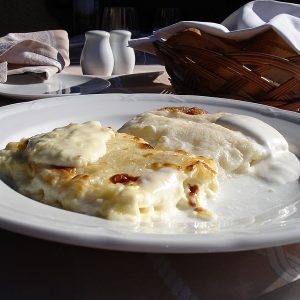
Become an Insider
Join Croatia Travel Guides' mailing list for exclusive content, tips, & giveaways.
Hello there! Welcome to Croatia Travel Guides. CTG aims to help travelers find their way for the first time in Croatia. We are your one-stop travel guide for all things Croatia.
- Things To Do
- Food and Culture
- Where To Go
- Where To Stay
- Travel Guides
- Privacy Policy
- Disclaimer and Disclosure
Copyright © 2024 Croatia Travel Guides · Theme by 17th Avenue
Copyright © 2024 · Mia on Genesis Framework · WordPress · Log in
Best Time to Visit Croatia: For Good Weather and More!
Adventurous Kate contains affiliate links. If you make a purchase through these links, I will earn a commission at no extra cost to you. Thanks!
When’s the best time to visit Croatia? You deserve a fantastic trip to Croatia — and that includes timing your trip perfectly! Croatia is one of the most beautiful bucket list destinations in all of Europe.
Croatia is one of my all-time favorite countries, and I’ve spent months traveling the country extensively. Not every time of year in Croatia is the same, and you’ll have a lot more fun in September than January.
Most people travel to Croatia in the summer months — and for good reason. Croatia has arguably the most beautiful coastline on the planet, with roads curving around mountains, tiny white stone villages topped with orange roofs, and hidden pebble beaches leading to bright teal water. Summer in Croatia is like turning the volume up to 11.
But summer isn’t the only option in Croatia. For certain kinds of travelers, the shoulder season might be even better for you than summer.
You can have fun in Croatia year-round! Even in January! But a lot of what makes Croatia wonderful — swimming in the Adriatic, hiking through national parks, dancing at music festivals — is very seasonally dependent.
Read on for the best time of year to visit Croatia!
Table of Contents
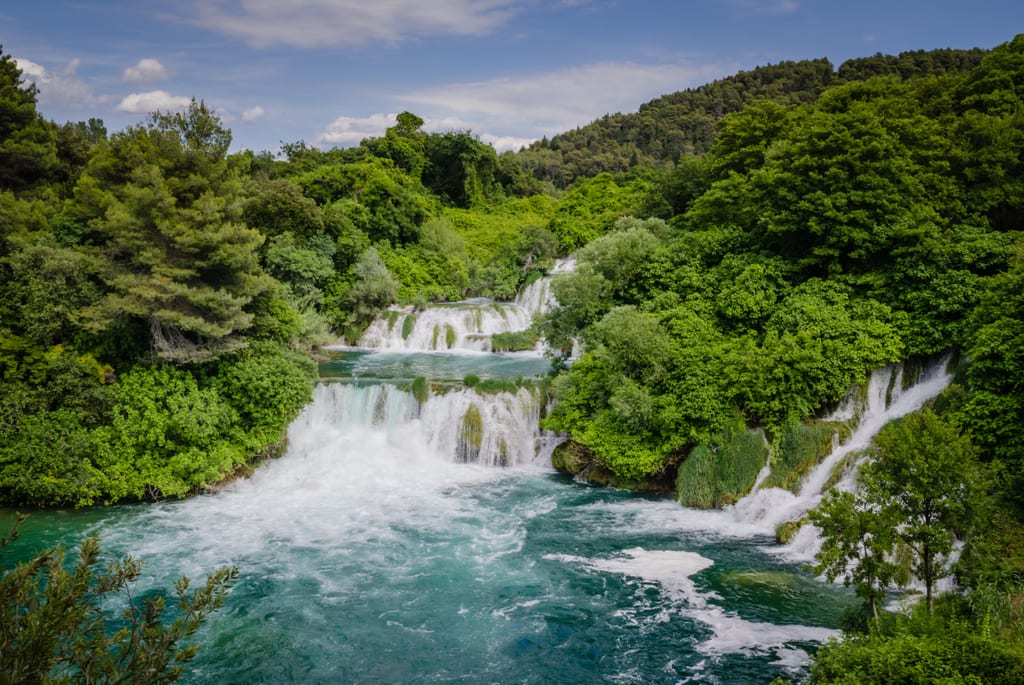
Best Time to Visit Croatia
Most travelers come to Croatia during the summer months to enjoy the beaches and islands. And while peak summer can be a bit too busy, you can enjoy yourself in the shoulder season as well.
Most people visit Croatia during the summer months , from June through September, so they can enjoy the beaches, islands, and warm days with very little rain.
In my opinion, September is the best month to visit Croatia , ideally late September. You get summer weather, fewer crowds, and the water is much warmer than in June.
You can visit Croatia year-round with kids . The summer months are your best options for a beach holiday, but spring and fall are excellent times for exploring Croatia’s culture.
Dubrovnik is best in June and September , when the weather is warm and summer-like but there are far fewer large cruise ships and tourists.
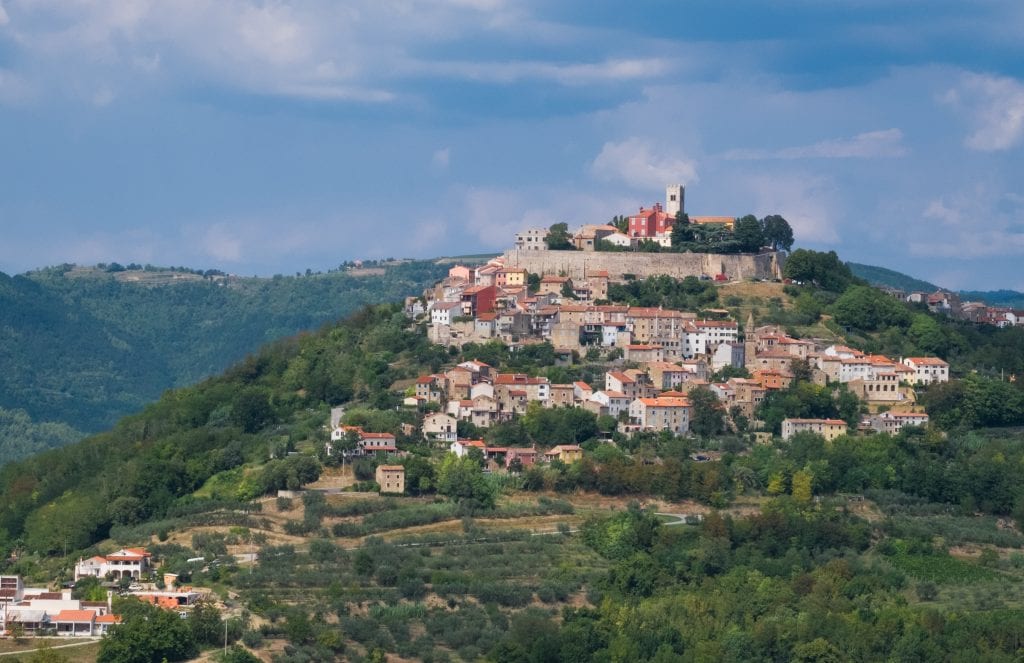
Croatia Weather
Croatia has an Adriatic climate, generally speaking, which is not surprisingly quite like a Mediterranean climate. Even so, the country doesn’t have one universal climate. There is a lot of variation within the country when it comes to weather.
Most Croatia travelers come to visit the Dalmatian coast in southern Croatia — including places like Dubrovnik, Hvar , and Split. This is the warmest and sunniest part of Croatia with a long summer season that runs from late May to early October.
Istria, the Italian-flavored peninsula in Croatia’s northwest, isn’t quite as sunny or as warm as Dalmatia, but you still have hot summers with slightly cooler springs and falls and a shorter summer season overall.
Zagreb is further inland and it can get both quite hot and quite cold here — and it snows most winters. Shoulder season is when Zagreb is at its best.
Slavonia, the off-the-beaten-path region in the far northeast, has more extreme temperatures than the rest of the country. Expect stiflingly hot summers and bitterly cold winters.
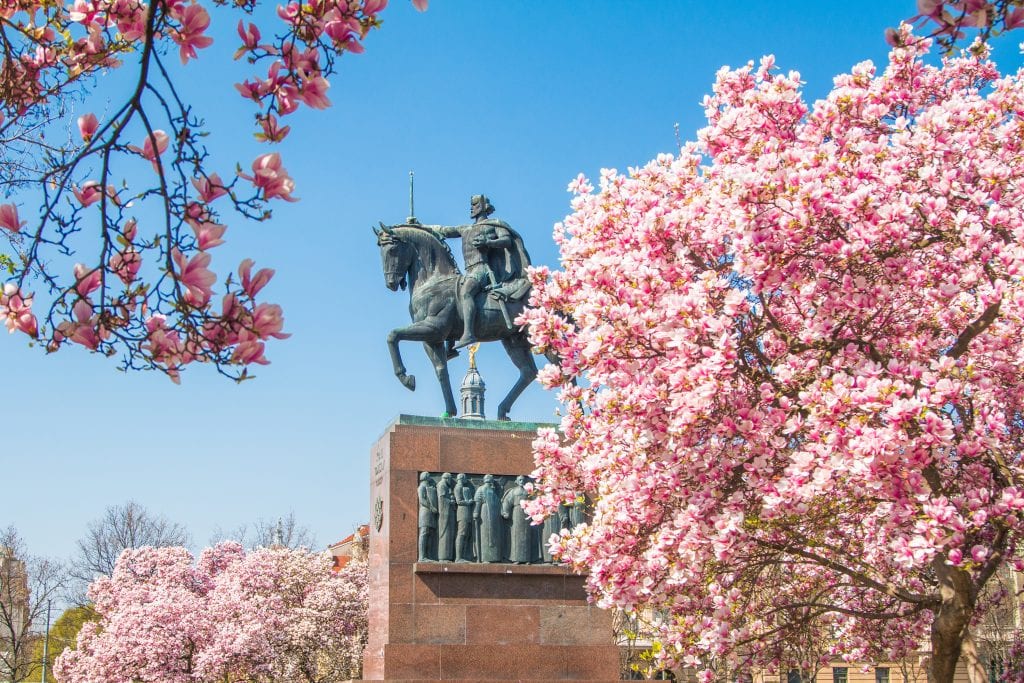
Spring in Croatia
Spring is when Croatia bursts into bloom. The weather starts to warm in early March in Dalmatia and later March in regions further north like Istria and Zagreb. Flowers dot the landscape in April and continue into May, making it a beautiful time to visit Croatia.
Croatia is a deeply religious country and Easter is the major holiday of the spring. Many Croatians take Easter week as a mini-holiday to enjoy the coast before the tourists arrive. Spring is also a popular time for cultural festivals.
Spring can be a particularly nice to visit the Plitvice Lakes and Krka National Park, as the waterfalls are extra flush with snowmelt.
Spring in Croatia lasts until late May. By that point, Jadrolinija (Croatia’s ferry line) starts up its summer schedule and people will be sunning on the beach in Dalmatia. The heat slowly creeps northward.
Overall, spring can be a lovely time to experience a beautiful and warm Croatia without the tourist crowds — but I would recommend visiting in April or May rather than March.
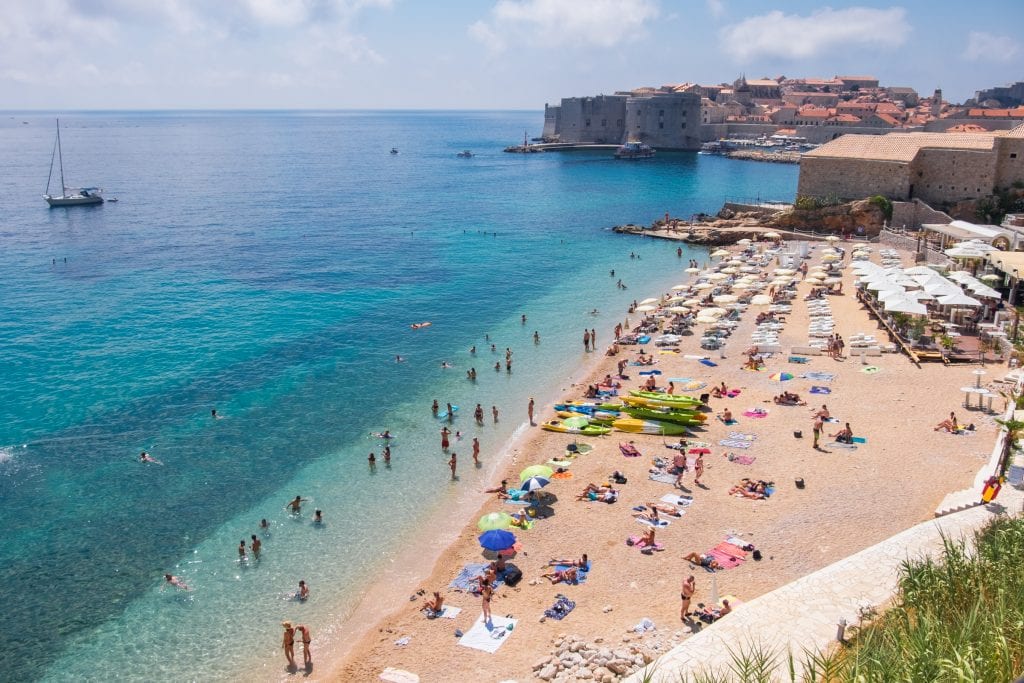
Summer in Croatia
Summer in Croatia is a sizzling time of year. This is when the Adriatic Coast comes to life! Summer is what most travelers have in mind when they visit Croatia, and summer is when Croatia receives most of its tourists from abroad.
Summer is a wonderful time to visit the Dalmatian Coast because it’s sunny and hot with very little precipitation. However, there tends to be one mega-thunderstorm once every summer, so know that it could happen during your visit! (I was in Pelješac for the 2020 storm. It rained so hard it felt like the world was ending. But a few hours later it was over!)
Summer is also when cruise ships are at their peak — particularly in late June, July, and August. Dubrovnik’s old city in particular is crammed with cruise ship tourists during the day, and for this reason I recommend avoiding the old city during the heat of summer days and sticking to visiting at dusk and at night.
Summer can also be quite hot in inland parts of Croatia, like Zagreb and the Slavonia region. Summer also brings tourists to the coastal areas of Istria, which don’t have quite as long a season as those in Dalmatia, so tourism is a bit more condensed here.
Summer brings you the Croatia of your dreams — but because it’s so busy, it’s a good idea to plan your trip ahead of time, especially accommodation, which can book out quickly. I find that early June and late September are better times to enjoy the best of Croatia’s summer while avoiding the worst of the crowds.
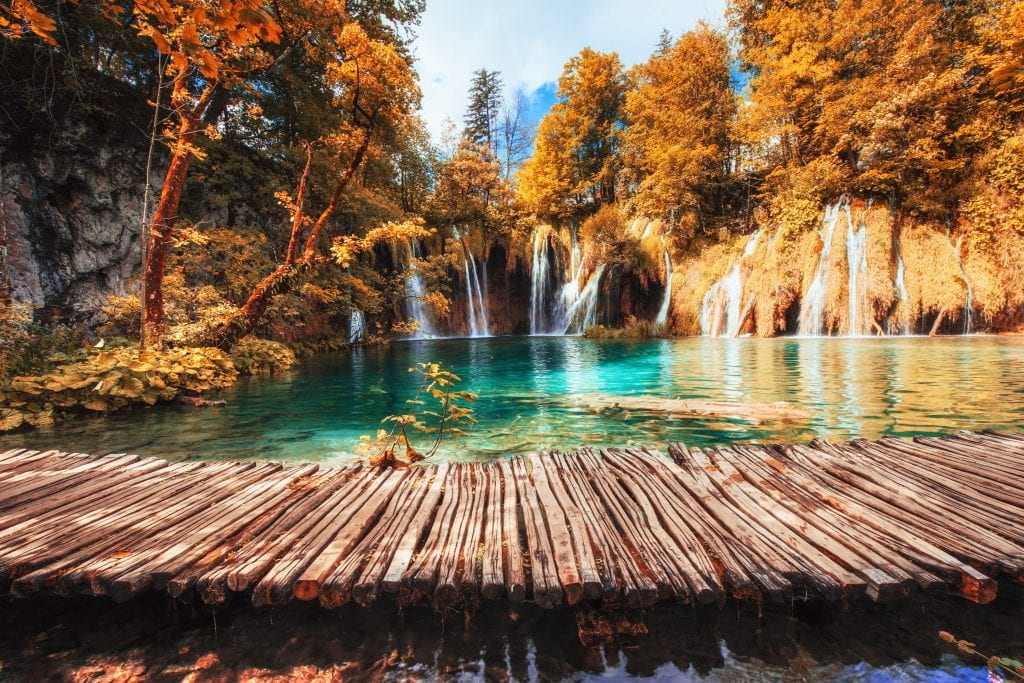
Fall in Croatia
Fall in Croatia — or autumn in Croatia — varies quite a bit based on where you are. In Dubrovnik, you’re enjoying summer weather into October; in Zagreb, Motovun, and Slavonia, October is when things start to get chilly. Either way, it can be a welcome relief from the summer heat and tourist crowds.
When does fall begin in Croatia? Usually in October, as September is still very much the summer months. The further north you go, the earlier the fall begins.
Croatia does get some fall foliage, and this can be a beautiful time to photograph the Plitvice Lakes and other national parks.
Fall is especially a wonderful time to visit Istria, where you can enjoy the bounty of the harvest, truffle hunting, and newly released wines.
Fall can also be a rainy time in Croatia and the rainiest months of the year are November and December. Make sure you bring your umbrella and have a plan for when the sun isn’t shining!
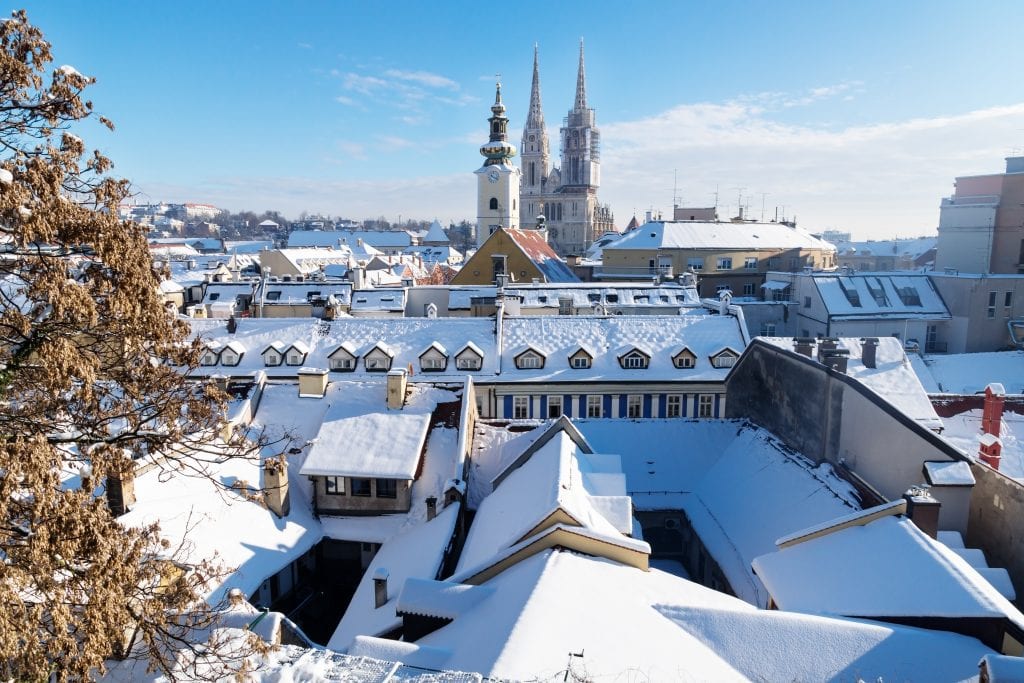
Winter in Croatia
From December through February, Croatia is engulfed in the winter months. In Zagreb, Slavonia, and mountainous parts of Croatia, you can see snow. In warmer parts of the country, like Dalmatia, you’ll have chilly temperatures and rain. It snows in Dubrovnik once in a blue moon.
Is winter a good time to visit Croatia? Generally, I don’t recommend it.
The exception would be if you’re spending time exploring Zagreb, which of course is a year-round city; visiting the Plitvice Lakes to photograph them in the snow; or perhaps spending time in a city like Zadar, which is very quiet but not shut down.
That said, there are a few big winter events in Croatia that deserves mention: Carnival, or Maškare , which takes place mostly in February, and Advent in Zagreb , Zagreb’s Christmas market celebration that lasts the full month of December. Both of these events are well worth your time.
Just understand that visiting Croatia in the winter is a very different experience.
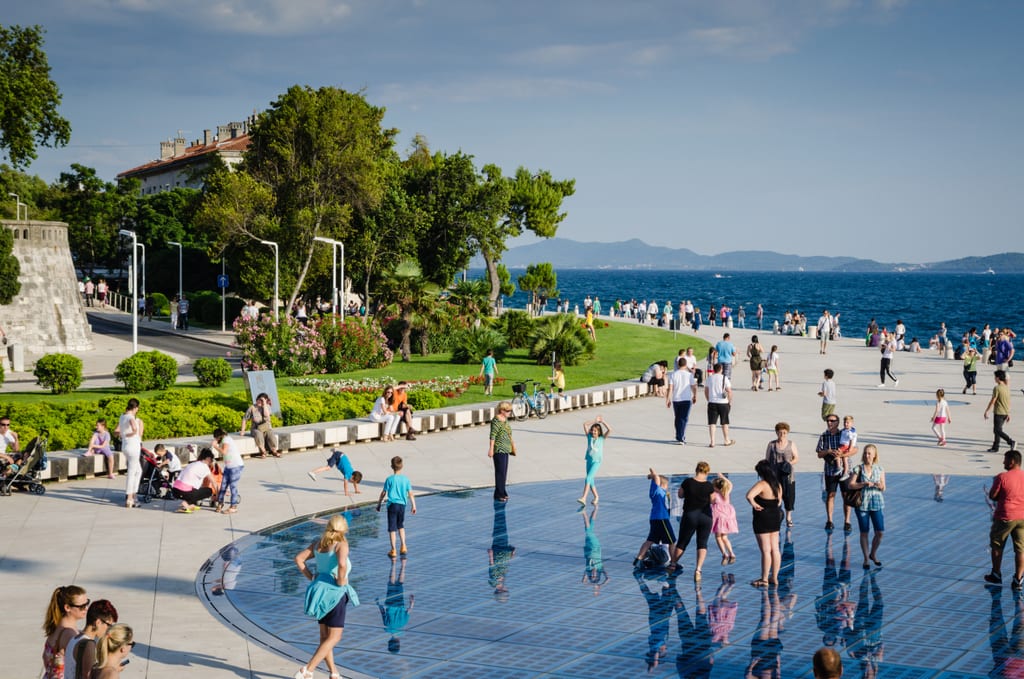
High Season and Low Season in Croatia
High season in Croatia is during the summer months, particularly in Dubrovnik and along the Dalmatian coast, from June through September. This is when prices and temperatures are at their highest and crowds are at their worst.
The absolute peak of high season in Croatia is during the months of July and August, and these months are when most of the cruise ships are docked in ports. While June and September are still technically considered high season, there is a world of difference in crowd levels in places like Split and Dubrovnik.
Shoulder season in Croatia is April to May and late September to October. During this time you have decent prices, few crowds, and zero cruise ships. Most resorts along the Dalmatian coast operate from May through October.
If you’re looking for more of a cultural trip and less of a lie-on-the-beach trip, this can be an excellent time to travel in Croatia. Shoulder season is also my favorite time to travel in Zagreb, Istria, and Slavonia.
Low season in Croatia is during the cold months of the year, from November through March. There are deals to be had during these months, particularly in the larger cities, but much of the Dalmatian coast and more resort-y towns and islands mostly shut down.
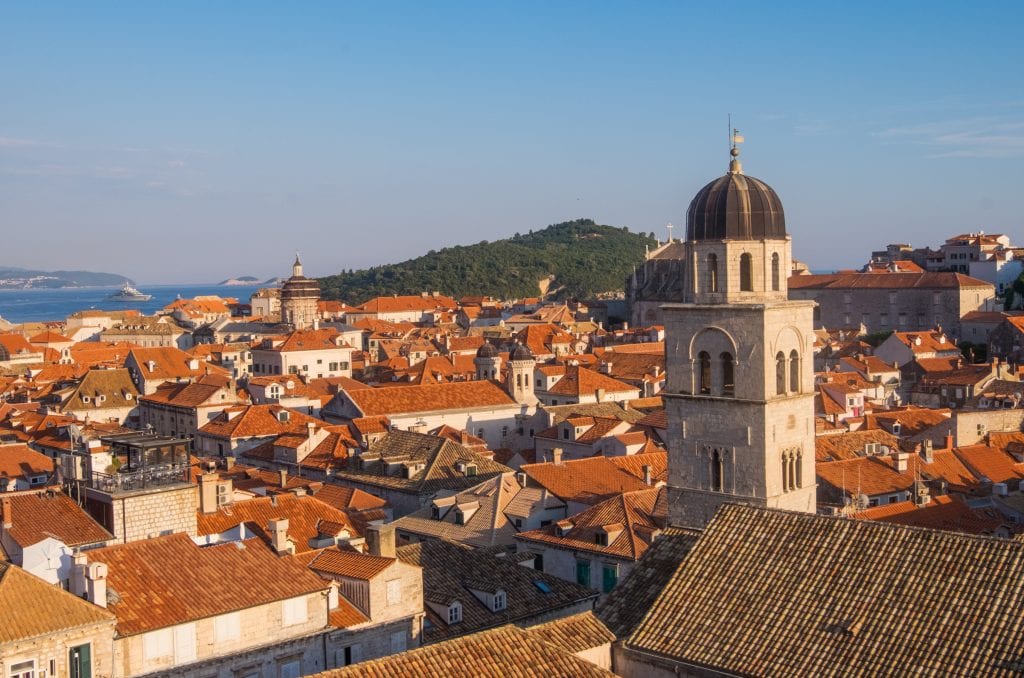
Best Time to Visit Dubrovnik, Zagreb, Rovinj, and More
Croatia may be a small country, but the weather can vary quite a bit. One of my favorite experiences in Croatia is driving from the Zagreb area to Split and the Dalmatian coast, because you drive through mountains under a cloudy sky, go through an enormous tunnel, and when you come out, it’s bright and sunny, like you’ve entered a new country!
That’s how different Dalmatia is — and that’s how different Croatia’s climates can be.
Best Time to Visit Dubrovnik
Dubrovnik is one destination in Croatia where I recommend timing your trip with precision, and the best time to visit Dubrovnik is during September or October. During these months you’ll enjoy warm weather and beach time, and the water will be warm enough for swimming, but you’ll avoid the worst of the cruise ship crowds that arrive in July and August.
Late May and June is another nice time to visit Dubrovnik, but the water won’t be as warm for swimming. If you’re not a swimmer, or you don’t mind cold water, go ahead! You might actually enjoy that more than September.
Dubrovnik Summer Festival takes place during July and August and features concerts, performances, and events in and around the city.
Good Food Festival , either in late September or early October, is a fabulous food celebration in Dubrovnik.
Winter in Dubrovnik is extremely local and very quiet. Locals celebrate the Feast of St. Blaise, Dubrovnik’s patron saint, on February 3 with performances, costumes, and dancing.
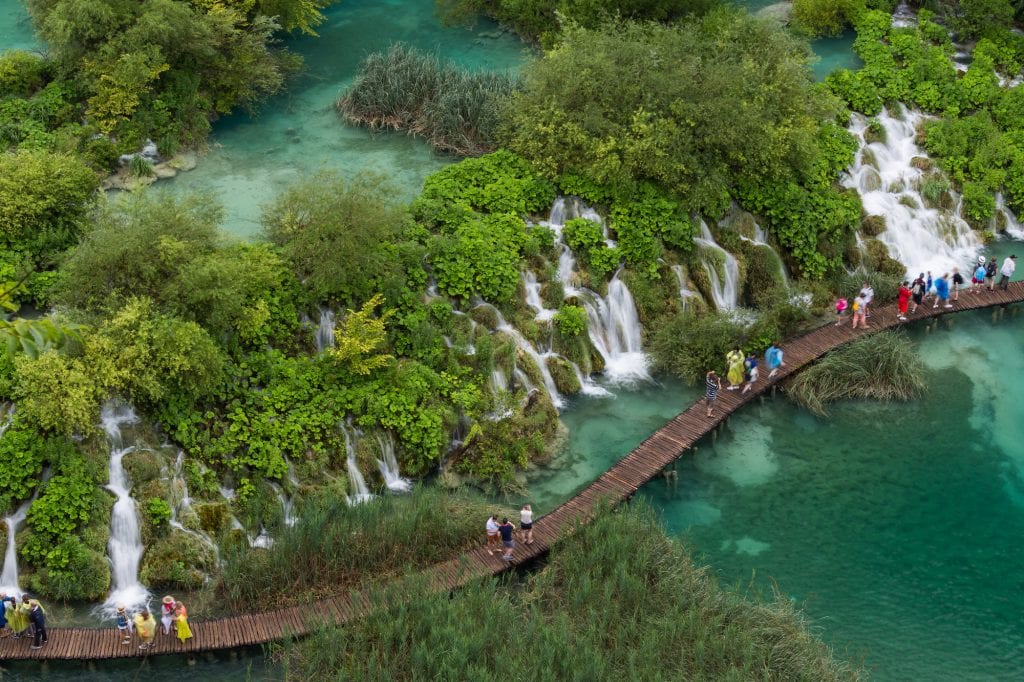
Best Time to Visit Plitvice Lakes
The Plitvice Lakes with their iconic waterfalls are one of the most stunning natural sights in all of Croatia. And because of that, they are a joy to photograph year-round!
In the spring you get extra-flush waterfalls due to snowmelt, plus flowers and budding trees. In the summer you get full, lush greenery. In the fall you get changing colors. And if you time your visit right in the winter, you can experience snow and frozen waterfalls — images that are coveted among many nature photographers.
No matter what time of year you visit, be sure to dress for the weather. The Plitvice Lakes aren’t outfitted with many indoor stations to take a break from the outdoors.
Like the rest of Croatia, July and August are the busiest months at the Plitvice Lakes and host lots of cruise ship shore excursions. It can get very crowded during this time, particularly at the Lower Lakes, so if you’re looking to avoid the worst of the crowds, I would recommend avoiding these two months.
And if you enjoy the Plitvice Lakes, don’t miss Krka National Park !
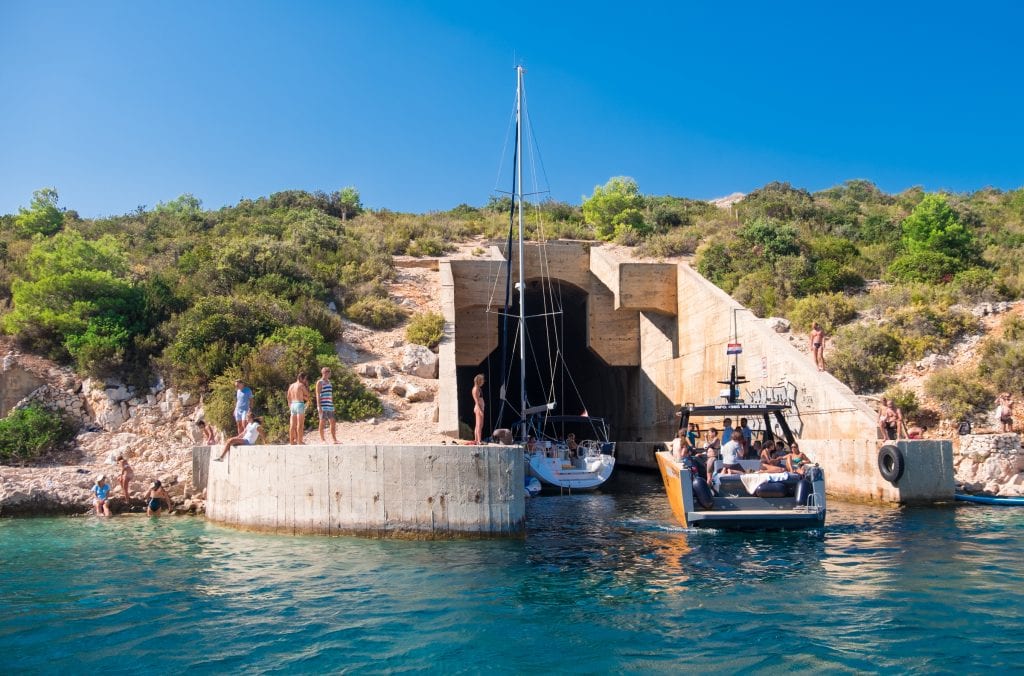
Best Time to Visit the Dalmatian Coast
The Dalmatian coast is blessed with a long and languorous high season. Summer is when this part of Croatia is at its best. You can enjoy summer-like temperatures from late May through early October (though the water is much warmer in September than June).
Whether you’re visiting the relaxing city of Zadar or the endlessly interesting island of Korčula , enjoying the forests and saltwater lakes of Mljet or hiding away in remote Vis, there is plenty to enjoy along the Dalmatian Coast in the summer.
However, I recommend avoiding July and August if possible. This is when tourism is at its peak along the Dalmatian Coast, and some destinations like Dubrovnik are overrun with cruise ship tourists.
My personal favorite month to visit the Dalmatian coast is September.
Shoulder season can be a nice time to visit the Dalmatian coast, but know that some places are going to be closed. I recommend sticking to April, May, and October — months when places are a bit more likely to be open.
In the winter, much of the Dalmatian coast shuts down. Accommodation closes, restaurants close, and ferries run less often. Honestly, I don’t see much of a reason to visit the Dalmatian coast during this time of year.
Split has a lot of festivals. April brings Gast Fair , Croatia’s largest culinary festival. May brings the Feast of St. Dominius, Split’s patron saint, and lots of celebrations leading up to it. Mediterranean Film Festival Split takes place each July. Split Summer Festival is similar to Dubrovnik Summer Festival and brings all kinds of concerts and performances in July and August.
In Ston on the Pelješac peninsula, the Festival of Oysters takes place on March 18, St. Joseph’s Day, and features lots of delicious oysters and wine. The mainland town of Šibenik celebrates Supertoon in July, a festival of animation. See below for more on music festivals.
The island of Korčula celebrates the Sword Dance Festival in June.
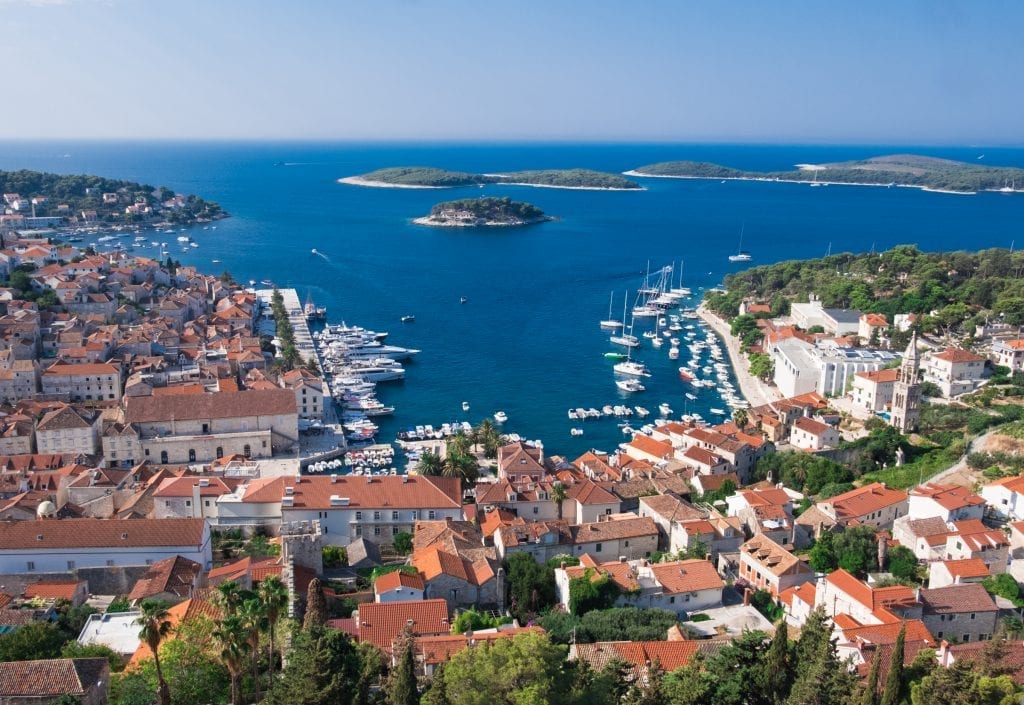
Best Time to Visit Hvar
Being on the Dalmatian Coast, Hvar is blessed with blissful summers — and locals like to say it’s the sunniest island in Europe. Hvar is very much a summer destination, but here summer can extend from late May into early October.
If all you’re looking for is sunshine and warmth, anytime between late May and early October is lovely.
If you’re looking to see Hvar’s famous lavender fields, aim for late June or early July. Lavender has a short season in Hvar.
But if you’re looking to visit Hvar specifically for the party scene, as many travelers do, the season is at its peak in July and August. You’ll pay in terms of crowds and prices, but that’s why you’re here, isn’t it? Being a party person in Hvar comes with a price tag.
In terms of festivals, Hvar celebrates the Feast of St. Prosper, its patron saint, on May 10 with traditional celebrations and a feast. Hvar Summer Festival puts on concerts, events, and performances throughout July and August.
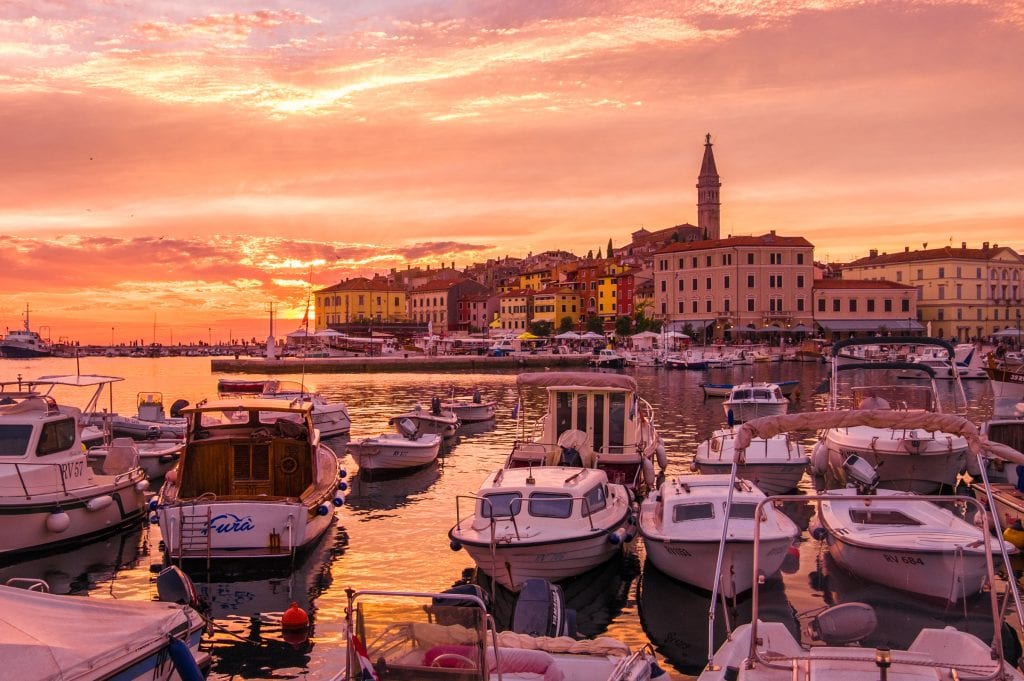
Best Time to Visit Rovinj and Istria
Most people visit Istria in the summer months, and like the Dalmatian coast, summer can be a wonderful time to visit Istria and cities like Rovinj and Motovun. But Istria is not as warm as Dalmatia, nor as sunny as Dalmatia, and the season doesn’t last as long.
If you’re looking to experience summer in Istria, I recommend aiming between mid-June and late September. Know that tourism will be at its peak in July and August.
But shoulder season is another wonderful time to visit Istria — you can visit quiet beach villages and interesting hill towns, all without the high temperatures or peak crowds.
Istria was once part of Italy, feels a lot like Italy, and has many of the same qualities that make Italy great — including a wonderful harvest season. For that reason, visiting Istria during the fall months can be a lot of fun.
Winter in Istria is quiet, particularly in resort towns.
Some festivals to keep in mind for Istria: Rovinj celebrates a three-day Easter Food Festival just before the holiday; the renowned Motovun Film Festival takes places in late July or early August; the Pula Film Festival takes place in July.
The Visualia Festival in Pula takes places in September, with light installations throughout the city; and Zigante Truffle Days in Livade, near Motovun, has events from September through November. Marunada , a celebration of chestnuts, takes place in Lovran, near Opatija, in October.
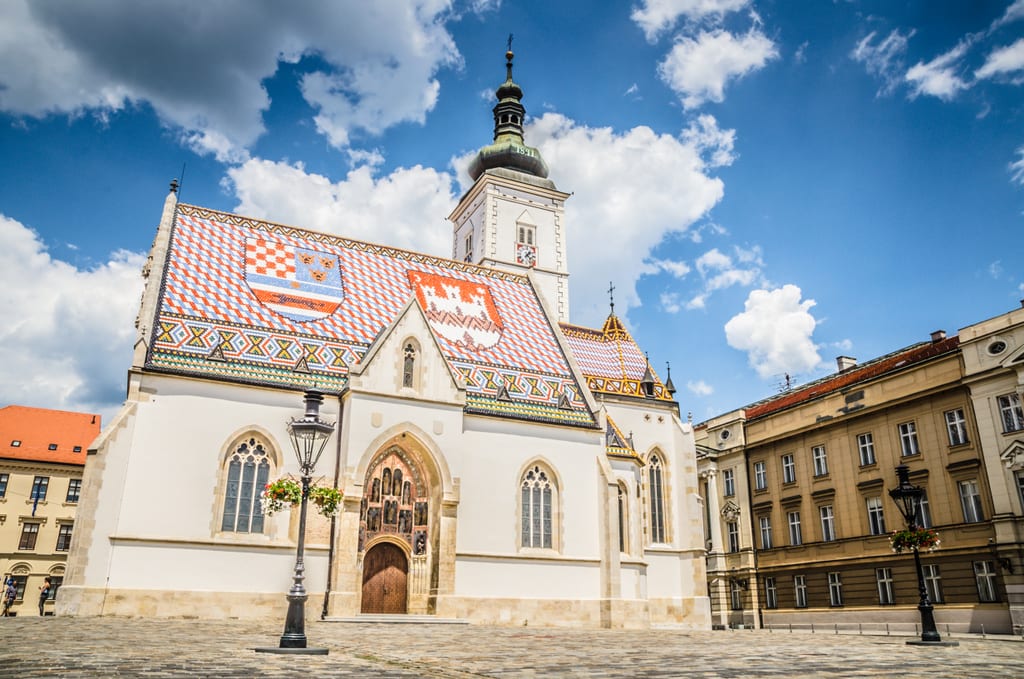
Best Time to Visit Zagreb
Zagreb is Croatia’s largest city, home to 800,000 people. As a result, this city is vibrant year-round. Zagreb has the most tourists in the summer, but it’s nowhere near the level of tourism in Rovinj, Split, or Dubrovnik.
Personally, I think the best time to visit Zagreb is during the shoulder season — April, May, October — to enjoy nice temperatures and city life.
Keep in mind that Zagreb gets much colder than the Dalmatian coast and gets snow in the winter!
March brings the Zagreb Festival of Lights , with light installations over the city. July brings the International Folklore Festival , one of the biggest celebrations of the year.
September brings the International Puppet Festival , with both Croatian and international artists showcasing their craft. Zagreb Film Festival usually takes place in early November.
Perhaps most impressive, though, is Advent in Zagreb — Christmas market season. Zagreb goes all out with decorations, art installations, an ice rink, and food stands featuring traditional Croatian Christmas treats. Unlike Christmas markets in other parts of Europe, this market lasts until January 1 rather than December 23.
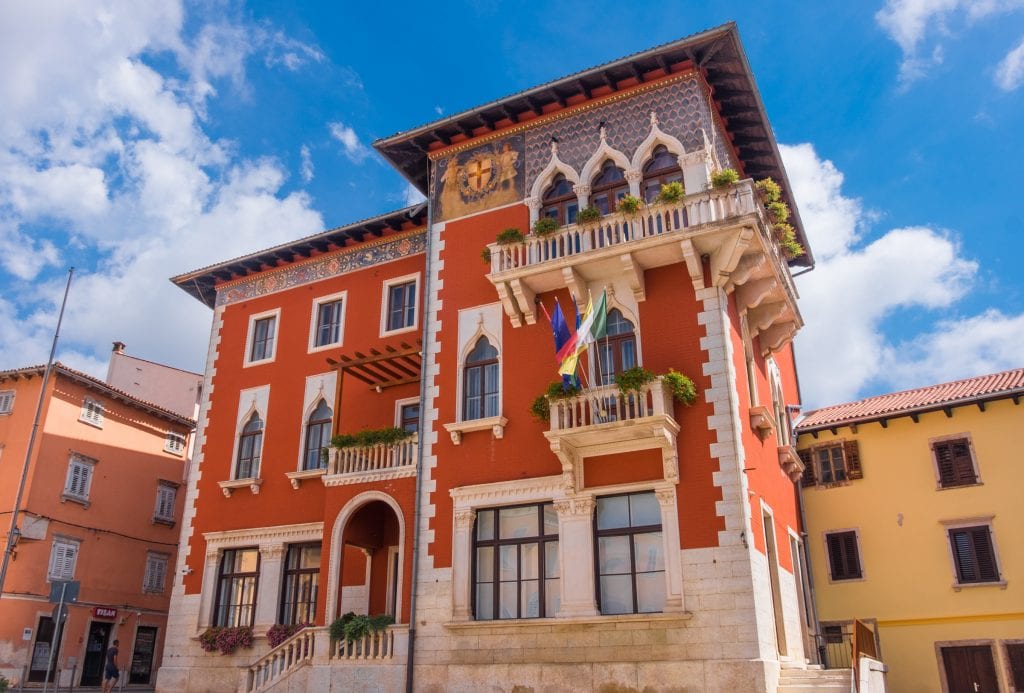
Best Time of Year to Visit Croatia
What is the best month to visit Croatia? Check out the overview here and find out which month is best for you.
January in Croatia
January is when you get the lowest temperatures of the year in Croatia. It will be cold, but there will be few other tourists around, and you’ll have many attractions to yourself — if they’re open, that is.
Some Carnival, or Maškare , celebrations begin in mid-January — particularly in the big Carnival cities like Rijeka.
Temperatures in Zagreb in January average from a low of 28 F / -2 C to a high of 37 F / 3 C.
Temperatures in Dubrovnik in January average from a low of 43 F / 6 C to a high of 54 F / 12 C.
February in Croatia
February is another similar month to January, with low temperatures and few tourists, but that’s okay — this month is when Carnival is at its peak!
Carnival, or Maškare , culminates in February with big celebrations. This is the time for costumed parades and parties. While Rijeka is the undisputed best place to celebrate Maškare, every place in Croatia puts their own spin on it in February.
Dubrovnik marks the Feast of St. Blaise, the city’s patron saint, on February 3 with local events and celebrations.
Temperatures in Zagreb in February average from a low of 32 F / 0 C to a high of 43 F / 6 C.
Temperatures in Dubrovnik in February average from a low of 43 F / 6 C to a high of 55 F / 13 C.
March in Croatia
March is when Croatia starts waking up to spring, with warming temperatures the first appearances of wildflowers. Like many countries, Croatia starts out firmly in winter and emerges into spring.
The Zagreb Festival of Lights takes place in March, with bright light installations representing the arrival of spring and a time of rebirth. In Ston on the Pelješac peninsula, the Festival of Oysters takes place on March 18, St. Joseph’s Day.
Temperatures in Zagreb in March average from a low of 37 F / 3 C to a high of 52 / 11 C.
Temperatures in Dubrovnik in March average from a low of 46 F / 8 C to a high of 57 F / 14 C.
April in Croatia
April is the first official full month of spring. Easter is a major holiday in Croatia and many Croatians take this time to travel domestically. International tourists begin trickling into Croatia in mid-to-late April.
In the days before Easter, Rovinj hosts an Easter Food Festival . Keep in mind that some years this can be in March. Enjoy traditional Istrian Easter dishes, listen to traditional brass bands, and enjoy chocolate eggs! In April, Split hosts Gast Fair , Croatia’s largest culinary festival.
Temperatures in Zagreb in April average from a low of 46 F / 8 C to a high of 61 F / 16 C.
Temperatures in Dubrovnik in April average from a low of 52 F / 11 C to a high of 63 F / 17 C.
May in Croatia
Early May and late May have very different feelings in Croatia. Early May is still firmly in spring with lots of flowers, and by late May, it feels like summer. Tourists are pouring in, hotels have raised their prices, and ferries are running on their summer schedule.
May 7 brings the Festival of St. Dominius, Split’s patron saint, and Split goes all out in celebrations.
Temperatures in Zagreb in May average from a low of 54 F / 12 C to a high of 70 F / 21 C.
Temperatures in Dubrovnik in May average from a low of 57 F / 14 C to a high of 70 F / 21 C.
June in Croatia
Hello, summertime! June is undisputedly the kick-off of summer throughout Croatia. Expect the crowds to swell and temperatures to get fiercely hot.
While you can see Moreška sword dancing throughout the summer in Korčula, June hosts the Sword Dance Festival . Dancers from all over Korčula and other islands come together to compete and perform.
Temperatures in Zagreb in June average from a low of 57 F / 14 C to a high of 75 F / 24 C.
Temperatures in Dubrovnik in June average from a low of 64 F / 18 C to a high of 77 F / 25 C.
July in Croatia
Hot, sweaty, and incredibly crowded. July in Croatia brings long days, lots of sunshine, and the most tourists of the year.
July is festival season in Croatia! Zagreb hosts the International Folklore Festival , featuring traditional music performances all over the city in traditional costume. Šibenik celebrates Supertoon , a festival celebrating animation, in July.
July is a big month for film festivals: Motovun Film Festival , Pula Film Festival , and Mediterranean Film Festival Split all take place in July.
July is also a big month for music festivals: see the music festivals section here .
On the Dalmatian Coast, Dubrovnik Summer Festival , Split Summer Festival , and Hvar Summer Festival bring concerts, events, and performances throughout the month of July.
Temperatures in Zagreb in July average from a low of 61 F / 16 C to a high of 77 F / 25 C.
Temperatures in Dubrovnik in July average from a low of 70 F / 21 C to a high of 84 F / 29 C.
August in Croatia
Yet another month of peak travel in Croatia. August is incredibly hot and one of the most crowded months of the year.
Music festivals continue into August. See the music festivals section here .
On the Dalmatian Coast, Dubrovnik Summer Festival , Split Summer Festival , and Hvar Summer Festival bring concerts, events, and performances throughout the month of August.
Temperatures in Zagreb in August average from a low of 61 F / 16 C to a high of 77 F / 25 C.
Temperatures in Dubrovnik in August average from a low of 70 F / 21 C to a high of 82 F / 28 C.
September in Croatia
Welcome to the sweet spot. September is my personal favorite month fo the year in Croatia, where you can enjoy summer temperatures, warm water, and far fewer tourists than July or August. Early September is still busy (though most families have left), but late September, particularly in Dalmatia, is warm, airy, and divine.
September brings Visualia Festival in the Istrian city of Pula, where light shows take place all over the city and the cranes at the water’s edge light up in bright colors. Zagreb hosts the International Puppet Festival . Zigante Truffle Days in Livade, near Motovun, has events beginning in September.
Temperatures in Zagreb in September average from a low of 55 F / 13 C to a high of 70 F / 21 C.
Temperatures in Dubrovnik in September average from a low of 64 F / 18 C to a high of 77 F / 25 C.
October in Croatia
October can vary quite a bit through Croatia. In Dalmatia, early October feels like an extension of summer, but as you head further north, it’s a time for pleasantly cool temperatures, a bit more rainfall, and the food harvest.
Good Food Festival takes place in Dubrovnik (though occasionally in September). Zigante Truffle Days in Livade, near Motovun, has events throughout October. Marunada , a celebration of chestnuts, takes place in Lovran, near Opatija in Istria, in October.
Temperatures in Zagreb in October average from a low of 46 F / 8 C to a high of 59 F / 15 C.
Temperatures in Dubrovnik in October average from a low of 57 F / 14 C to a high of 70 F / 21 C.
November in Croatia
November is when it cools down throughout the country — and it’s also at its rainiest time of year. You can enjoy some clear days in November, but be prepared for all kinds of weather.
Zagreb Film Festival usually takes place in November. Zigante Truffle Days in Livade, near Motovun, has events concluding in November.
Temperatures in Zagreb in November average from a low of 37 F / 3 C to a high of / 48 C.
Temperatures in Dubrovnik in November average from a low of 50 F / 10 C to a high of 63 F / 17 C.
December in Croatia
Croatia has firmly cooled down by December, and there’s still some rain carryover from November. Zagreb and Slavonia might see the first snow. Christmas celebrations begin throughout the country.
Zagreb explodes with Christmas markets through the month of December for Advent in Zagreb , one of the most underrated city-wide Christmas celebrations in Europe.
Temperatures in Zagreb in December average from a low of 30 F / -1 C to a high of 39 F / 4 C.
Temperatures in Dubrovnik in December average from a low of 46 F / 8 C to a high of 57 F / 14 C.
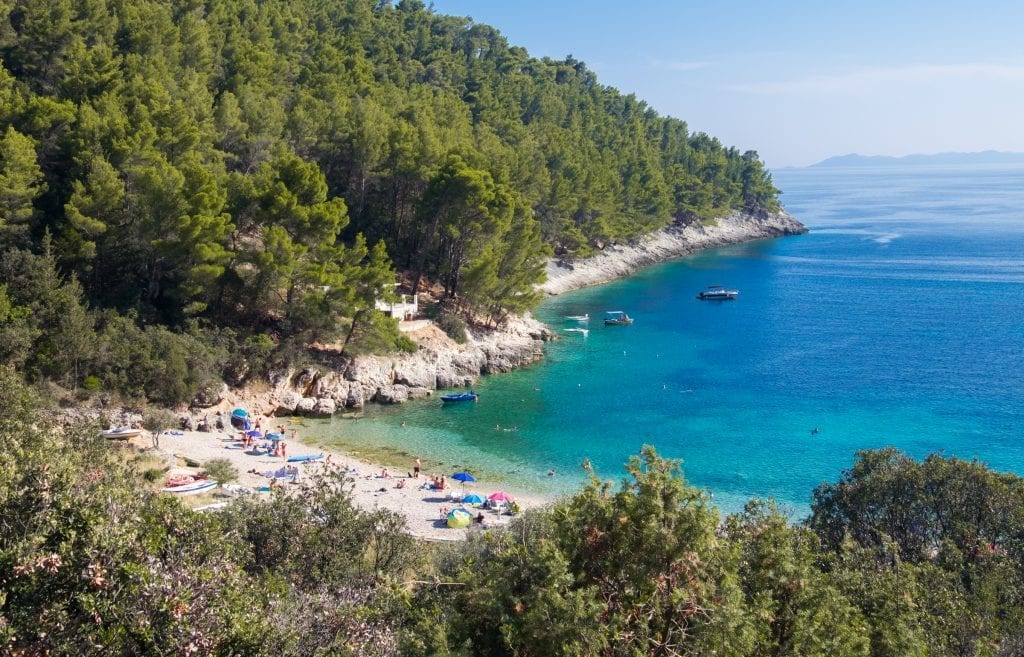
Best Time to Visit Croatia for a Beach Holiday
September would be my first choice for a beach vacation in Croatia. At this time of year you’ve got summer temperatures, yet the crowds are smaller, the cruise ships are gone, and the kids are back in school.
Croatia in September is not exactly a secret, and there will be plenty of travelers there — but it’s nowhere on the level of tourism you see in July and August. For that reason, I recommend aiming toward later in September, when things calm down even more.
Planning a beach holiday in Dalmatia? Aim for late September. Planning a beach holiday in Istria? Plan for early September, as it isn’t quite as warm there.
On the other hand, if you don’t mind water that’s a little bit on the colder side, early June can be another lovely time in Dalmatia. For Istria I’d recommend aiming for late June.
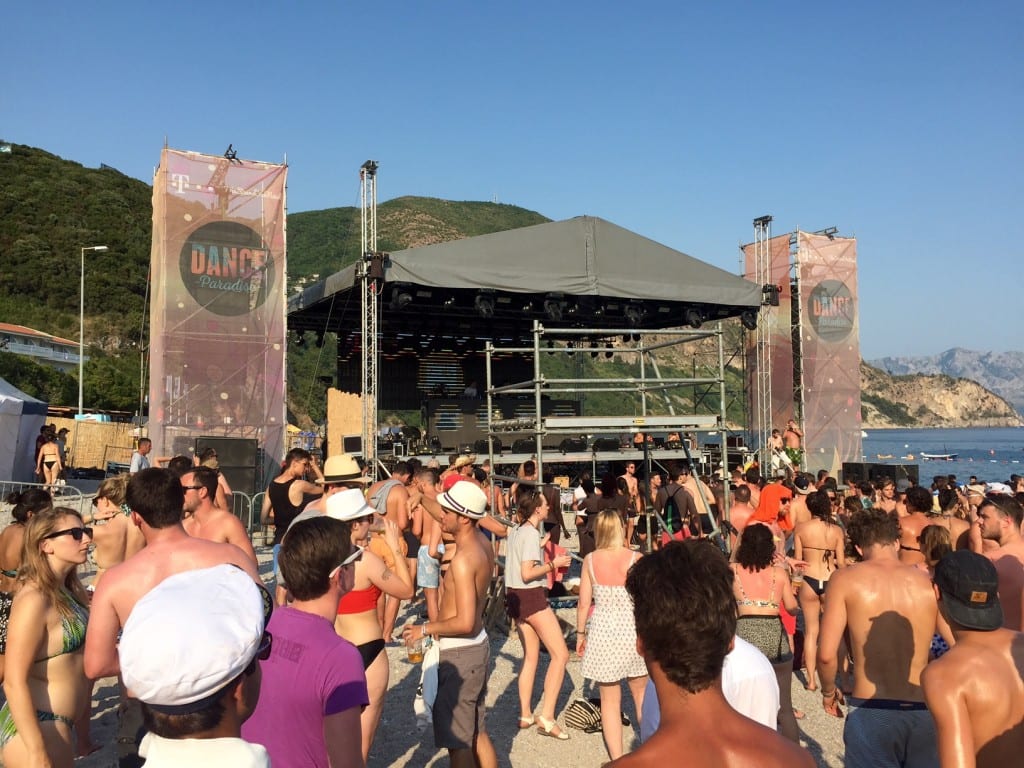
Best Time to Visit Croatia for Music Festivals
Croatia’s coastline explodes with music festivals during the summer months. If you want to hit up a festival or two, the majority of them take place in July and August.
Ultra Europe is the biggest festival with the biggest names in EDM, and it takes place in July in Split.
Umag, a seaside town in Istria, hosts Sea Star Festival in May.
Tisno, on the Dalmatian Coast near Šibenik, hosts Dimensions in July, Hospitality on the Beach in July, SuncéBeat in July, Outlook Origins in July, and Defected Croatia in August.
Zrce Beach on the island of Pag hosts Hideout Festival in June, Fresh Island Week in July and Sonus Festival in August.
INMusic is held in Zagreb in June and draws big names like The Killers.
If you’re hoping to go to music festivals in Croatia and open to a longer trip to the Balkans, consider extending your trip to EXIT in Belgrade, Serbia, and Sea Dance in Budva, Montenegro (the latter of which I quite enjoyed).
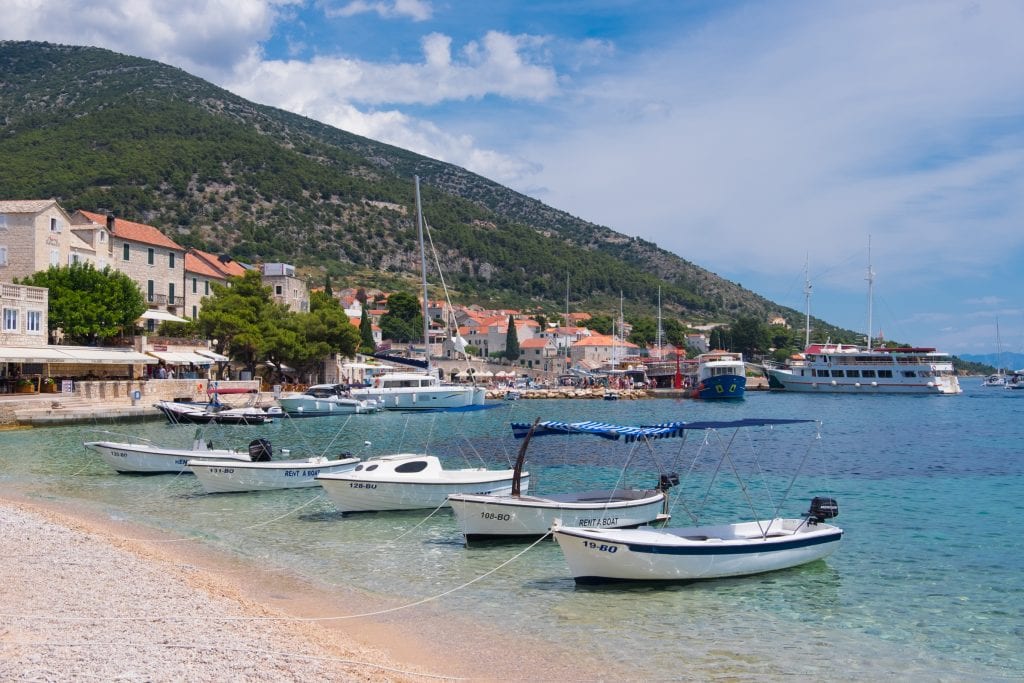
Best Time to Visit Croatia with Kids
Croatia is an extremely family-friendly destination, so don’t worry about bringing your kids to Croatia! Croatians love children and the country is set up to welcome families with kids of all ages.
Most families traveling to Croatia with kids are looking for beach time. If that’s the case for you, aim during their summer vacation. It will be crowded, but it will be easy.
You may be tempted to plan a trip in May or early June, but keep in mind that the Adriatic can be cold during these months. It spends the whole summer warming up. If your kids don’t like swimming in cold water, they probably won’t be a fan of the Adriatic in late spring.
If you’re not visiting for a beach trip, consider visiting during the spring or fall months. You’ll still have nice weather and you won’t have the complete shutdown of winter.
Finally, if you’re up for visiting in February, Carnival can be a LOT of fun for kids — especially if you hit up one of the big festivals like Rijeka.
Bonus tip: of all the places I visited in Croatia, I think the island of Brač is a great choice if you have young kids. It’s the easiest to get to (a short ferry ride from Split, the biggest air hub), and the area around Bol seems designed for families with lots of beaches, a boardwalk, and kid-friendly amenities.
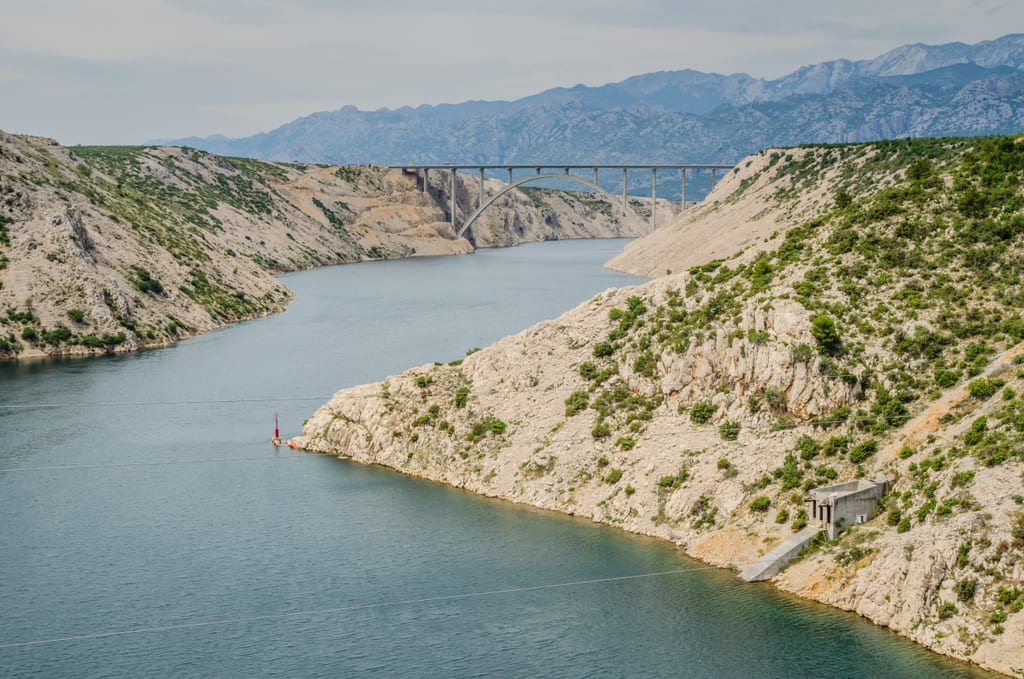
Cheapest Time to Visit Croatia
The cheapest time to visit Croatia is during the winter. This is when accommodation is at its cheapest; if you’re flying to Croatia from North America, you’ll likely find cheaper transatlantic flights.
However, keep in mind that winter in Croatia is cheap for a reason.
Much of Croatia is shut down during the winter months, from restaurants to shops to hotels. Places like the Makarska Riviera almost feel like ghost towns. Many seasonal flights in Croatia don’t run at all in winter; you may need to fly to Zagreb and drive or take public transportation from there.
It’s especially tough traveling the islands in the winter. The island population dwindles down to just the year-round locals, most of whom will wonder why you’re even there, and all the tourist-driven restaurants that the locals avoid won’t be in business.
If you’re looking to experience Croatia at a more active time of year that isn’t the heat of summer, consider April or October — not winter.
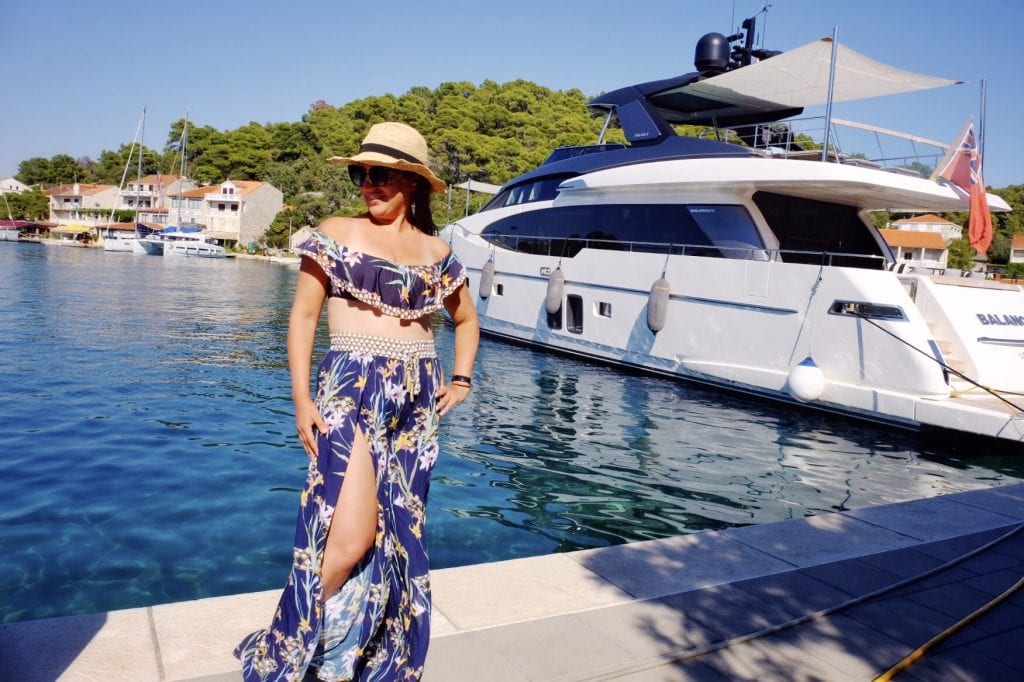
Best Time to Visit Croatia Overall
If you’ve read this far, you know what I think — the best month for visiting Croatia is September, and if you can, aim for mid-to-late September. That is the best time of year to enjoy the best of Croatia’s weather (as well as the Adriatic at its warmest temperature) while avoiding the worst crowds.
September may be golden — but there are so many wonderful times to visit Croatia. You can’t beat Zagreb in December, all decked out for Advent, or Rijeka in February, filled with costume parades, or Split in April, exploding with food festivals.
I hope you enjoy your time in Croatia, no matter what time of year you choose to visit. Then come back and tell me all about it!
Planning a Trip to Croatia:
- Two Weeks in Croatia Itinerary
- What NOT to Do in Croatia
- Solo Female Travel in Croatia: Is it Safe?
- 30 Stunning Mediterranean Islands To Visit In Your Lifetime
Croatian Islands and the Dalmatian Coast:
- How to Spend Three Days in Dubrovnik
- Why Korčula, Croatia, is the Coolest Island of All
- Vis, Croatia, is a Quietly Stunning Island
- Dubrovnik Survival Guide
- The Waterfalls of Krka National Park
- A Place Like Zadar
- 30 Fabulous Things To Do in Split, Croatia
- 29 Sunny Things To Do In Hvar, Croatia
Istria and the North:
- Guide to Rovinj, Croatia’s Prettiest City
- Places to Visit in Istria, Croatia’s Italian-Flavored Peninsula
- 21 Unforgettable Things To Do In Zagreb, Croatia
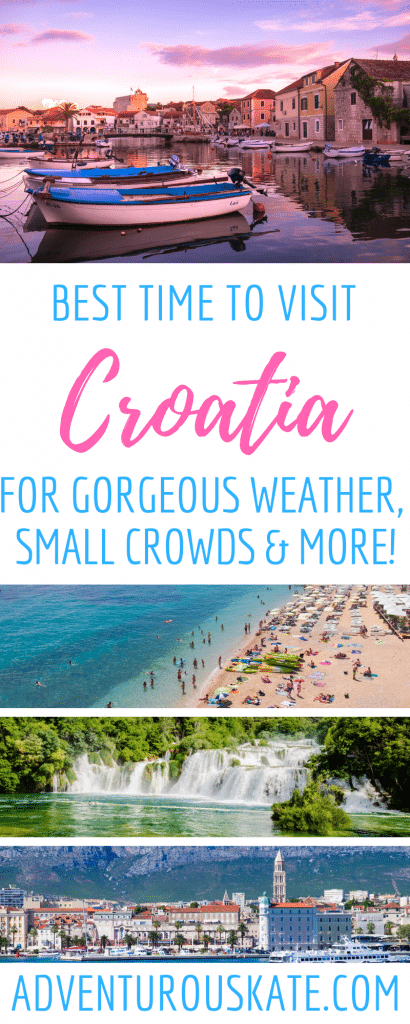
Have you been to Croatia? What time of year did you visit? Share away!
Leave a Comment Cancel Reply
Your email address will not be published. Required fields are marked *
This site uses Akismet to reduce spam. Learn how your comment data is processed .
- Destinations
- Things to Do
- Restaurants
- Art & Culture
- Music & Nightlife
- Los Angeles

The best things to do in Croatia in July
Here's your definitive guide to the best events and happenings throughout July in Croatia
Croatia really heats up in July - and we're not just talking about the weather. This midsummer month sees its famous festival scene erupt into action, as well as open-air events in the heart of Croatia's ancient cities and film festivals set under starry skies. Whether you’re seeking festival mania or your island idyll, here's our pick of the best things to do this July.
RECOMMENDED: more great things to do in Croatia.
[image] [title]
Discover Time Out original video
By entering your email address you agree to our Terms of Use and Privacy Policy and consent to receive emails from Time Out about news, events, offers and partner promotions.
🙌 Awesome, you're subscribed!
Thanks for subscribing! Look out for your first newsletter in your inbox soon!
- Work for Time Out
- Privacy policy
- Website terms of use
- Modern slavery statement
- Manage cookies
Time Out Croatia
- Advertising
- Editorial enquiries
Time Out products
- Mobile applications
- Time Out Global
Change location
- UK / International
- Call toll-free from 10am EDT
- 617-223-4521 617-223-4747 or
- REQUEST A QUOTE
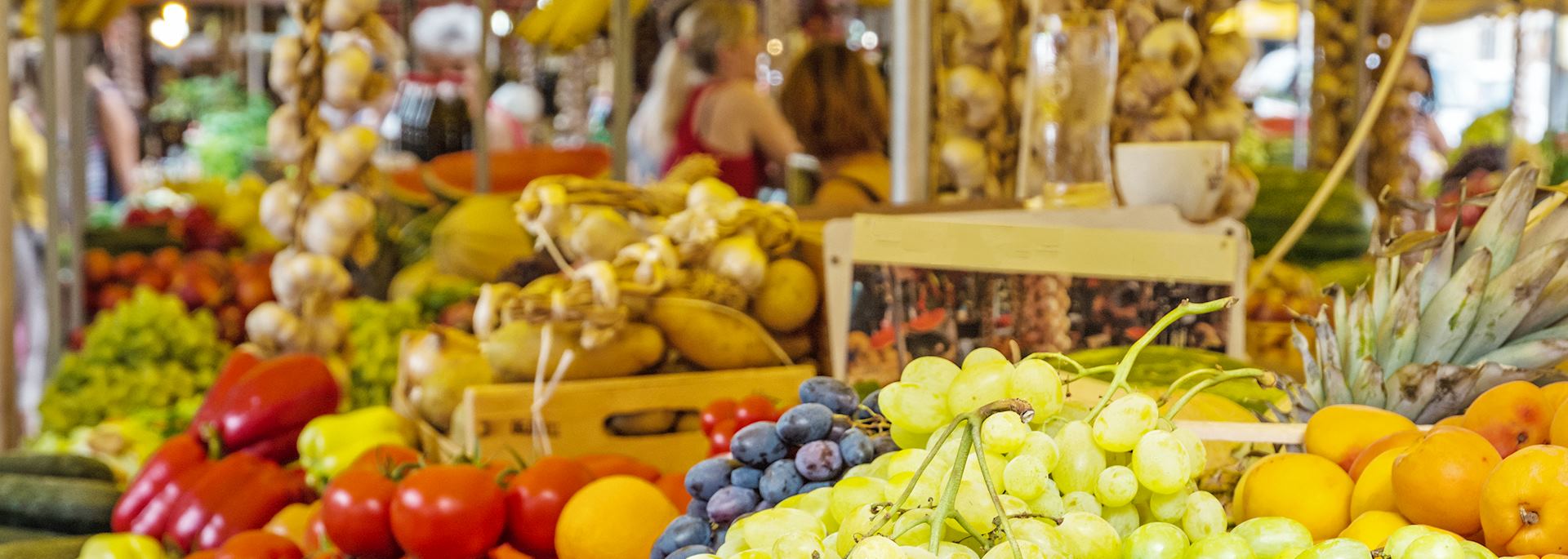
When is the best time to visit Croatia?
- Month-by-month
The best time to visit Croatia is during the summer months, from June to September, when sunlight is plentiful and temperatures are warm, between 66°F and 86°F. These conditions are ideal for boating and swimming in the blue waters around the islands.
The cooler conditions of April, May and October lend themselves to a wide range of other outdoor activities, from hiking to kayaking.
In November to March, Croatia’s winter, you can focus on Zagreb or Split when they’re at their quietest and most relaxed.
- Make an inquiry
- Request a brochure
Month-by-month guide for traveling in Croatia
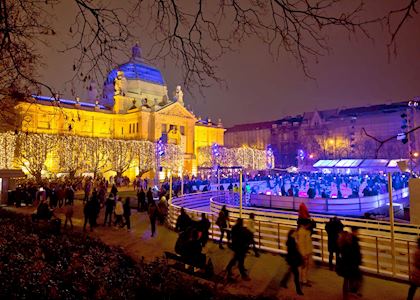
Visiting Croatia in November - April
As winter begins in Croatia, many island hotels close for the season to make their refurbishments. But, although the beaches and boat trips are off-limits, you’ll still find plenty of cultural experiences, and those hotels that stay open offer exceptional value. The winter months also present a great opportunity to enjoy the country almost exclusively with the locals.
Events & Festivals
- Carnival (January 17): Costumes ranging from medieval garb to futuristic visions are on display at this international festival celebrated in various Croatian cities, most notably Dubrovnik and Rijeka. Parades take place next to street parties, food stalls and sporting competitions.
- Feast of Saint Blaise (February 2): Dubrovnik pays tribute to its patron saint with a day of music, parades and festivities.
- Easter (March/April) is celebrated throughout the country with parades and traditional costumes, as well as decorated pisanica eggs.

Visiting Croatia in May - June
As spring begins, so does the visitor season, with temperatures rising throughout the country. With little rain and long daylight hours, this is an excellent time to visit Croatia to take advantage of fewer crowds and ideal hiking conditions.
- Saint Domnius Day on May 7 sees Split celebrate its patron saint with a daytime procession through the streets and promenade, followed by traditional klapa music, a rowing contest and a street fair throughout the afternoon and evening.
- Statehood Day on June 25 marks the date Croatia claimed independence from Yugoslavia with celebrations across the country, ranging from cultural events to lively street parties and live music.
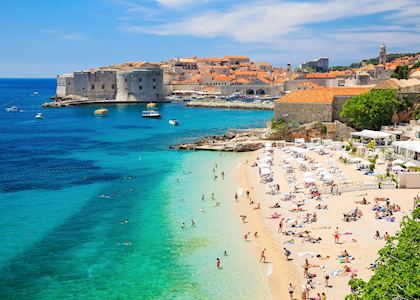
Visiting Croatia in July - August
The summer is peak season in Croatia, as visitors and locals alike enjoy the dry, hot weather. Outdoor venues host music, food and cultural events on a weekly basis, offering an entertaining and lively experience. This time of year also brings larger crowds, longer lines and increased prices at most hotels.
- Zagreb’s International Folklore Festival in July celebrates traditional Croatian culture and customs through music, dance and theater, drawing visitors from across the world.
- The Alka in the town of Sinj is held on the first Sunday of August — a uniquely Croatian festival celebrating a military victory over Ottoman forces in 1715 in which horsemen in full costume compete to lance a small metal ring for the accolade of top knight.
- Night of the Full Moon in Zadar (July/August): The waterfront promenade in Zadar is illuminated with torches and candles in this festival of regional culture and food.
- The International Puppet Theatre Festival takes place in Zagreb at the end of August or beginning of September, when professional puppeteers converge to show off their mastery in the artform.
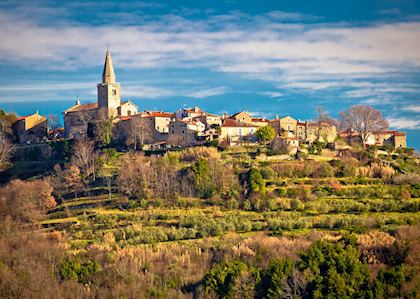
Visiting Croatia in September - October
The temperatures begin to recede during September and October, when the summer break has also come to an end. These months offer you great value with reduced crowds, enjoyable weather and plenty of cultural events taking place throughout the country. Most hotels and boat operators on the islands remain open until the end of October, and locals and visitors enjoy the quieter beach atmosphere.
- Nights of Diocletian (September) in Split is a weekend of Roman re-enactments where toga-clad performers pay their respects to the city’s ancient history in addition to parades, street food and live music.
- Truffle Days (September/October): Each autumn, the small Istrian town of Livade celebrates the local delicacy, the truffle, over 10 weekends with cooking contests, demonstrations and tastings.
Croatia Climate Guide
Why travel with audley.
- 100% tailor-made tours
- Fully protected travel
- Established for over 25 years
- 98% of our clients would recommend us

Travel advice
Practical tips for traveling to Croatia, from social protocols to guidance on money matters, with a link to the latest US State Department travel advice.

Request our brochure
Covering all seven continents, The World Your Way shows you how you can see the world with us. It features trip ideas from our specialists alongside hand-picked stays and experiences, and introduces our approach to creating meaningful travel experiences.
Trip ideas and travel guides for exploring Croatia

Family tour of Croatia
10 days from $7,875pp
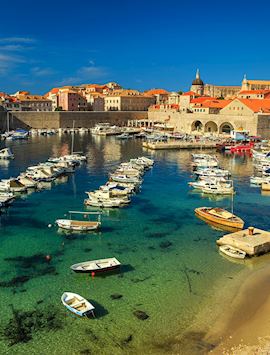
Croatia's Dalmatian Coast highlights
10 days from $8,895pp
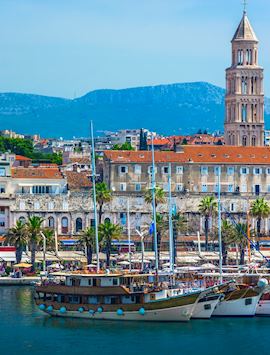
Crossing the Balkans: Slovenia, Croatia, Bosnia & Montenegro
11 days from $11,950pp

A highlights guide to Croatia
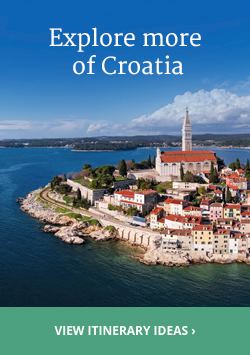

Croatia in July- A complete guide for an amazing vacation!
Croatia is a gorgeous country on the coastline of the Adriatic Sea, also lining Austria and Hungary. There are so many things to do, unbelievable places to visit, amazing Croatian food to eat, stunning beaches to relax on, and gothic cathedrals. The official peak season starts in July. Buckle up for an amazing trip to the most beautiful country in the Balkans. Let us know more about the weather, top attractions, best things to do, and some exciting festivals in Croatia in July before booking Croatia tour packages !
Croatia Tour Package Starting @ ₹ 52,194
Dubrovnik Old Town. Diocletian's Palace. Gornji Grad. Zlatni Rat Beach. Game of Thrones Tour
Weather in Croatia in July
Apparently, July is the hottest month in Croatia. The temperature can reach up to a max of 30 degrees Celsius and the possible lowest is 22 degrees celsius. However, the sea temperature maintains at 25 degrees and is very perfect for swimming, sunbathing and kayaking. You can try many adventurous sports in Croatia, hiking in the national parks, boating/sailing in beaches, lakes and rivers. The day starts early and ends late. You can experience almost 15 hours of daylight during summer on your Croatia honeymoon packages .
Best places to visit in Croatia in July
- Korcula town
- Hvar Island
- Diocletian’s palace
- Golden Horn beach
1. Korcula town
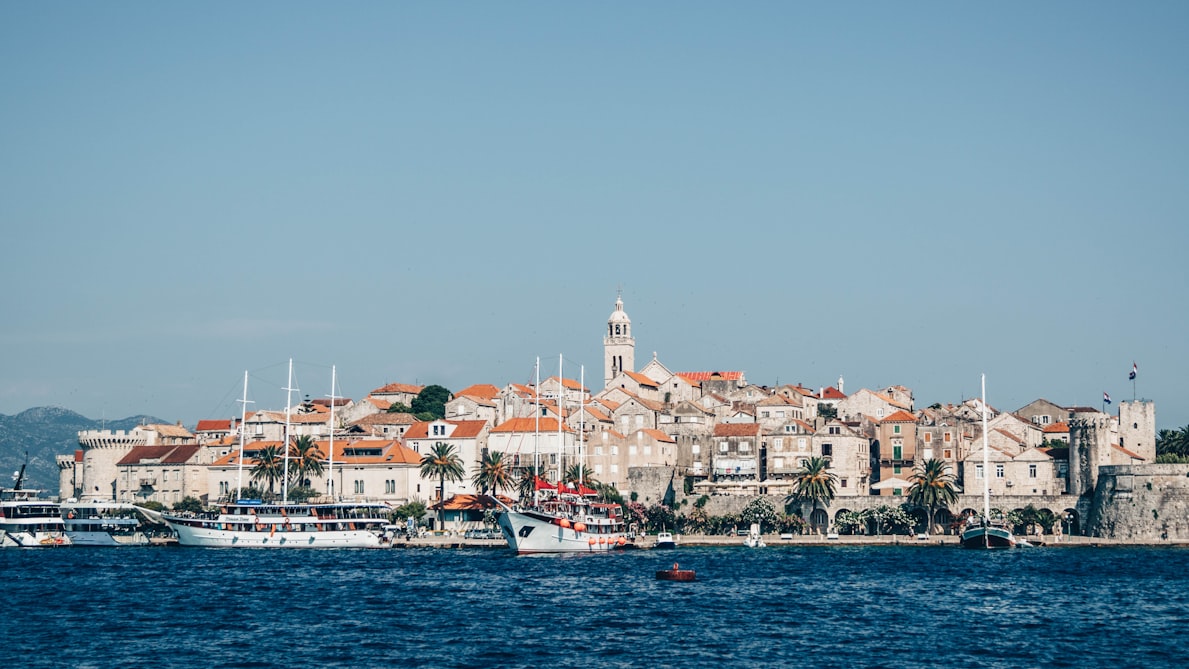
This little town of Korcula is very famous for its dense forest. It is situated on the coastal line of the Adriatic sea. The Korcula old town is as beautiful as the Korcula island. The old and rustic buildings are ethnic enough to be called the Little Dubrovnik. There are stunning beaches, resorts, cathedrals, medieval squares, palaces, Luka houses and lakes. The most famous thing about this pretty town is its old town walls. The towns are centuries old and still stand strong as a beautiful attraction in Croatia. This town is perfect to visit in Croatia in June and a beautiful place that should be on your Croatia travel package!
2. Dubrovnik
Dubrovnik is one of the most happening and popular cities in Croatia. The medieval city walls, old town, ancient streets for shopping, beach resorts, kayaking and fortresses are some of the significances of this city. The cathedrals built in baroque architecture during the Renaissance period are so stunning. In this city, you can also witness more street shows, art stalls and several nightclubs. Dubrovnik also has a spectacular view of the beaches and sea. This city is also famous for its cultural integrity, events, dance and music performances in the main square. Dubrovnik is one of the must-visit places in Croatia in July!
3. Hvar Islands

Hvar islands in Croatia is another top destination to visit. This place is best known for its lavender fields, yachting, kayaking and bomb cocktail parties. There are many options for cruising along the coast, sunset kayak, sailing, swimming and water sports. Hvar is also one of the most vibrant party islands in the world. You can leisurely swim and sunbathe during the day and do an amazing pubs crawl during the late evenings. You can also buy pure lavender, lavender oils, essential oils, Mediterranean spices and olive oil. This is one of the best places to do great shopping in Croatia . Finally, this place is home to several delicious restaurants that serve some amazing seafood dishes! Hvar is a must-visit party island in Croatia in July!
4. Diocletian’s palace

Diocletian Palace in Split is one of the most important places to visit in Croatia in July. This grand palace was built in dedication to the Roman emperor, Diocletian in the 4th century AD. This palace is now surrounded by many vegetable fields, moats, lakes, forests, tourists resorts and restaurants. This is now has become one of the most significant places in Croatia. It is also a famous spot for film shooting. Many limestone ridges, Four gates namely the East, West, North and South gates, a well-planned layout and luxurious architecture elevates the beauty of this palace even more. Do not forget to add this place to your checklist in your Croatia tour package!
5. Golden Horn beach

This Golden Horn beach in Bol, Croatia is one of the most beautiful beaches in Europe. This sandy beach is an ensemble of lush green pine forests, soft pinkish golden sand and shades of blue colour waters. This beach is lined with so many wineries, resorts, beach games and restaurants. This is apparently the best place to parasail and to take a look at the mesmerising beauty of the Adriatic sea and the Croatian islands. There are also many options for surfing, beach volleyball and water bike activities to do. This whole place is such a vibe!
4 amazing things to do in Croatia in July
- Adventurous cliff jumping
- Go on a Zipline
- Do an island hop
- Explore the local food and wine
1. Do an adventurous cliff jumping
Cliff jumping is one of the most common things to do in Western countries. It is very famous in Croatia too. There are many famous spots for cliff jumping in Croatia in July. You can do this activity in the Balkans, most of the Croatian islands and in some of the famous cities. Buza Bar in Dubrovnik is the most bustling place for cliff jumping. You can jump from a height of 100 meters into the beautiful and warm Adriatic sea! After a great jump, you can enjoy some delicious and authentic Central European and Mediterranean cuisine. And also, you can have some awesome seafood dishes in the restaurants around this place. Give this a try on your next trip to Croatia!
2. Go on a zip line
Have you ever tried this thrilling activity? You can never miss such an exciting sport. Go on a zip line above the rough terrains and admire the beauty of the mountains, islands, beaches, lakes and the ancient city! Croatia is home to one of the longest ziplines in the world. The site at Omis has a 1700 meter long zipline! It stretches over the Adriatic hinterland, beaches and mountains. This place is just 25 km away from Plitvice. There are many amazing places to do zipline in Croatia. Check this one out when you visit Croatia in July!
3. Island hopping in Croatia in July
Croatia is home to many small, big and gorgeous islands. There is something unique to do on each island. Some of the best islands in Croatia are Hvar, Brac, Korcula, Vet, Mljet, Lokrum, Susak and Krk. Hvar and Brac are some of the best party islands. These islands are very famous for amazing cocktail parties, musical events, cultural shows and nightlife in Croatia . These islands are also great for adventurous sports like hiking, parasailing, kayaking, snorkelling and surfing. You can plan and visit one island every day and still not be able to visit all! Because there are plenty of islands in this amazing country in the Balkans! Island hopping is a perfect choice to do in Croatia in July!
4. Explore the local food and wine
Croatian food is a very famous fusion of Central European cuisine and Mediterranean cuisine. There are uncountable street food options, amazing choices of wines and drinks. Some of the famous Croatian food is black risotto, Fritule, Istrian ham, toast with fruits, soy milk and squids. This country is also famous for producing authentic red wines from some native varieties of grapes. So hop from one stall to another and have some amazing food and drinks!
Famous festivals in Croatia in July
The month of July is filled with festivals and events in Croatia. Some of the best festivals are,
- Hideout, Zrce
- Dubrovnik Summer festival, Dubrovnik
- Split Summer festival, Split
- Motovun film festival, Istria
- International Folklore festival, Zagreb
- Ultra Europe, Split
1. Hideout, Zrce
This festival is one of the most famous happenings in Zrce. Large EDMs are placed and this vibe completely takes over the Hvar and Brac islands.
2. Dubrovnik Summer festival, Dubrovnik
This festival is very famous in Dubrovnik since the 1950s. It takes place every year in July with many musical, dance and cultural shows and of course with so much vibe!
3. Split Summer festival in Croatia in July
This festival takes place in Split from July 15. Many open-air stages are set up all over the city to host musical shows, ballet, concerts, puppet shows and dance performances.
4. Motovun film festival, Istria
Here comes Croatia’s most glamourous and exciting festival. There will be nonstop screenings of many international and local films, documentaries and short films. You can also see the presentation of the Avant-garde films during this festival.
5. International Folklore festival, Zagreb
At this festival, you can see many Croatian and international artists performing many musical and dance shows, cultural events and concerts throughout the city. This festival is very famous since 1966.
6. Ultra Europe, Split
Ultra Europe is one of the largest Electronic Dance Music (EDM) festivals in the world that takes place in Split, Hvar, Bol and Vis. This is such a lively festival to participate in!
FAQs on Croatia in July
A: Indeed, July is a popular and vibrant time to visit Croatia as the weather is pleasant, offers thrilling opportunities for beachgoers and outdoor enthusiasts.
A: You can plan your visit to Dubrovnik, Split, Hvar, and Korčula, as these places offer lively experiences to its visitors.
A: No, Croatia is a fantastic destination and offers fun activities like snorkelling, diving, water sports, visits to national parks, immersing in local festivals and scrumptious food.
A: Yes, it is recommended to book your accommodations in advance for tourist places like Dubrovnik and Hvar. Avoid last-minute hassles and plan your trip with Pickyourtrail just the way you want!
A: Yes, Croatia is a safe country, but be aware of petty crimes like tourist scams and pickpocketing.
Plan your Trip with Pickyourtrail
That is everything you need to know before planning an amazing trip to Croatia in July! There are more beautiful mountains, National parks, forts, cathedrals, beaches and resorts to visit in Croatia. All you have to do is to know the places you want to explore and the adventure sports in Croatia . Also, carry some summer essentials to make your Croatia vacation a perfect one! Check out Pickyourtrail for amazing offers at jay dropping prices! Visit Croatia packages to know more about the travel itineraries and deals! Also, you can customise your own package according to your likes, dislikes and comfort! Have an amazing vacation with Pickyourtrail!
Top-Selling Croatia Packages
Croatia Family Tour Packages | Croatia Budget Trip Packages
Explore Croatia’s charm through changing seasons
Croatia in January | Croatia in February | Croatia in March | Croatia in April | Croatia in May | Croatia in June | Croatia in August | Croatia in September | Croatia in October | Croatia in November | Croatia in December
Book a vacation completely online
Our community is growing fast
Sign up for exclusive PYT Club membership and access jaw-dropping deals before the rest of the world!
- Signup with Email
- Facebook community
- Telegram Community
Access exciting travel deals at best prices
- New Zealand
- South East Asia
- United Kingdom
- United States
- Switzerland
- Travelogues
- Travel News
- Guest Posts
- Write for us

Best Time to Visit Croatia: 2024 Croatia Planning Tips
IF YOU ARE PLANNING YOUR HOLIDAY TO CROATIA, YOU MIGHT BE THINKING, WHEN IS THE BEST TIME TO VISIT CROATIA.
As someone who calls Croatia home year-round , I fully understand the nuances of each season, from weather patterns to the ebb and flow of tourist crowds. There are many factors to consider when deciding the best time to visit Croatia. For example the country’s diverse climate and of course personal preferences . I love the sun, but I also love the outdoors, so that would impact where and when I would travel in Croatia.
My goal in this article is to help you navigate these factors and variations. You can then decide the best time for your Croatian adventure and start planning your vacation. Let me jump straight in with an overview of the seasons in Croatia .
Please note that some links on CroatiaExperiences.com are affiliate links. I may receive a commission if you click through a link and make a purchase from one of our partners. It doesn’t cost you anything extra and helps me to keep providing travel content about Croatia. Learn more .
Best Time to Visit Croatia
High season in croatia.

The high season typically spans from June to August . During this time expect warm temperatures and sunny skies, creating the perfect conditions for beach vacations in Croatia and outdoor adventures. Coastal towns and islands buzz with energy as visitors, like myself, want to soak up the Mediterranean climate and vibrant atmosphere.
Pros for visiting Croatia in the High Season
✔️ In the high season, Croatia comes alive with an array of exciting activities and events.
✔️ From sailing along the stunning Adriatic coast to exploring historic cities steeped in culture and tradition, there’s no shortage of things to see and do in Croatia .
✔️ The warm weather allows for leisurely beach days and thrilling water sports, while evenings are filled with lively entertainment and delicious seafood dinners by the sea.
✔️ There are many public transportation options connecting all the cities and towns in Croatia and plenty of flight options to Croatia.
Cons for visiting Croatia in the High Season
❌ The popularity of the high season also means larger crowds and higher prices.
❌ Popular tourist destinations can become crowded, particularly in July and August, making it essential to plan and book accommodations and activities well in advance.
❌ The hot temperatures during the day can be intense, so if visiting Croatia in the High Season, you must take precautions to stay hydrated and seek shade when needed. You won’t find Croatians lying on the beach in the midday sun!
❌ If you are driving, expect traffic in popular areas.
Key Events and Activities taking place in Croatia during the High Season
The high season in Croatia is marked by a variety of key events and activities. In Dubrovnik, the renowned Dubrovnik Summer Festival showcases an array of cultural performances. Split comes alive with the Split Summer Festival , featuring open-air concerts and theatrical performances in the historic Diocletian’s Palace. I also enjoy watching the sailing regattas and attending food festivals, and outdoor concerts throughout the summer months. It is the time when everything is alive and happening!
Top Tips for Visiting Croatia in the High Season
Here are my tips to make the most of your visit to Croatia during the high season:
💡 Book Croatia accommodation, activities and transportation well in advance to secure the best options and avoid disappointment.
💡Visit popular attractions early in the morning or late in the afternoon to avoid the largest crowds.
💡Stay hydrated and protect yourself from the sun by wearing sunscreen, a hat, and sunglasses.
💡Be mindful of your budget and plan for higher prices for accommodations, dining, and activities during peak season.
Shoulder Season in Croatia

The shoulder seasons of spring (April-May) and autumn (September-October) offer a welcome respite from the crowds and heat of the high season, while still providing pleasant weather and a wealth of activities to enjoy. For me, this is one of the best times to visit Croatia and an ideal time to explore Croatia’s diverse landscapes and cultural attractions.
Pros for visiting Croatia in the Shoulder Season
✔️ During the shoulder season, the temperatures are pleasantly mild and there are fewer crowds, allowing for a more relaxed and authentic travel experience.
✔️ The weather is perfect for outdoor activities such as hiking, cycling, and sightseeing.
✔️ Attractions and accommodations are more readily available and affordable compared to the high season.
Cons for visiting Croatia in the Shoulder Season
❌ While the shoulder season offers many advantages, keep in mind that the weather can be unpredictable, with occasional rain showers and cooler temperatures.
❌ Some beach destinations may have quieter atmospheres or cooler water temperatures, limiting swimming opportunities.
❌ Some restaurants and amenities in more remote locations may not be open.
Key Events and Activities taking place in Croatia during the Shoulder Season
The shoulder season in Croatia is marked by a variety of cultural events and outdoor activities. Explore the wine regions such as Istria, Dalmatia, and Slavonia and visit wineries to taste local Croatian wines. Embrace the great outdoors and cycle the coastal routes in Dalmatia or around Plitvice National Park.
Top Tips for Visiting Croatia in the Shoulder Season
Here are my tips to make the most of your visit to Croatia during the shoulder season:
💡Pack layers to accommodate changing weather conditions, including a light jacket or sweater for cooler evenings.
💡Take advantage of off-season deals and discounts on accommodation and tours.
💡Embrace the slower pace and enjoy a more authentic experience with locals, who are often more relaxed and willing to engage with visitors during this time.
💡Check the opening hours and availability of attractions and restaurants, as some may have limited hours or be closed during the shoulder season.
Low Season in Croatia

The low season in Croatia, which typically spans from November to March , offers a tranquil and budget-friendly option for people seeking to explore the country’s natural beauty and cultural heritage without crowds. While the weather may be cooler and some tourist facilities closed, the low season offers more immersive travel experiences. There are a reduced number of transportation and flight connections, so you will need to be more strategic with your planning if visiting Croatia in the low season.
Pros for visiting Croatia in the Low Season
✔️ During the low season, you can enjoy peaceful surroundings and uncrowded attractions.
✔️Accommodation and tours are often available at discounted rates, making it an ideal time if you are travelling on a budget to explore Croatia’s treasures.
✔️ It’s a great time to enjoy active pursuits such as cycling and experience Croatia with the locals.
✔️ If you are hiring a car, you won’t need to worry about traffic or parking.
Cons for visiting Croatia in the Low Season
❌ If you are visiting Croatia in the low season be prepared for cooler temperatures and shorter daylight hours, as well as the possibility of rainy or snowy weather, particularly in inland regions. When it rains here, it really rains! But as a wise person once said, there is no such thing as bad weather, just bad clothing. So pack appropriately!
❌Some tourist facilities may be closed or operating on limited hours.
❌ There are reduced transportation options, especially boat connections to the islands, so it can be trickier to travel around.
Key Events and Activities taking place in Croatia during the Low Season
Despite the quieter atmosphere of the low season, there are still plenty of activities and events to enjoy in Croatia including the Dubrovnik Winter Festival and the Rijeka Carnival . From exploring historic cities adorned with festive decorations to sampling traditional winter delicacies at holiday markets, it’s a great time to embrace yourself in Croatia’s seasonal festivities.
Tips for Visiting Croatia in the Low Season
Here are my tips to make the most of your visit to Croatia during the low season:
💡Pack warm clothing and waterproof gear to stay comfortable in cooler and potentially wet weather conditions.
💡Take advantage of off-season deals and discounts on accommodations, tours, and attractions.
💡Embrace the slower pace and enjoy a more relaxed and authentic travel experience with fewer crowds and more opportunities for meaningful interactions with locals.
💡Check the opening hours and availability of tourist facilities and attractions, as some may have limited hours or be closed during the low season; as well as the transport routes which will be reduced.
READ NEXT > Best Places to Stay in Croatia: Accommodation Tips for Travellers to Croatia 2024
Croatia Travel: A Month-by-Month Overview

Croatia in January
In January, Croatia experiences cool temperatures across the country, with average highs ranging from 8°C to 12°C. The sea temperature is chilly, hovering around 12°C, making swimming less appealing but perfect for scenic coastal walks. Despite the cooler weather, January offers unique cultural experiences, such as the Dubrovnik Winter Festival and the start of the Rijeka Carnival . You can also enjoy skiing and snowboarding in the inland regions.
Croatia in February
February in Croatia brings similar temperatures to January, with average highs ranging from 9°C to 13°C. The sea temperature remains cool, averaging around 11°C. The Rijeka Carnival continues into February. For outdoor enthusiasts, February is an excellent time for winter sports and snowy adventures in the mountainous regions, with ski resorts like Platak and Bjelolasica. The waterfalls at Plitvice Lakes National Park freeze and turn it into a winter wonderland – it is a stunning sight to see.
Croatia in March
As spring begins to emerge, March sees an increase in temperatures across Croatia. The average highs range from 12°C to 16°C. The sea temperature starts to rise slightly, reaching around 13°C. March is a good month to enjoy outdoor activities such as exploring the historic city of Split and hiking in the picturesque landscapes of Istria and Dalmatia.

Croatia in April
April brings mild and pleasant weather to Croatia, with average highs ranging from 15°C to 19°C. The sea temperature begins to warm up, reaching around 15°C, making it suitable for early-season beach activities. April marks the start of the tourist season, with attractions reopening. Spring blooms adorn the countryside, creating a picturesque backdrop for outdoor adventures and sightseeing. April is an ideal time to visit Croatia’s national parks, including Plitvice Lakes and Krka and enjoy Easter Celebrations.
Croatia in May
May marks the beginning of summer-like weather in Croatia, with average highs ranging from 19°C to 24°C. The sea temperature becomes more inviting, reaching around 18°C, perfect for swimming and water sports. May 1st (Labour Day in Croatia) traditionally marks the first day of swimming. May is a fantastic time to explore Croatia’s coastal towns and islands, from the vibrant city of Dubrovnik to the idyllic shores of Hvar and Korčula.
Croatia in June
June heralds the arrival of summer in Croatia, with warm temperatures and sunny skies inviting you to the coast. Average highs range from 24°C to 28°C. The sea temperature reaches a comfortable 22°C, ideal for beachgoers and water enthusiasts. June starts the peak tourist season, with bustling cities and crowded beaches. It is also a perfect time to enjoy outdoor activities and cultural events. Highlights include sailing along the Adriatic coast and attending the Dubrovnik Summer Festival.

Croatia in July
July is the height of summer in Croatia, with hot temperatures and clear skies. Average highs range from 27°C to 31°C, with the sea temperature peaking at around 24°C, perfect for swimming and sunbathing. July offers an abundance of activities and events for everyone to enjoy. From island hopping and beach parties to cultural festivals and culinary delights, there’s never a dull moment in Croatia during July!
Croatia in August
August continues the summer heat in Croatia. The average highs range from 27°C to 31°C and sea temperatures remain warm at around 25°C. The beaches are bustling with visitors soaking up the sun, while the cities are alive with cultural events and nightlife. August is the perfect time for adventures on the sea, including windsurfing, snorkelling and exploring Croatia’s underwater paradise.
Croatia in September
As summer begins to wane, September offers a pleasant transition to autumn in Croatia. This is my favourite month in Croatia! Average highs range from 23°C to 27°C, with the sea temperature still warm at around 23°C, perfect for late-season swimming. September is an ideal time for outdoor activities like hiking and cycling, as the weather remains mild and the crowds start to thin out. It’s also the time of the grape harvest and wineries are always on the lookout for people to help!

Croatia in October
October brings cooler temperatures to Croatia, with average highs ranging from 18°C to 22°C. The sea temperature begins to drop but still hovers around 20°C, so swimming and water activities are still possible. October is a great time to explore Croatia’s cities and historic sites, as tourist crowds diminish and the weather remains pleasant for sightseeing. Nature lovers will appreciate the autumn foliage in the countryside and the opportunity to hike in the national parks before winter sets in.
Croatia in November
November marks the onset of winter in Croatia, with cooler temperatures and occasional rain showers. Average highs range from 13°C to 17°C, while the sea temperature decreases to around 17°C, making swimming less common. I do remember years on Korcula when it was still warm enough to swim in November. Despite the cooler weather, November offers unique experiences, such as truffle hunting in Istria.
Croatia in December
December brings festive cheer to Croatia, with twinkling lights and decorations adorning the cities and towns. Average highs range from 9°C to 13°C, with the sea temperature cooling to around 14°C. December is a magical time to visit Croatia, with Christmas markets, concerts, and events celebrating the holiday spirit. I love Christmas time in Croatia. When we can enjoy traditional Croatian dishes like fritule and mulled wine while exploring the charming Christmas markets in Zagreb, Split, and Dubrovnik.
Croatia’s Diverse Climate: Weather Insights by Region

Croatia’s geographical diversity lends itself to a wide range of climates and landscapes, which also means it offers diverse activities. Let me introduce you to the distinct characteristics of coastal and inland Croatia.
Weather in Coastal Regions of Croatia
Croatia’s coastal regions have a Mediterranean climate, characterized by hot, dry summers and mild, wet winters. The Adriatic Sea moderates temperatures, creating pleasant conditions for beachgoers and outdoor enthusiasts. The sea breeze provides relief from the heat.
Plenty of water activities can be enjoyed throughout the summer in coastal Croatia. You can enjoy windsurfing and kitesurfing, snorkelling and diving, and kayaking.
Weather in Inland Regions of Croatia
Croatia’s inland areas, including regions like Zagreb, experience a continental climate characterised by hot summers, cold winters, and greater temperature fluctuations throughout the year. The absence of the moderating influence of the Adriatic Sea results in more extreme weather conditions compared to the coast.
Inland areas of Dalmatia, such as the Dinaric Alps, experience slightly cooler temperatures and occasional rainfall. This offers a refreshing escape from the summer crowds. Istria’s inland areas experience greater temperature variations, with cooler temperatures in the hills and valleys compared to the coastal areas. These regions are a haven for outdoor enthusiasts year-round.
In winter, mountainous regions in Croatia transform into snowy paradises, attracting skiers and snowboarders to its picturesque slopes.
Best Time to Visit Croatia for Sightseeing

Croatia’s rich cultural heritage can be experienced year-round, with museums, galleries, and historic sites open throughout the year. However, the best time to explore Croatia’s historic cities and cultural landmarks is during the shoulder seasons of spring and autumn. During these times, the weather is mild, the skies are clear, and tourist crowds are fewer.
In spring, it’s lovely to wander through the narrow cobblestone streets of Dubrovnik’s Old Town. Or marvel at the Roman architecture of Split’s Diocletian’s Palace. Before exploring the historic city of Zagreb with its museums, galleries, and cafes. Autumn brings opportunities to witness the changing colours of Plitvice Lakes National Park. It’s a lovely time to stroll along the waterfront promenades of Rovinj and Zadar and discover the cultural treasures of inland regions like Istria and Slavonia.
Best Time to Visit Croatia for Beach Lovers

If you are a sun-seeker or beach lover (like me!), the best time to visit Croatia is during the Summer months of June to August when the weather is hot, and the Adriatic Sea is warm and inviting. During this time, Croatia’s coastal towns and islands come alive with bustling beaches, vibrant waterfront promenades, and an array of water sports and activities. From the sandy shores of Zlatni Rat Beach in Bol to the hidden coves of Vis and Hvar, there’s a beach for every preference along Croatia’s stunning coastline.
Best Time to Visit Croatia for Special Events and Festivals

Croatia’s vibrant cultural scene comes alive throughout the year with a variety of special events and festivals. One of the highlights is the Dubrovnik Summer Festival, held annually from July to August, which transforms the historic city into a stage for theatre, music, dance, and art performances.
Similarly, the Split Summer Festival, also taking place in July and August, celebrates the city’s cultural heritage with a diverse program of theatrical productions, concerts, and exhibitions held in iconic venues like Diocletian’s Palace and Peristyle Square.
In December, the Zagreb Advent marks the start of the holiday season with a month-long celebration featuring festive markets, street performances, and culinary delights. I love to wander through the charming streets of Zagreb’s Old Town during Advent, sipping on mulled wine and munching on sweet bakes such as fritule and kroštule.
Best Time to Visit Croatia for Outdoor Activities

It’s possible to enjoy a wide range of outdoor activities year-round in Croatia. Spring and Autumn are particularly ideal for outdoor pursuits, with mild temperatures and fewer crowds making it the perfect time for hiking, biking, and nature walks. It’s also a great time to visit Croatia’s national parks, including Plitvice Lakes, Krka, and Paklenica.
During the summer months, Croatia’s coastline becomes a playground for water sports, with opportunities for swimming, snorkelling, diving, and sailing. Or if you’re more the adventurous type it’s also the time to enjoy adrenaline-pumping activities like rafting, zip-lining, and rock climbing.
In winter, Croatia’s mountainous regions transform into snowy paradises, offering opportunities for skiing, snowboarding, and snowshoeing. Ski resorts like Platak and Bjelolasica attract winter sports enthusiasts with well-groomed slopes, stunning mountain views, and après-ski amenities.
Best Time to Visit the National Parks in Croatia

While the National Parks in Croatia are open year-round, the best time to visit is during the shoulder seasons of spring and autumn when the weather is mild, and the crowds are fewer. It’s the best time to enjoy hiking trails, waterfalls, and scenic viewpoints without the summer crowds.
Plitvice Lakes National Park and Krk are particularly stunning in the spring when the surrounding forests come alive with vibrant colours and blooming flowers. Autumn offers equally breathtaking scenery, with the foliage turning shades of red, orange, and gold, creating a picturesque backdrop for hiking and photography.
Are you planning a trip to Plitvice National Park From Zagreb? This excellent tour provides transport, a guided tour and a trip to the charming town of Rastoke. >> Book Here <<
Paklenica National Park, located in the Velebit mountain range, offers opportunities for hiking, rock climbing, and spelunking year-round. Spring and autumn are ideal for outdoor activities in the park, with mild temperatures and fewer tourists allowing for uninterrupted exploration of its rugged terrain and karst landscapes.
My Travel Tips for Visiting Croatia in Each Season

💡When planning your trip to Croatia, it’s essential to consider the weather, seasonal activities, and transport options to make the most of your experience.
💡In spring and autumn, pack layers and waterproof clothing for variable weather conditions, and don’t forget comfortable walking shoes for exploring historic cities and natural landscapes.
💡During the summer months, swimming shoes, sunscreen, hats, and sunglasses are essential for protecting yourself from the sun, while lightweight clothing and swimwear are needed for beach activities.
💡I would recommend booking accommodations and activities in advance, especially during peak tourist seasons in summer and around major events and festivals.
💡Be flexible with your itinerary to allow for unexpected discoveries and experiences, and don’t be afraid to venture off the beaten path to explore Croatia’s hidden gems.
Budget Considerations when Visiting Croatia
Travelling to Croatia can be affordable year-round, with opportunities to save money on accommodation and activities during the shoulder and low seasons.
In spring and autumn, accommodation prices are typically lower than in summer. You may also find special offers and discounts for attractions and tours. Consider staying in guesthouses, hostels, or self-catering apartments to save on accommodation costs. Take advantage of local markets and grocery stores for budget-friendly dining options.
Transportation costs can also vary depending on the season. You’ll find cheaper fares for flights, trains, and buses during the shoulder seasons. I would recommend using public transportation to stretch your travel budget further.
Planning Your Trip to Croatia: Key Considerations

Planning a trip to Croatia requires careful consideration of various factors, including seasonal weather patterns, regional attractions, transportation options and personal preferences. Here’s my summary of the things you should consider when deciding the best time to visit Croatia:
Seasonal Weather Patterns in Croatia
The summer months in Croatia (June to August) are popular for beach vacations and outdoor activities, they can also be hot and crowded, especially along the coast. Spring in Croatia (April to June) and autumn in Croatia (September to November) offer milder temperatures and fewer tourists, making them ideal for sightseeing, hiking, and cultural exploration. Winter in Croatia (December to February) is less crowded but can be cold and rainy, particularly in inland regions.
Regional Attractions in Croatia
The perfect place to spend the summer months in Croatia is by the Dalmatian or Istrian coast enjoying the glorious beaches and refreshing breezes. Cultural and culinary festivals and events abound, with plenty of opportunities to sample delicious local produce and wine.
Spring and Autumn in Croatia are ideal times for sightseeing Croatia’s treasured old towns and historical sights such as the Roman ruins in Pula and hiking in Croatia’s National Parks. On days when the weather is not great to be outside, there are many interesting museums to visit.
During Wintertime in Croatia, it’s time to head to the mountains to enjoy fresh air and snow and enjoy the festivities at the Advent Markets.
Transportation
The availability of public transport in Croatia throughout the year changes and becomes limited outside of the high and shoulder seasons, especially the boat connections to the islands. Boat connections are also affected by bad weather which is more likely to occur in the shoulder and low seasons. There are a reduced number of flights to Croatia in the low season. Consequently, if you are travelling to Croatia at this time, you might need to do additional planning to get to where you need to go.
In the peak season, there are high demands for transportation in Croatia, so I would strongly recommend you make reservations and buy tickets in advance. However, there are many public transport options such as buses, ferries and catamarans and daily flights to Croatia from pretty much everywhere in the world!
Personal Preferences
Ultimately, the best time to visit Croatia depends on your personal preferences and travel priorities. If you like hustle and bustle and the sun come to Croatia during the peak tourist season. If you’re not bothered by the beach and prefer sightseeing and outdoor pursuits, come and enjoy the quieter atmosphere of the shoulder seasons in Croatia. Croatia offers the best time to visit for everyone!
FAQS: Best Time to Visit Croatia in 2024
When is the best time to visit croatia.
The best time to visit Croatia depends on your preferences and interests. Generally, the shoulder seasons of spring (April to June) and autumn (September to November) offer milder weather, fewer crowds, and a more relaxed atmosphere for sightseeing and outdoor activities. The high season from June to September is perfect for beach vacations and activities on the sea but is more expensive and busier.
What is the best time of year to visit Croatia for good weather and fewer crowds?
The best time of year to visit Croatia for good weather and fewer crowds is during the shoulder seasons of spring and autumn. During these times, the weather is mild, and tourist crowds are fewer, allowing for a more enjoyable and authentic experience.
When is the best time to enjoy sightseeing in Croatia?
Spring and autumn offer ideal conditions for exploring Croatia’s historic cities, including Dubrovnik, Split, and Zagreb, without the summer crowds. You can wander through ancient Roman ruins, medieval fortresses, and Baroque palaces, discovering the rich history and architecture of these iconic destinations.
What are the peak tourist seasons in Croatia, and when should I avoid visiting to avoid crowds and high prices?
The peak tourist seasons in Croatia are during the summer months of July and August when the weather is hot, and tourist attractions are crowded. To avoid crowds and high prices, it’s best to avoid visiting during these months and opt for the shoulder seasons instead.
What is the cheapest month to travel in Croatia?
The cheapest month to travel in Croatia is typically during the shoulder seasons of spring and autumn when accommodation prices are lower, and there are often special offers and discounts available for attractions and activities.
What’s the hottest month in Croatia?
The hottest month in Croatia is typically July, with temperatures often reaching their peak during this time. Be prepared for hot and humid weather, especially along the coast.
Are there any special events or festivals happening in Croatia during specific times of the year that I should plan my visit around?
Yes, Croatia hosts a variety of cultural events and festivals throughout the year, including the Dubrovnik Summer Festival in July and August, the Split Summer Festival in July and August, and the Zagreb Advent in December.
What is the weather like in Croatia during different seasons, and what activities are available during each season?
The weather in Croatia varies by season, with hot summers, mild springs and autumns, and cool winters. During the summer, you can enjoy beach vacations, water sports, and outdoor activities. In spring and autumn, sightseeing, hiking, and cultural exploration are popular activities. Winter offers opportunities for skiing, snowboarding, and holiday celebrations.

What are the shoulder seasons in Croatia, and how do they compare to the peak summer season in terms of weather and tourist crowds?
The shoulder seasons in Croatia are spring (April to June) and autumn (September to November). During these times, the weather is mild, and tourist crowds are fewer compared to the peak summer season. This makes it an ideal time to visit for those seeking a more relaxed and authentic experience.
Are there any regions in Croatia that are particularly beautiful or enjoyable to visit during certain seasons?
Yes, certain regions of Croatia are particularly beautiful or enjoyable to visit during certain seasons. For example, the Istrian Peninsula is known for its truffle festivals in autumn, while the Dalmatian Coast is popular for beach vacations in summer.
What are some tips for packing for a trip to Croatia during different seasons, such as clothing recommendations and essential items to bring?
When packing for a trip to Croatia, it’s essential to consider the weather and activities planned. In summer, lightweight clothing, sunscreen, sunglasses, swimming shoes and a swimsuit are essential. If you are visiting in spring and autumn, pack layers and waterproof clothing for variable weather conditions. During the winter season, bring warm clothing, including a coat, hat, and gloves, especially if visiting inland regions or ski resorts.
Is it possible to visit Croatia during the winter months, and what activities or attractions are available during this time?
Yes, it is possible to visit Croatia during the winter months. While some coastal areas may be quieter during this time, there are still plenty of activities and attractions to enjoy, including skiing, snowboarding, and winter festivals in the mountainous regions.
Is it possible to swim in the Adriatic Sea during the autumn months?
Yes, it is possible to swim in the Adriatic Sea during the autumn months, although the water is likely cooler compared to the summer months. Many people still enjoy swimming and water sports during this time, especially in coastal areas with milder climates. Some years people are swimming on Korcula well into November.
Wrap-up: Best Time to Visit Croatia in 2024
I hope this blog post has helped you decide when is the best time to visit Croatia. Regardless of when you choose to visit Croatia, each season offers its own unique charm and opportunities for exploration. Whether you’re seeking sun-soaked beaches, cultural experiences, or outdoor adventures, there’s something for everyone to enjoy in this beautiful Mediterranean destination. Plan your trip carefully, considering your interests, budget, transportation and accommodation options and preferred travel style, and get ready to embark on an unforgettable Croatian adventure.
READ NEXT > Best Tours in Croatia for Unforgettable Adventures in 2024
CROATIA TRAVEL PLANNING GUIDE
Should i buy croatian travel insurance.
While travel insurance is not mandatory for visiting Croatia, it’s highly recommended. It can provide coverage for medical emergencies, trip cancellations, lost luggage, and other unforeseen events, giving you peace of mind during your vacation.
Can I drink tap water in Croatia?
Yes, tap water in Croatia is safe to drink. It meets EU standards for quality and is safe for consumption in most areas. However, if you’re unsure or prefer bottled water, it’s widely available in stores and supermarkets.
Is it safe to rent a car in Croatia?
Renting a car in Croatia is safe and convenient for exploring the country, especially if you plan to visit rural areas or islands with limited public transportation. Just be sure to adhere to traffic laws, drive cautiously, and purchase comprehensive insurance coverage.
Will my phone work in Croatia?
Most international phones will work in Croatia, especially if they are unlocked and equipped with a SIM card slot. You can use your phone with a local SIM card purchased in Croatia or rely on international roaming services offered by your home carrier (make sure to check the charges beforehand, so don’t unexpectedly receive an expensive bill!).
What’s the best way to book my accommodation for my Croatia Vacation?
The best way to book accommodation for your Croatia vacation depends on your preferences and budget. You can use online travel agencies like Booking.com, Airbnb, VRBO or Expedia, hotel booking websites, or opt for direct bookings through hotels, guesthouses, or vacation rentals.
What is the best site to buy flights to Croatia?
There are several websites where you can find flights to Croatia, including Skyscanner, Google Flights, Expedia, and Kayak. It’s advisable to compare prices across multiple platforms and book your flights in advance to secure the best deals. Additionally, consider subscribing to airline newsletters for promotional offers and discounts.
Do I need a Visa to visit Croatia?
Travellers from the EU, Schengen Area, USA, Canada, Australia, and many other countries do not need a visa for short visits to Croatia. However, checking specific entry requirements based on your nationality is essential before travelling.
Hi! I'm Rachael. Originally from the UK I relocated to Korcula Island, Croatia in 2010 with my husband John. I am super passionate about helping people planning epic vacations to Croatia and created Croatia Experiences to be able to do just that. I also run a wine and local produce tasting company with John on Korcula.
Leave a Reply Cancel reply
Your email address will not be published. Required fields are marked *
Save my name, email, and website in this browser for the next time I comment.
- Best time to visit Croatia
Book your individual trip , stress-free with local travel experts
Select Month
- roughguides.com
- Travel guide
- Itineraries
- Travel Ideas
- Local Experts
- Related Articles
- Travel Advice
- Accommodation
Plan your tailor-made trip with a local expert
Book securely with money-back guarantee
Travel stress-free with local assistance and 24/7 support
Figuring out when to go to Croatia goes hand-in-hand with planning an itinerary for your trip. Perhaps you’re hankering after some sun, sea and sand on the beaches of its extensive and glorious coastline and islands . You might intend to explore Croatia’s national parks and take advantage of the plethora of outdoor activities on offer, such as hiking, climbing, mountain biking, sea kayaking and sailing . If so, your trip will be weather dependent. Maybe you’re more focused on soaking up the country’s rich history and culture, in which case you won’t be put off by chillier temperatures or a bit of rain. If you’re enticed by Croatia’s burgeoning festival scene , this takes off in the summer months.
Weather in Croatia
When to visit croatia in spring, when to visit croatia in summer, summer music festivals in croatia, when to visit croatia in the autumn, when to visit croatia in the winter, when to go to croatia for festivals, cultural, traditional, and religious festivals in croatia, music and dj festivals in summer, calendar of events in croatia, travel ideas for croatia, created by local experts.

16 days / from 5292 USD
Gorgeous gems of Hungary, Slovenia and Croatia
From the spas of Budapest to Lake Bled with its castle and further on to Croatia - this itinerary takes you across 3 countries, with a special focus on Slovenia's lake area and the Dalmatian coast in Croatia.

10 days / from 2800 USD
Sailing Croatia
If you want to experience the Dalmatian coast from a whole different perspective, then this trip is for you! Hop aboard a beautiful cruiser and sail along some of Croatia's most stunning islands.

10 days / from 2327 USD
Southern Pearls
This ten-day trip will take you around three adjacent countries, Croatia, Bosnia & Herzegovina, and Montenegro. Your tour starts in Split, Croatia, moving south (hence the name "Southern Pearls") over the island of Hvar and Mostar in Bosnia & Herzegovina to end up in Montenegro.
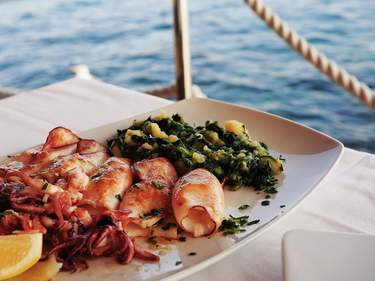
12 days / from 3046 USD
Gourmet Tour
You will visit three different adjacent countries and experience traditional local food and wines. You will visit some of the most intriguing restaurants and wineries in the area taste the delicious contrast between fine restaurants, and more traditional, authentic taverns.

11 days / from 5129 USD
Culinary Secrets of Croatia
This vintage holiday celebrates the wine and olive oil-making traditions of Croatia’s Adriatic coastline, which form the foundations of the country's Mediterranean culinary heritage. Visit world-class wineries, and sample Dalmatian delicacies as you travel south to Dubrovnik.

13 days / from 3153 USD
Balkan Extended
The Balkan Extended tour truly showcases the finest of Balkan’s heritage and natural beauty as you make your way through the 5 countries. Learn about the Serbian Athens, climb the splendid Old Bridge in Mostar, observe Slovenia's water castle and dive into the pearl of Croatia's beauty in Istria.
Chances are you’ll be looking at a combination of these things during your trip. So, for a taster of everything, the best time of year to visit Croatia is early or late summer. You’ll sidestep the hottest months of the season and it’ll be less busy all round.
Inland it’s a climate of contrasts, with sweltering temperatures in mid-summer, and freezing winters. The coast, however, experiences a Mediterranean climate – that is to say, hot in summer, mild in winter. So, if you’re planning to visit Croatia it’s worth taking a closer look at the country’s weather patterns.
Visiting Croatia in March–mid-May
Spring is sprightly by mid-March. It’s warm and dry, which makes it the best time to visit Croatia for cycling, hiking and sightseeing. Also, locals are likely to be particularly welcoming at this time of year – before the tourism season takes off again.
Easter is an important marker on the festival calendar, with religious processions in full swing on the islands of Hvar , Korčula and in many other parts of Croatia. In April, Zagreb hosts the Music Biennale festival (every odd-numbered year), showcasing contemporary classical music by top international artists.
Easter aside, April is also the best month to travel to Croatia for a shoulder season flight at bargain prices, and enjoy a city break.
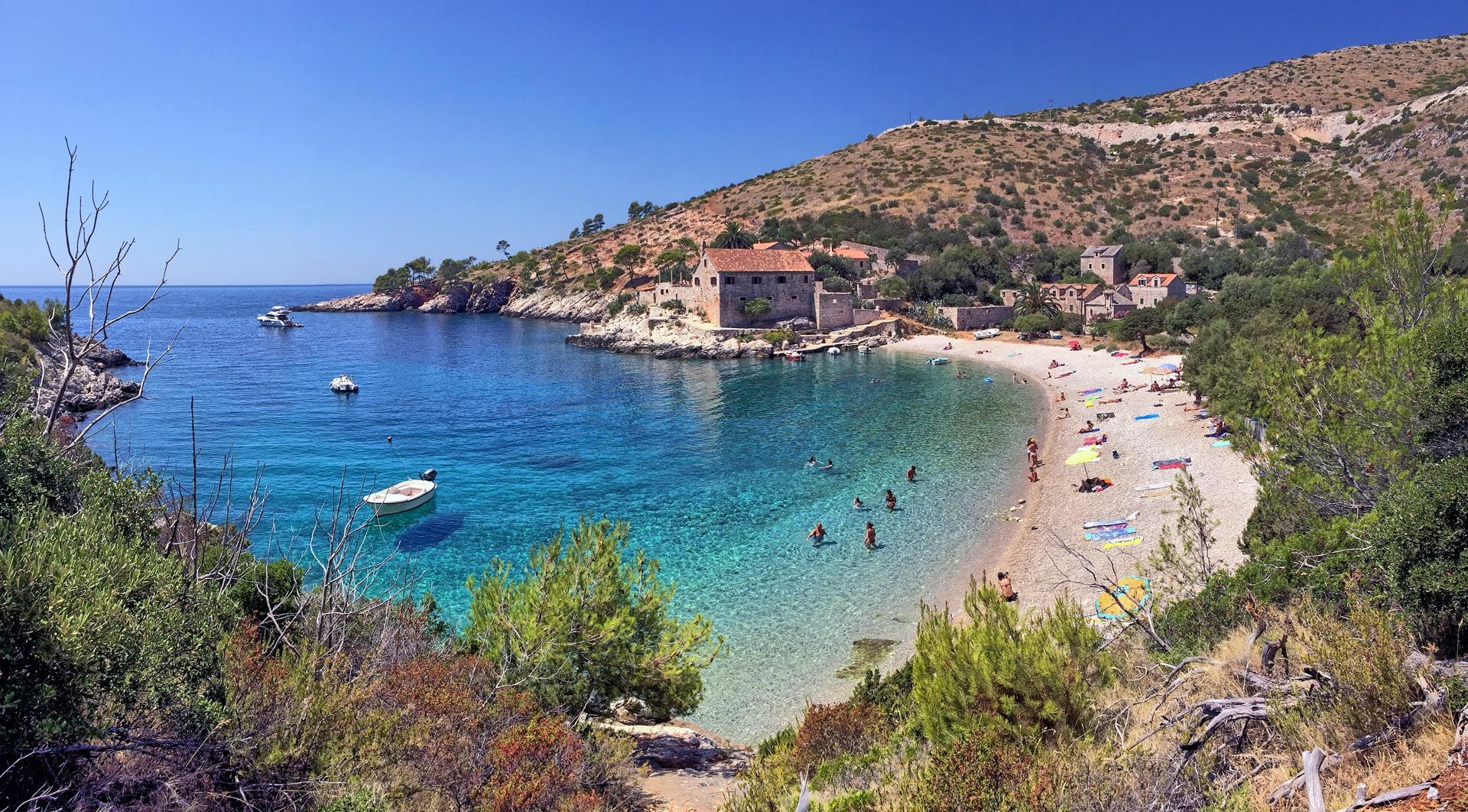
Hopping over to the island of Hvar © Shutterstock
Visiting Croatia in late-May and June
The early summer months are perfect for sunbathing: balmy temperatures lie between 23-27°C on the Adriatic coast, yet beaches are devoid of the crowds that appear as soon as school’s out. And by mid- to late May it can be warm enough in southern Dalmatia to swim in the sea. You’ll also have more stamina for sightseeing – before temperatures soar – and fewer people makes travelling between sights easier. For a smorgasbord of activities, this is perhaps the best time to visit Croatia.
Visiting Croatia in July and August
This is peak season on the Adriatic, drawing foreign travellers, as well as Croats to its sunny sands. And if you like to combine beach action with a buzzing café culture this is the best time to go to Croatia. However, with soaring mid-summer temperatures on the coast (and inland), you may want to limit the amount of sightseeing you pack in.
Island hopping off the coast of Croatia is a big draw. In peak season you’d do well to arrive at ports early to get at the front of the queue for ferries. Also, bear in mind that accommodation soon fills up at the height of summer along the coast and islands, and facilities can be overstretched.
As most head for the coast, cities in the hotter interior of the country are pretty dormant this time of year, with little happening in the way of cultural or social activities. However, the relative quiet is ideal for a trip to take in the magnificent scenery at Croatia’s inland national parks, such as Plitvice Lakes , Risnjak and Northern Velebit.
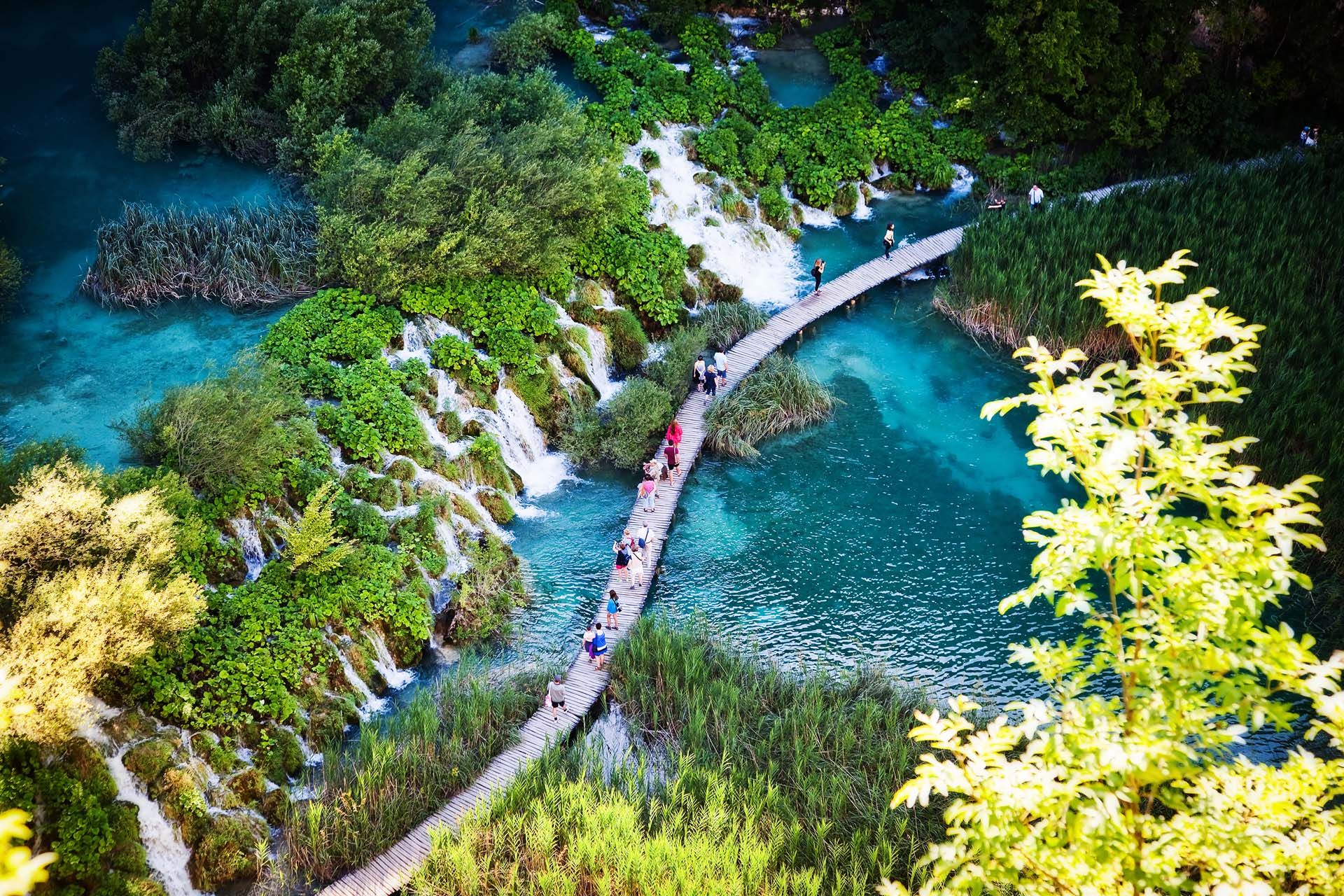
Waterfalls at Plitvice Lakes © Shutterstock
Croatian culture heads for the coast in summer. Almost every Adriatic town organizes a cultural programme, usually featuring outdoor concerts of pop, classical music or folk. And Croatia has quite a reputation for hosting some of the best and diverse music festivals in Europe, which are in full swing by July. Read our summer festivals section for a round up of events, or check out our annual calendar for a full list.
Visiting Croatia in September – November
September is the best month to visit Croatia for weather warm enough for idling on the beaches and swimming in the sea, and for island hopping – without the summer crowds. But the end of the month marks the end of the season and many islands close their bars and restaurants for the winter.

Kornati Islands © Shutterstock
It’s naturally much quieter throughout the country during the autumn months. This is, perhaps, the best time to travel to Croatia to enjoy inland Istria and national park areas, like the Plitvice Lakes and the River Krka . You’ll get to see foliage in full colourful glory and visitor numbers are low.
Come October the temperature of the Adriatic Sea is still warm enough to enjoy watersports, but coastal towns can be very quiet indeed, and many hotels and tourist attractions may well shut up shop for the winter. The cooler temperatures are better suited for pursuing outdoor activities, such as trekking and mountain biking. But don’t forget to pack wet weather gear and a snug extra layer, as it’s a rainier time of year and temperatures noticeably dip.
Visiting Croatia in November – February
Given the innocuous winters on the Adriatic coast, this can be a good time for urban sightseeing in historic centres such as Zadar , Split and Dubrovnik . And budget travellers may find this the best time to visit Croatia for huge savings on hotel prices – over 50 percent on the Adriatic. cheaper than in peak season. Winters inland are a different kettle of fish entirely: snow is common and transport in highland areas is frequently disrupted as a result – though it can also be a picturesque backdrop to sightseeing.
Christmas in Croatia used to be a quiet affair as far as tourism goes, but the wonderful Christmas market in Zagreb has been enticing ever more visitors to the capital over the festive period. It’s a magical scene of cosy candlelight, little wooden huts selling gifts, alongside traditional cuisine and mulled wine, and outdoor concerts.
Dubrovnik comes to life in the first week of February with the Feast of St Blaise festival. Processions and pageantry, concerts and theatrical performances, honour the city’s patron saint.

Winter festival in Dubrovnik © Shutterstock
Croatia offers an increasingly crammed festival calendar, with rock and DJ events, annual beach parties, niche art gatherings and folksy fairs taking place up and down the Adriatic throughout the summer. The bulk of the ‘serious’ cultural festivals take place in Zagreb in spring and autumn. However, Dubrovnik, Split and Rijeka offer a lot in the way of heavyweight drama and music, and almost every region of the country offers a film festival of one sort or another. In addition, the Croatian year is peppered with religious holidays, featuring church processions and celebratory feasting.
So, if you’re wondering when is the best time to visit Croatia for one of its many festivals, here is a selection to help you decide, followed by a full calendar of events.
Please note that the current coronavirus situation means some events may be postponed or cancelled. Check individual events before booking your trip.
This is a selection of the best annual cultural events, including film, theatre, classical music and folk festivals, taking place in Croatia.
- Zagrebdox : International documentary film festival. Feb
- Carnival ((Karneval; fašnik; pust): Processions and masked revelry in towns all over Croatia. Rijeka, Samobor and Velika Gorica (just south of Zagreb) host the biggest events. Climaxes on Shrove Tuesday (or weekend preceding it). Feb/March
- Easter : Processions in many parts of Croatia, especially on the islands of Hvar and Korčula. April
- Motovun : One of the biggest and most popular film festivals. Usually 5-6 days in July/Aug
- Animafest : Animation film festival of high-art seriousness – and post-show partying. June
- Music Biennale : Cutting-edge contemporary classical work. April-Sept; odd-numbered years.
- Contemporary Dance Week : Zagreb; May/June
- Split Summer : Rivals the Dubrovnik Festival for high-culture stakes. Top-notch music and theatre. June
- Rab Fair : Medieval extravaganza, with parades, archery contests, feasting and merriment. July
- International Folklore Festival , Zagreb: Best place to see songs and dances from all over the country. July-Aug
- Dubrovnik Summer Festival : Important classical music and drama event, much of it performed in squares and courtyards of the Old Town. 6 weeks, beginning early July
- Pula Film Festival : Feature films screened in the Roman amphitheatre. July
- Omiš Klapa Festival : The biggest of the festivals celebrating traditional choirs (klape). July
- St Donat’s Musical Evenings : A medieval church and other venues in Zadar host performances by classical musicians. July/Aug
- Kastav Cultural Summer : Include music, art, theatre, film and literary events in the streets and squares of Kastav, near Rijeka. July/Aug
- Osor Music Evenings : Classical music, in historical buildings and squares of Osor, on the island of Cres. July/Aug
- Festival of World Theatre : Performances from leading international theatre companies. Zagreb; Sept
- St Martin’s Day : tasting the first wines of the season – often to excess. Nov
- Zagreb film festival : Promoting new international filmmakers. Nov
- Advent in Zagreb : The best in Christmas markets, with mulled wine, traditional gifts, music, and performances. Dec
Croatia has muscled its way into the European party calendar in a major way. From late June to early September there’s a packed schedule of events, and big-name DJs perform every weekend at the dance clubs along the Adriatic coast.
Please note that the current coronavirus situation means some events may be postponed or cancelled. Do check individual events before booking your trip.
- Hideout : A long weekend of cutting-edge electronic music on Pag island’s Zrće beach. June or Sep
- InMusic : A three-day rock and indie fest at Lake Jarun, Zagreb, with sets from leading international bands and DJs. Late June
- Fresh Island Festival : A week-long bash of hip hop, Afrobeats, R&B and more at Zrće Beach, on the island of Pag. July
- Love International : Electronic music with DJ’s doing their thing, at this dream setting at Tisno on the Adriatic. June
- Ultra Europe : Electronic music festival with leading names takes place in the Park Mladeži stadium in Split. July
- Seasplash : Reggae festival at Martinska pier and beach, Šibenik. July
- SuncéBeat : Spin-off of the UK DJ event the Southport Weekender, this festival celebrates disco, house, soul, and R&B at the Garden site at Tisno. July
- SuperUho : Alternative music and indie-rock at an idyllic shore-side site just outside Primošten. Aug
- Moondance : Big names on the techno scene, as well as underground artists, in Trogir’s historic and atmospheric Kamerlengo fortress. Aug
- Sonus : A long weekend of cutting-edge DJ-ing on Zrće, Pag island’s party beach. Aug
- Soundwave : A long weekend of partying with major international DJs at Tisno festival site. Aug
- Dimensions : Experimental dance music at Fort Punta Christo near Pula. Aug
- Špancirfest : The centre of Varaždin comes alive with performances, pop, rock, and folk concerts. Aug

View over Split © Shutterstock
January–March
Snow Queen Trophy : World Cup downhill skiing on Mount Sljeme, with a big-screen broadcast on the main square. First and second weekends in Jan; Zagreb.
Feast of St Blaise : Processions and pageantry in honour of Dubrovnik’s patron saint. Feb 3; Dubrovnik.
Carnival : (Karneval; fašnik; pust). Processions, fancy dress and festivities in Rijeka, Velika Gorica and Samobor : Shrove Tuesday or weekend preceding.
Zagrebdox : A feast of documentary films from around the globe, with a packed week of screenings. Late Feb/early March; Zagreb.
April – May
Easter : Religious processions on the islands of Hvar, Korčula and in many other parts of Croatia. April or late March.
Music Biennale : Ten days of contemporary classical music featuring new work by major international composers. Every odd-numbered year; Zagreb.
Days of Croatian Film : Major review of Croatian films made during the previous twelve months, including features, shorts and documentaries. If you are on the lookout for new talent, this is the place to find it. Zagreb.
Feast of St Domnius : Church processions, craft fairs and feasting. May 7; Split.
Subversive Film Festival : A wide range of films and lectures on contemporary political topics, followed by the usual after-party drinking. Zagreb.
Roč Accordion Festival : Accordion bands from Croatia and beyond. Second weekend in May; Roč.
Festival of One-Minute Films : Exactly what it says in the title, with plenty of eccentric, experimental work. Late May; Požega.
Jewish Film Festival : A week of feature films, documentaries and post-screening concerts addressing wider issues of race and tolerance. Co-founded by Holocaust survivor and Oscar-winning producer Branko Lustig. Late May; Zagreb.
Festival of the European Short Story : Engaging and accessible lit-fest attracting major international participants (and big-screen English-language translations). A two-centre festival based in Zagreb and at least one Adriatic city. Late May/early June.
Cest is d’Best : Live bands and street entertainment on stages throughout the city centre. Early June; Zagreb.
Mediterranean Film Festival : New shorts and features from the Mediterranean region, screened in the open-air cinema behind Split’s Bačvice beach, with an accompanying after-show DJ programme. Early Jun; Split
Strossmartre : Summer-long sequence of gigs, puppet shows and open-air art in Zagreb’s Gornji grad. June to early Sept; Zagreb.
Animafest : Among the animation world’s most important and longest-running festivals, screening a week’s worth of commercial, arty and edgy films. Early June; Zagreb.
Contemporary Dance Week : Croatia’s premier dance event, with a strong contemporary edge. June; Zagreb.
Dan-D (“D-Day”): A long weekend devoted to contemporary design, with local creatives displaying their wares and DJ events in the evening. Mid-June; Zagreb.
Summer Nights : Classical music and drama in a variety of indoor and outdoor venues. Mid-June to late July; Rijeka.
InMusic : Three-day rock-and-pop fest on the shores of Lake Jarun, featuring major international bands and DJs. Attracting a daily average of 30,000 people, it’s big enough to feel like a major event but small enough to preserve a laidback vibe. Late June; Zagreb.
International Children’s Festival : Puppet shows, street entertainers and musicals, with a young audience in mind. Late June/early July; Šibenik.
Hideout . Festival of cutting-edge DJ music takes over Zrće beach for a long weekend. Late June; Novalja, Pag island.
Fantastic Film Festival : Week-long event devoted to fantasy, horror and sci-fi genres, with open-air screenings and DJ events. Late June/early July; Zagreb.
Dan-D ("D-Day"): A long weekend devoted to contemporary design, with local creatives displaying their wares and DJ events in the evening. Early July; Zagreb.
Kastav Summer of Culture ( Kastafsko kulturno leto ): Concerts in the streets and squares of Kastav, near Rijeka. July/Aug.
St Donat’s Musical Evenings : Classical soloists and ensembles performing in an early medieval church. Early July to early Aug; Zadar.
Đakovo Embroidery : Folklore groups from all over Croatia celebrate traditional costumes, music and dance. Early July; Đakovo.
Omiš Klapa Festiva l : Traditional choirs ( klape ) from all over the country, with prizes for the best performances. Omiš.
Dubrovnik Summer Festival : Prestigious classical music and theatre event that makes full use of Dubrovnik’s historic buildings and atmospheric open spaces. Early July to late Aug; Dubrovnik.
Electric Elephant : Five-day fest for connoisseurs of quality dance music old and new, on the dedicated seaside festival site first established by the Garden Festival. Mid-July; Tisno.
Ultra Europe Festival : Mega-popular DJ festival with leading names entertaining the masses in the Poljud Stadium. Mid-July; Split.
Courtyards : The semi-hidden courtyard spaces of Zagreb’s Upper Town are opened up to the public in a week-long festival of live music, wine and food. July; Zagreb.
Vanka Regule (“Outside the rules”): Sports- and activity-based festival with an imaginative range of everybody-can-join-in competitions, followed by outdoor gigs. Late July; Sutivan, Brač.
Stop Making Sense : The cream of cutting-edge London club culture descends on Dalmatia for another long weekend of round-the-clock partying. Mid-July; Tisno.
International Folklore Festival : Highly enjoyable display of ethnic music and dance from all over Croatia, plus a range of international guests. Mid- to late July; Zagreb.
Seasplash : Reggae fest in the Punta Christo fortress, just north of Pula. Late July.
Osor Music Evenings : International chamber music. Late July to late Aug; Osor, Cres.
Pula Film Festival : The country’s annual crop of feature films, screened in the Roman amphitheatre. Pula.
Rab Fair : Huge medieval pageant featuring parades, archery contests, fine victuals and hearty drinking. July 25, 26 & 27; Rab.
SuncéBeat : The Dalmatian offshoot of well-known UK DJ event the Southport Weekender, held at the Garden site at Tisno. Late July; Tisno.
Motovun Film Festival : High-art film festival that also functions as a five-day open-air party. Late July/early Aug; Motovun.
Split Summer : Opera, orchestral music and a host of other high-cultural delights, with many performances taking place in Split’s ancient piazzas and squares. Mid-July to mid-Aug; Split.
Supertoon Festival : Hugely enjoyable animation fest with outdoor screenings of kids’ films, music videos and arty stuff. Late July/early Aug; Šibenik.
Soundwave : Another long weekend of DJ-orchestrated bliss at the Tisno festival site; early Aug
Saljske užance : Seafood feasts, donkey races, island madness. First weekend in Aug; Sali, Dugi otok.
Alka : A sort of medieval joust held in celebration of the 1715 victory over the Ottomans. Early Aug; Sinj.
Neretva Boat Marathon : Teams in traditional rowing boats race through the Neretva delta towards the sea. Second Sat in Aug; Metković.
Days of Diocletian : Locals dress up as ancient Romans for a night of city-centre swords-and-sandals partying, symbolically welcoming third-century Emperor Diocletian back into town. Mid-Aug; Split.
Tilting at the Ring : Competition in which horsemen attempt to spear a ring on the end of a lance. Third weekend in Aug; Barban, Istria.
Špancirfest : One of the few festivals to light up inland Croatia during the month of Aug, Špancirfest takes over the centre of Varaždin with a week of outdoor variety performances alongside pop, rock and folk concerts. Late Aug; Varaždin.
Vukovar Film Festival : New features from southeastern European countries, screened at various outdoor venues around town. Late Aug; Vukovar.
Dimensions : Eclectic, experimental dance music festival at Fort Punta Christo near Pula. Late Aug; Pula.
Outlook : A spectacular treat for fans of jungle/dub/dubstep and beyond, with sound systems and live music stages in and around the Punta Christo naval fort. Early Sept; Pula.
PIF International Festival of Puppet Theatre : Puppet productions from all over Europe. Mid-Sept; Zagreb.
Korkyra Baroque Festival : Ten-day festival of early music, with many of the performances taking place in historic churches. Early to mid-Sept; Korčula Town.
Hartera : Weekend rock-fest in an adapted old factory complex. Sept; Rijeka.
Buzet Saturday : Gastronomic and musical fiesta dedicated to the opening of the truffle-hunting season. Second weekend in Sept; Buzet.
Festival of World Theatre : Seriously worthwhile drama festival attracting the big European names. Mid- to late Sept; Zagreb.
Split Film Festival : Shorts, documentaries and art-house films. Mid- to late Sept; Split.
Varaždin Baroque Evenings : One of Europe’s most prestigious early music events, with performances in Varaždin cathedral and other city churches. Mid- to late Sept.
International Festival of Experimental Film and Video : Moving pictures from the cutting edge. Late Sept; Zagreb.
October – December
BIT ( Blind in Theatre ): International festival for visually impaired theatre groups. Extraordinary and unique. Odd-numbered years only. Early Oct; Zagreb.
Zagreb Film Festival : Outstanding documentaries and art movies from around the world. Generates a genuine festival atmosphere: free access to the late-night DJ parties is well worth the price of your cinema ticket. Oct or Nov; Zagreb.
St Martin’s Day : Festivities in all wine-producing regions of the country, with the chance to taste and buy the season’s new produce. Nov 11 or nearest weekend.
Human Rights Film Festival : Politically engaged documentaries from around the globe, plus the inevitable after-parties. Early to mid-Dec; Zagreb and Rijeka.
Advent in Zagreb : Food stalls, rakija bars, kooky gift markets, outdoor music stages and gallons of mulled wine; venues throughout the city centre. Dec; Zagreb.
Header image: © Shutterstock
The Rough Guides to Croatia and related travel guides
In-depth, easy-to-use travel guides filled with expert advice.

Travel advice for Croatia
From travel safety to visa requirements, discover the best tips for traveling to Croatia
- Eating and drinking in Croatia
- How to get to Croatia
- Getting around Croatia: Transportation Tips
- National Parks in Croatia
- Sports and Outdoor activities in Croatia
- Travel Tips Croatia for planning and on the go
Find even more inspiration here

- Travel Tips
written by Rough Guides Editors
updated 25.05.2021
Ready to travel and discover Croatia?
Get support from our local experts for stress-free planning & worry-free travels.
- Where to stay
- Travel advice
Daring Planet
Dare To Explore
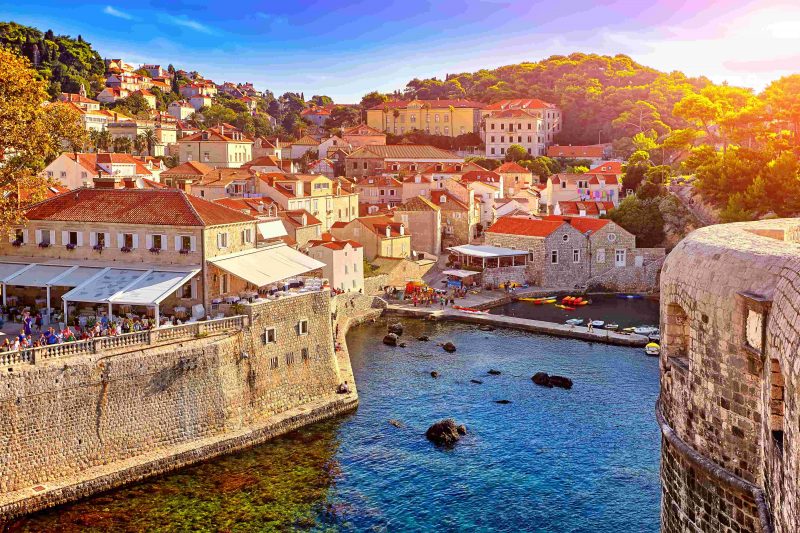
Best Time to Visit Croatia: A Season-By-Season Guide
Croatia is the stuff of dreams for many travelers. The calm, light, turquoise waters of the Adriatic Sea, the stunning pebble beaches on the coast, the acres of vineyards, and the centuries-old Medieval towns all make Croatia one of the most interesting and charming countries in Europe.
This small country stretches out for almost 22,000 miles in total. But don’t be fooled by its size! Even though it is only the 127 th largest country in the world and it only has 4 million inhabitants, Croatia’s landscapes make up for it. It’s hard to find a country with so much natural beauty to offer. Croatia has lakes, mountains, dozens of islands, and pebble beaches. Wherever you choose to go in the country, you’ll for sure be fascinated.
Tourism is on the rise as more people think that now is the best time to visit Croatia. But the country has a long history of enchanting travelers with its natural gems. The Romans built summer villas on the coast of Croatia and came here for the perfect get-away from their ruling the Empire. People from the entire Balkan peninsula have been coming here for centuries to bask in the warm sun of Croatia. And now people from all over to world visit this small country in the Adriatic Sea!
It has never been easier to get to Croatia and have the vacation of your life here. Airlines from Europe and the United States fly more often to one of the country’s airports, hotels have been completely renovated to embrace the modern times, and the roads connecting all the cool and once-inaccessible points of the country have been improved.
If you’re planning a summer, spring, fall, or even winter vacation, it’s time for you to explore Croatia! To help you decide when is the best time to visit Croatia, we’ve put together this Croatia travel guide for you.
Weather in Croatia
When deciding when the best time to visit a country is, the weather will probably the first thing you’ll think about. No one wants to plan a beach vacation and then realize it will be raining and windy for most of their trip.
To help you avoid these annoying vacation-ruining mistakes, we’ve put together this local travel guide. It tells you how the weather typically is in each region of Croatia, what are the best months to visit a certain location, cultural events going on in the country during certain months, and when to catch the best travel deals. We’ll help you figure out when the perfect time to go to Croatia is for you and help you figure out what to pack with you!
In the Adriatic Coast…
The Adriatic coast is one of the many reasons people book their trip to Croatia — and for good reason! It boasts the best climate in the entire country, one similar to that of southern European countries: Mediterranean.
Winters in the coast of Croatia are nowhere near as harsh as they are in Central Europe, for example. The southern Croatia coast has been blessed with mild winters temperature-wise but a lot of rain. January and February are the coldest months in the coast. During the day, you can expect temperatures of 11 and 12 degrees Celsius (between 52 and 54 degrees Fahrenheit). During the night, however, the temperatures drop to only 5 and 6 degrees Celsius (between 41 and 43 degrees Fahrenheit).
But despite the temperature not being that low, the so-called bora takes tourists by surprise. This is one of the strongest-blowing winds in the world. It’s so strong that it sometimes closes down bridges and coastal roads!
The summer months are the best time for a perfect holiday on the beach. The temperatures rise to a whopping 30 degrees Celsius (86 degrees Fahrenheit) and even higher during the day! The nights are much cooler and just right to go for nightly walks or go our partying to bars and clubs. You won’t see the temperatures drop below 20 degrees Celsius (or 68 degrees Fahrenheit), not even in the wee hours of the morning.
There’s a good reason why so many people love going to the beach in the summer in the Adriatic Coast. During this season, the sea is warm and it’s common to see the water temperature rise to 24 degrees Celsius (or 76 degrees Fahrenheit) — very inviting for a swim! To top it all off, there are only, on average, 6 days of rain during the entire summer and a whopping 11 hours of average daily sunshine. What more could you ask for when you plan a beach vacation?
Both spring and fall are the “middle” seasons. They’re not as cold nor as rainy as winter, but they aren’t warm and sunny all the time like the summer months are.
In the north…
The climate in the lowlands around Zagreb, in the northeast, and in the east of Croatia is much different from that in the coast. This part of the country has what is known as the Continental climate, meaning that it’s similar to that in Central Europe: the seasons are very pronounced and very different from one another.
In the winter months, the temperatures usually plummet down to 2 degrees Celsius (35 degrees Fahrenheit) during the day, and at night, it’s not unheard of for them to drop below freezing. This makes this part of Croatia a great ski resort as the white, light snow falls down hard during the coldest months of January and February.
Summers, on the other hand, are much more pleasant! During the day, the temperatures usually reach 27 degrees Celsius (80 degrees Fahrenheit) and even go above it. While nights are somewhat cooler, they’re perfect for strolls as the area isn’t known for strong gusts of wind. Another great thing about the summer is that it’s dry, unlike winter. You will most likely not see any rain during your stay in the northern and eastern parts of Croatia.
The months of spring and autumn are always a surprising in-between and mix of the two seasons. It’s neither too hot nor too cold but there aren’t as many sunshine hours or as many days of clear sky.
In the Center…
The mountains in the central part of Croatia, known as the Dinaric Alps, has what’s known as an alpine climate. While on the other side of the mountains, sunshine and mild winters bless the Adriatic Coast, the Dinaric Alps have cool summers and cool winters.
During the winter, temperatures drop drastically to 5 degrees Celsius (40 degrees Fahrenheit) during the day and to below freezing at night. It’s not unusual for the nights to be very chilly — the thermometers often plummet to -3 degrees Celsius (or 26 degrees Fahrenheit).
Summers, on the other hand, are much more enjoyable. They’re not nearly as hot as the summers on the Adriatic Coast, perfect for people who don’t want to get heatstroke. You’ll likely see forecasts of 24 degrees Celsius (75 degrees Fahrenheit) during the day — or even higher — and of slightly less at night. The cool summer breezes in this mountainous region make being outside much more tolerable than near the coast.
Finally, the spring months (March, April, May) and the fall months (September, October, November) are an interesting mix of the summer and winter seasons. There can be quite a bit of rainfall in the area as well as mostly cloudy days. You also won’t find the warm summer days during these months either.
Winter Months (Dec, Jan, Feb)
As we’ve mentioned, the weather during the winter months can be quite different from place to place in Croatia. But the one thing all of Croatia has in common is that it sees its fair share of extreme weather.
The months of December, January and February are great months to go to Croatia if you want an off-peak season winter adventure.
Festivities lovers will adore Croatia during mid- to late-December. People in Croatia go all out to celebrate their holidays, and Christmas has to be the biggest one. Despite the weather being cold and rainy, you’ll still have a blast in any of the biggest cities of Croatia.
Dubrovnik comes alive during the Christmas festivities. Every year, the main tourist attractions (Peskarija, Stradun, Pile, and Lazareti) are lit up with scenes from the nativity to dazzle spectators. This celebration is part of the fun and exciting Dubrovnik Winter Festival that lasts the whole month of December and a fraction of January. There’s no describing just how beautiful the city becomes! And, since it’s not that cold during the day, why not walk around the Dubrovnik wall ruins? You’ll most likely have them for yourself and they make for a perfect scenic view of the city.
But Zagreb is the city that has the most Christmas events going on in December. Being the capital, it’s no wonder that the celebrations are even more intense here. Every year leading up to Christmas there are markets set up in the city’s squares. One of the best travel tips we have for you is: visit a Christmas market, try some local delicacies, have a hot drink to warm you up, and follow the Christmas lights across the historic city center! We believe this really is the best time to visit Zagreb, Croatia without going over-budget or bumping into crowds wherever you go.
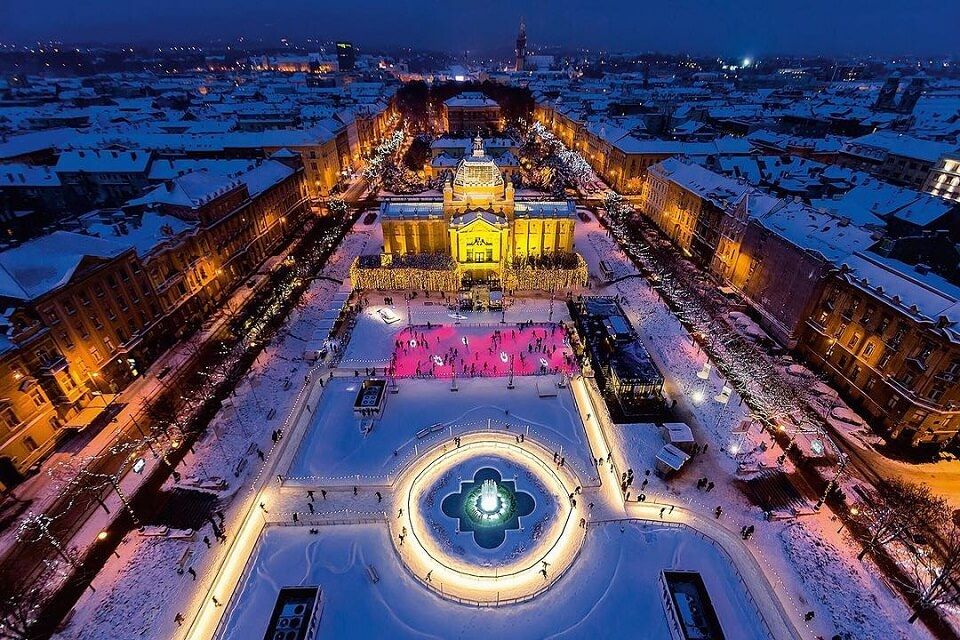
Another great month to see Croatia for city breaks is January. You can still feel the holiday spirit but the month is also the right time to avoid crowds. Because of this, it’s also one of the best months to go to Croatia if you’re on a budget, as you’ll find cheaper flights, accommodation, and other amenities.
Early January is, of course, marked by the New Year craze. Walking around the biggest cities of Zagreb, Dubrovnik and Split, you’ll still see Christmas decorations and feel the Christmas spirit in the air. This is also the time when stores have the biggest sales, which is perfect for shopping addicts.
Toward mid-January, most of the crowds have gone home. This is the ideal time to visit the city without running into hordes of tourists. You can walk along the ancient city walls of Dubrovnik and take in all the beauty of the city.
If you’re a fan of ski, you’ll already know that the Snow Queen Trophy is fought every January in Croatia. People flock down to Sljeme in the north of the country to see world champions compete for the coveted prize.
Since you’re in Sljeme, why not try to ski yourself? The Sljeme Ski Resort is only 15 km north of Zagreb and has great slopes even for beginners. There are five slopes in total, ranging from beginner-friendly to hard, and three lifts. The slopes have around 4045 meters in length (a little over 2.5 miles). This is where Olympic-gold-medalist Janica Kostelić learn how to ski!
Another thing you’ll love about visiting Croatia in January is the annual Night of Museums event. For once night a year (usually the last Friday in January), the entrance fee to all museums is waved. What better time to visit the Glass Museum in Zadar, the Museum of Broken Relationships in Zagreb, or the Museum of Croatian War of Independence in Dubrovnik?
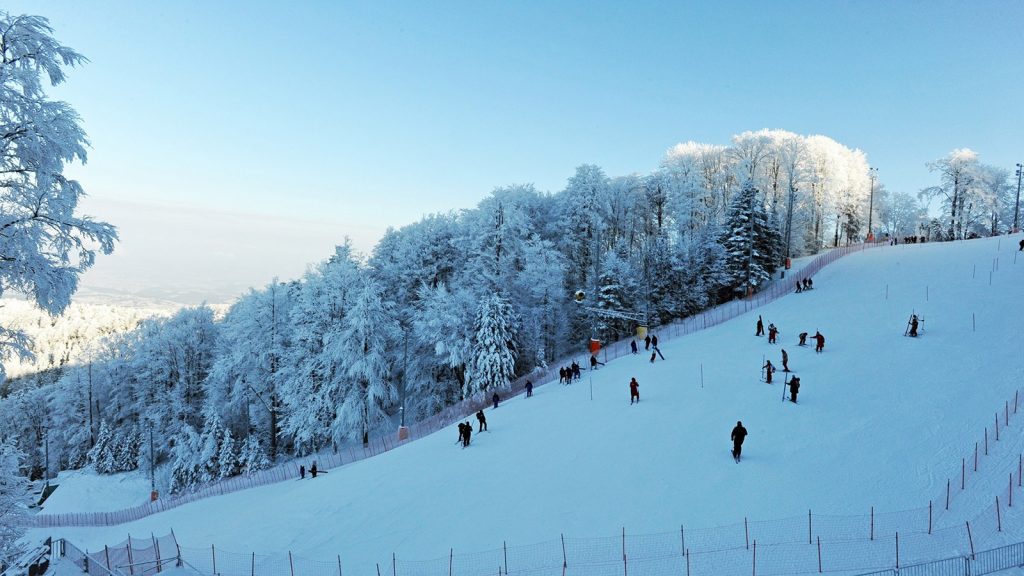
If you love partying and immersing yourself in local folk culture, you’ll love Croatia in February.
February is known for being the best month to enjoy the world-famous Rijeka Carnival. This festivity starts in mid-January and it runs until early-March. As you can see, the celebrations go on for a whopping three months as this is the largest Carnival in all of Croatia. Rijeka is a beautiful port town on the Adriatic Coast. During any other time of year, it might look like any other 19 th -century European town — but not during the Carnival. People dress up in colorful costumes, organize parades, create large cars completely adorned, and laugh a lot.
The Festival of Saint Blaise is another important and interesting happening in Dubrovnik. Saint Blaise is the patron saint of the city has its celebrations have been going on every year since the year 972. If you happen to be visiting Dubrovnik when the festivities are going on, you’ll most likely see mass processions and the relics of Saint Blaise. It’s a great insight into what religious and spiritual life is like in Dubrovnik.
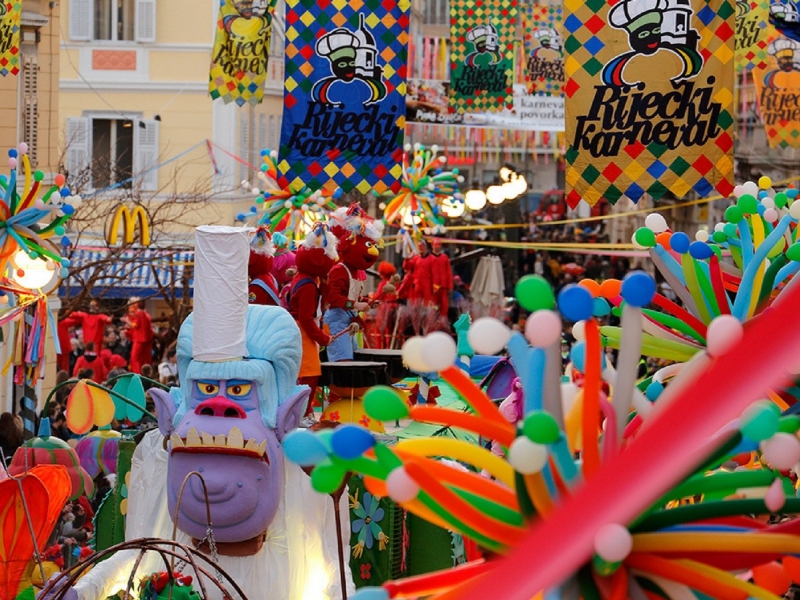
Spring Months (Mar, Apr, May)
When spring comes, so does all the life that went to sleep during the three months of winter in Croatia. If you’ve never visited the country, now would be a great time to. The flowers and plants all start to bloom, and the snow starts to melt in the mountainous region and in the north.
The spring months of March, April and May are good months to organize your trip on a budget. You should find cheap flights to Croatia and enjoy the relatively cheap accommodation options — especially in Dubrovnik, Split, and Zagreb.
March is a great month to visit otherwise-packed tourist destinations. The main cities, in particular, are perfect this time of year. Because it’s not the right time yet for a beach holiday, there are very few tourists in the country in March.
Take advantage of this by going on a city break in Croatia in March. We’ve already mentioned how beautiful both Zagreb and Dubrovnik are, but it’s never enough. These towns are extremely old and have so much history behind every single piece of stone. But there are many more cities worth exploring in Croatia. Split, for example, is one of them.
Split is a town on the Dalmatian Coast, Adriatic Sea. The city has been on this exact place since the 4 th century, when Roman Emperor Diocletian erected a fort here. Even after all these centuries, you can still see and visit this palace! The palace hugs the city of Split where you can find a multitude of courtyards, Roman ruins, houses, hotels, cafes, shops, and even bars. Because of its location, March here isn’t very cold, certainly not as cold as most of Europe is at this time of year!
Another fascinating event not to be missed is the Zagreb Festival of Lights. For a week in mid-March, Zagreb is home to a spectacular light-projection show. The historic center of the city is lit up with audio-visual installations. Think of 19 th -century buildings with gorgeous and massive façades being the background for the projection of stories told entirely through light and music — amazing, right? Every year, the theme is the same: renaissance. The event takes place in March for this exact reason too. Since March symbolizes the awakening from the wintery sleep and nature and cities come back alive again during this month, the light shows also make the buildings come alive. If you’re in Zagreb, make sure not to miss the viewings from 6 p.m. to 9 p.m.!
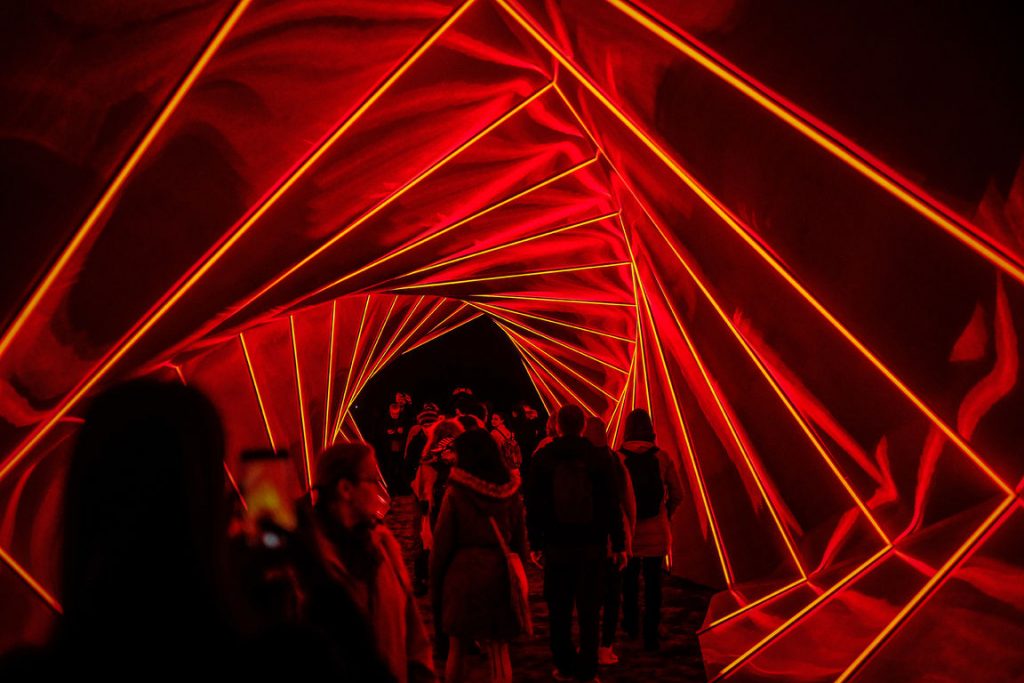
While Croatia isn’t warm yet and only really brave people can go for a swim in the Adriatic Sea, there’s still plenty to do in April. You’ll especially notice how green and colorful everything is. After all, this is when spring is in full swing!
April is a great time of year to do a custom-made trip by train or car to explore all the nooks and crannies of Croatia. There is so much to see and April, being a shoulder month, will be easy on your wallet. Hotels and tourist attractions are not yet full, so you’ll feel like you have the country to yourself with no queues and no absurdly high prices.
We highly recommend taking a trip to the Plitvice Lakes National Park. The park is open year-round, but April is when it comes into itself. The waterfalls start to run once more, enchanting all visitors, the mountains are covered in green again, and there are stunning flowers blooming everywhere you look. It’s one of the coolest attractions in Croatia, especially if you’re a nature lover!
Lastly, the weeks between late-April and early-May are the perfect excuse to pay a visit to Croatia for wine lovers. Poreč is a coastal town in the county of Istria that is famous for its amazing wines. The celebrations going on celebrate wine and the region’s lifestyle. Visit this lovely little town and taste the Malvazija wine that they’re famous for producing locally. It’ll warm your body right up!
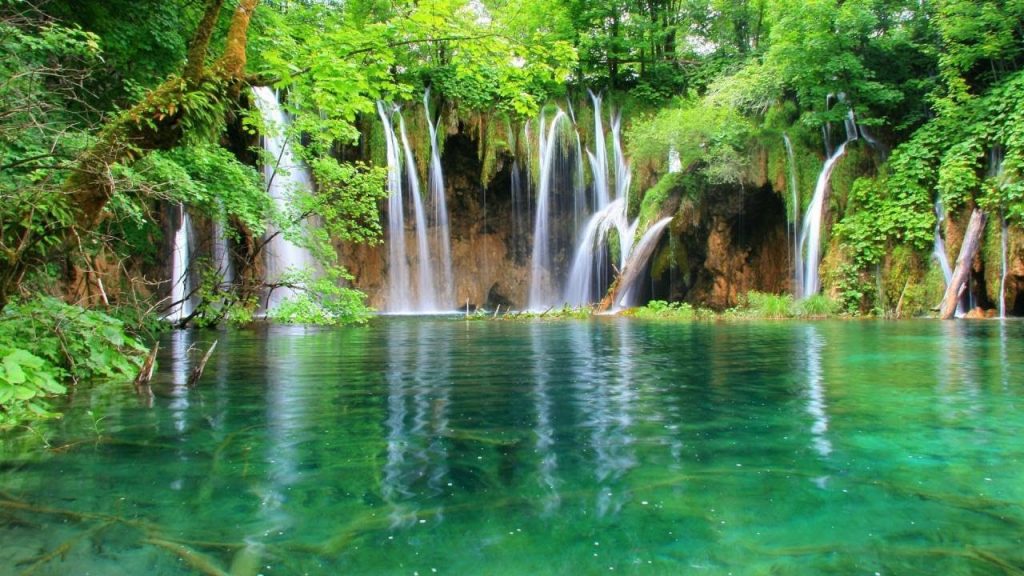
The last month of spring is, in our opinion and according to many travel experts in Croatia, the best time of year to visit Croatia. It’s the very last full shoulder month when you can still take an advantage of cheap accommodation and flights and no hordes of tourists.
This is the perfect time to take a ferry to the Island of Hvar and enjoy the island for what it is: a gem in the Adriatic Sea with unparalleled architecture. The winding, narrow streets and amazing weather during the shoulder and summer months make Hvar island a hotspot for partiers.
If you want to get away from the party scene, May is a great month for venturing more inland. The towns of Jelsa, Stari Grad, and Vrboska will give you a whole new perspective of life in the Dalmatian villages.
Another great holiday in Croatia in May is going up to the mountains. Sure, the weather is still a little chilly and you’ll need a coat and maybe a scarf, but nothing beats the fresh air of the Croatian mountains. If you want to get in touch with nature and take a break from life back home, then May is the month to travel here.
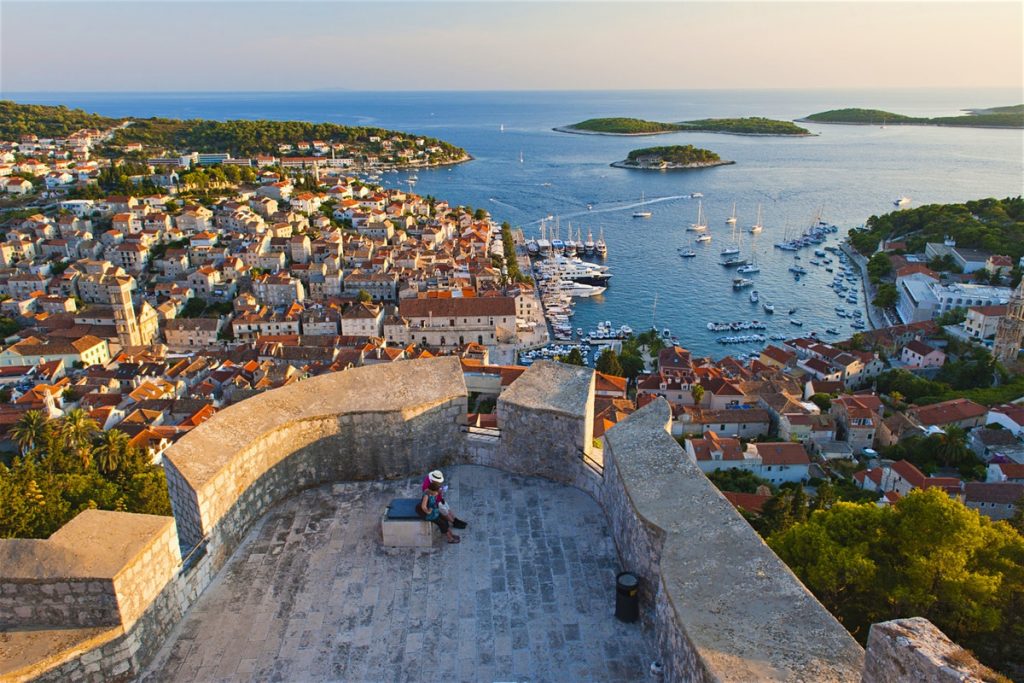
Summer Months (Jun, Jul, Aug)
Everyone knows that June, July and August are the peak season in Croatia. The temperatures go way up, the sun shines almost non-stop for the 11 hours of sunshine every day, and the Adriatic Sea becomes warm and inviting for a swim.
While June, July and August have the best weather, this is also when the cities and beaches flood with crowds of vacationing locals and tourists. This makes all the prices (for plane tickets and accommodation) sky-rocket. If you’re not looking to travel within a limited budget, the summer is the best time to visit Croatia.
If you love music festivals, you won’t want to miss one of Croatia’s largest festivals. INmusic is a summer festival that happens every year for two to three days in a hip neighborhood of Zagreb, Jarun. This once-peaceful neighborhood that’s full of nature comes alive when hundreds of thousands of festival-goers flock here. The billboard is always dominated by big international names, such as Queens of the Stone Age, David Byrne, Nick Cave & the Bad Seeds, Interpol, Portugal! The Man, and many more.
June is also a great time to hit the beaches on the Adriatic coast. The sea is warm after a long winter and spring and ready to welcome beachgoers from all places. You won’t find sandy beaches as you do in Spain, Portugal or Italy, but something much more special. Beaches in the Adriatic coast have large and small pebbles instead of sand. It’s quite an unusual sight if you’ve never been to one of these beaches, but totally worth it.
If you’d rather go more mainland, June also has you covered. June is the month when the lavender fields the country has are in full bloom. Whether you’re driving along the highway or you’ve chosen to take the train, don’t miss out on the stunning view that is seeing miles and miles on end covered in a deep purple hue.
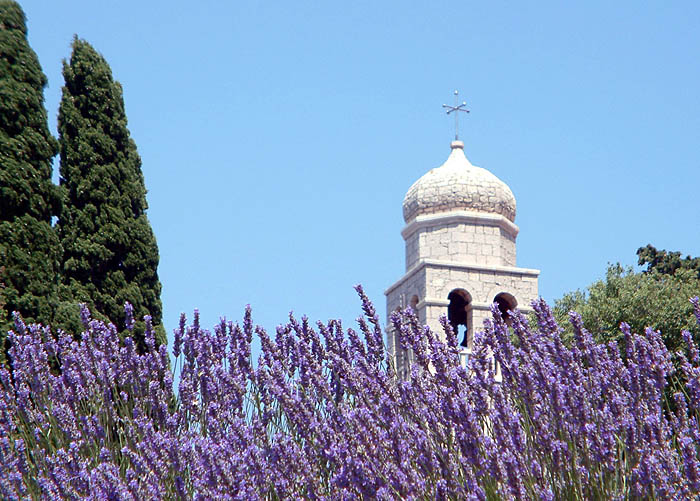
During July, a lot of tourists drive to Croatia from Italy, which can make the cities and beach towns even more crowded. A fantastic alternative to busy cities and villages are the car-free islands of Lopud and Zlarin. For cyclers especially this will be a great trip. They’re not as crowded as other neighboring islands and the weather there in July is absolutely perfect. You can take your bike for a ride around the islands since it’s summer and nature is at its finest.
If you’re into partying, then July is just the month for you, with all its nightlife. The island of Hvar is the perfect example of what the party scene is like in Croatia and the Dalmatian coast. Every night there are clubs where famous DJs perform to thousands of people who dance the night away. Another cool thing to consider when visiting Croatia in July is partying on a boat. There are several party cruises that sail every evening and only come back to shore in the early morning. It’s a great way to meet other travelers who share your love of partying and a chance to chat with a local about the party scene!
Finally, if you’d call yourself a party animal, don’t miss the Ultra-Europe music festival. Split is home to one of the biggest electronic music festivals in all of Europe, and every July without fail the house is brought down by big DJs. Hardwell, David Getta, Afrojack, and Avicii are just some of the many DJs who have liven up the party here in Split during the month of July.
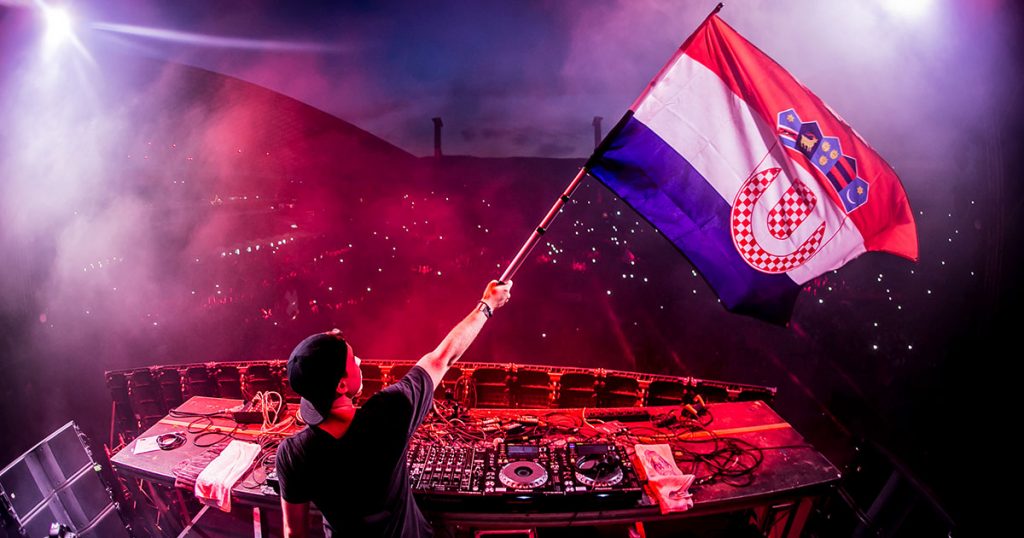
The most peak month of traveling in Croatia is August. The prices of everything are through the roof and the country is crowded, but nothing beats the things Croatia offers in August.
August is the best month to sightsee in Croatia and stay close to the ocean. If you’re visiting the coast, you’ll soon realize just how hot it gets both in the day and at night. This gives you the perfect excuse to go for a swim in the crystalline waters of the Adriatic Sea. Another great way of cooling down is practicing water sports. Croatia has lovely beaches that are perfect for water sports. Snorkeling, speed boating, kayaking to discover the many caves, and jet skiing are all great ways to make your vacation even better.
August also brings with it the Dubrovnik Summer Festival. Art and music displays are spread around the city so that visitors can absorb some more of the local culture before they depart. During the course of six weeks, there are also countless artists performing live, for free, in open air on the streets of Dubrovnik. If you love culture and the arts, we’re sure you’re going to love the Summer Festival.
Finally, there is yet another festival blesses Croatia. In the Dalmatian coastal city of Zadar, there is a festival every year dedicated to foodies. Local traditional and modern cuisine are put on display for all to savor. It’s the best opportunity you’ll get to experience local delicacies, such as figs, countless types of cheeses, and the best seafood you’ll have in the Balkans. During this festival, the island of Riva gets completely transformed. The small boats are used as ambulant markets of the freshest ingredients grown or caught in the region.
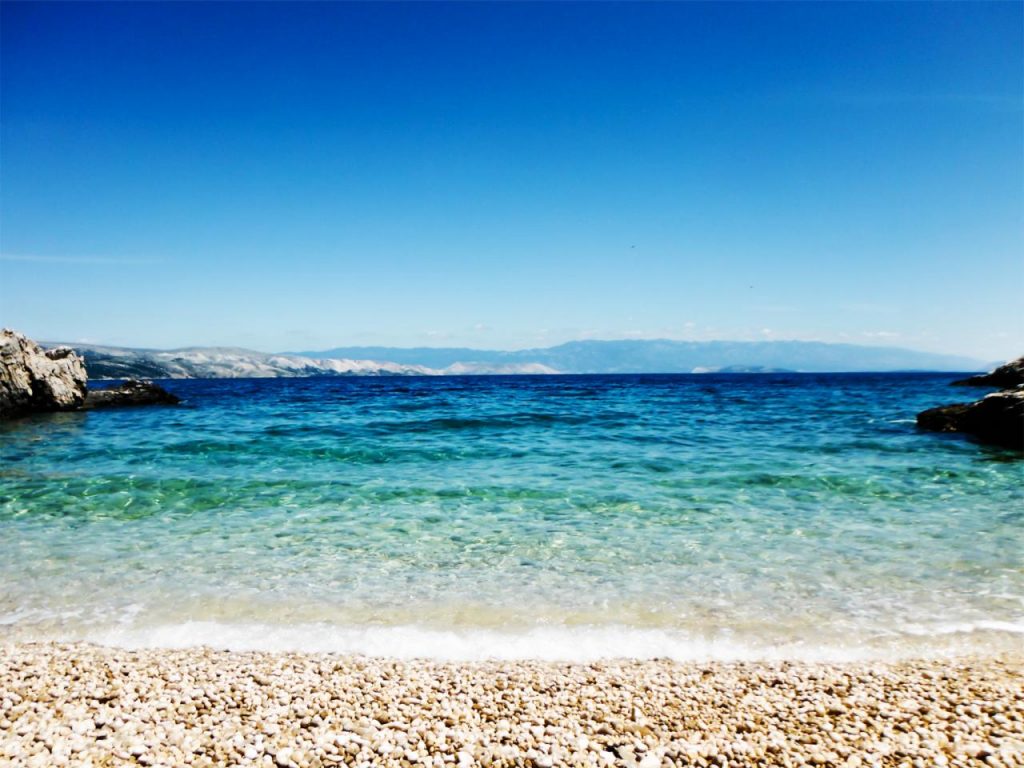
Fall Months (Sep, Oct, Nov)
September, October and November are the months when everything starts to calm down in Croatia again. The days become shorter, the temperatures coolers, the days of sunshine fewer, but the cultural events in Croatia keep going strong.
The weather during these months gets progressively colder until winter engulfs the whole country once more. It also means that the hordes of tourists go home and the cities become much quieter. These are what’s known as the shoulder months and they’re the best time to visit Croatia on a budget.
The month of September is great for exploring Croatia culture-wise. There are dozens of festivals and festivities that celebrate the traditions of all regions of Croatia.
In the town of Poreč, there’s a festival dedicated to history for three days during September. People dress up in Baroque-style costumes and try to mimic to the viewers what life was like back then. The festival, known as Giostra, is the perfect chance to learn all there is to know about Croatia in the 18 th century. There is even a knight tournament that is held at the end of the celebratory period that perfectly replicates the ones from 1745!
If you’re a film buff, you’ll love hearing that the Split Film Festival takes place in September. This is an international film competition that lasts a total of one week and gathers some of the most innovative and interesting film directors in all of Europe.
Finally, the Food Film Festival that is held in Zagreb in September mixes two fan favorites: food and films. Over the course of a week-and-a-half, the movies shown in several Zagreb theaters focus on gastronomy. If you’re both a foodie and a film buff, you won’t want to miss out on the Food Film Festival in September.
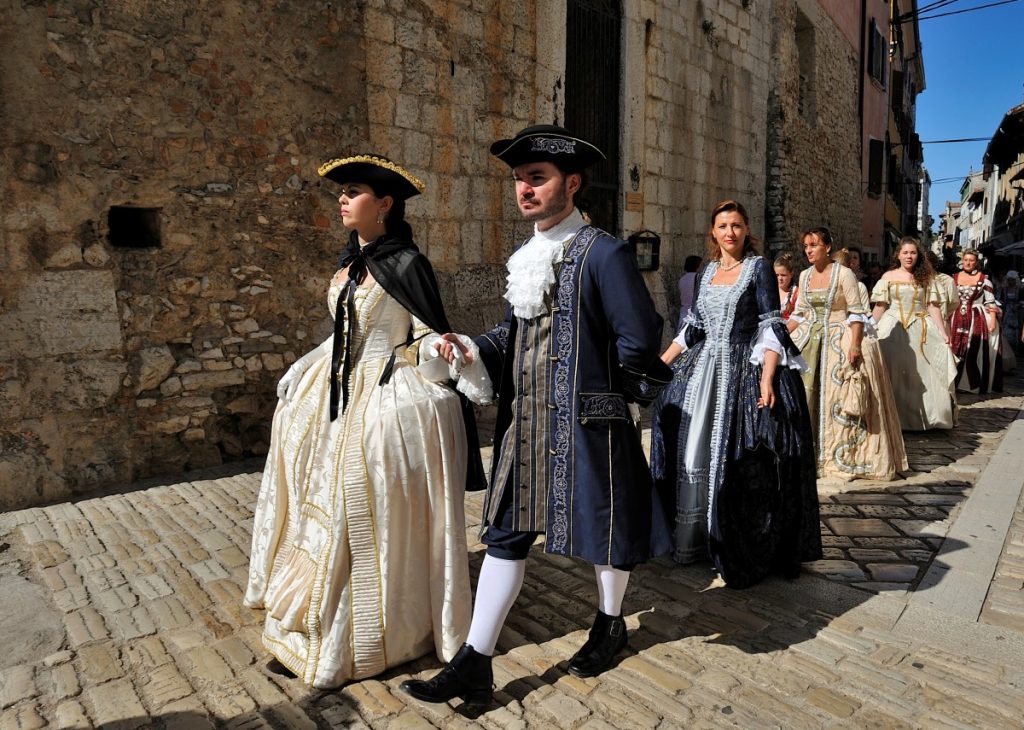
October in Croatia is as close to the saying “getting back to the roots” as possible. All the crazy of tourism has come and gone and now only locals can be seen wandering around the major cities and going about their lives in rural towns.
The month of October is when grapes start being harvested to be later turned into famous Croatian wines, such as Plavac Mali. The fact that in rural areas it’s time to harvest all the crops makes October a great month to go on a self-drive tour by car through the countryside.
In Istria, there’s another food festival that blows foodies’ minds away. The Istrian Truffle Days showcase the best truffles the Balkans have ever seen. Restaurants in this area take the local truffles and incorporate them into dishes to make them great. Try having a truffle omelet, a truffle risotto, and a truffle salad for a great price and dive into the local gastronomic culture! It’s also the perfect time to visit Livade and Motovun, two beautiful towns close to the Slovenia border.
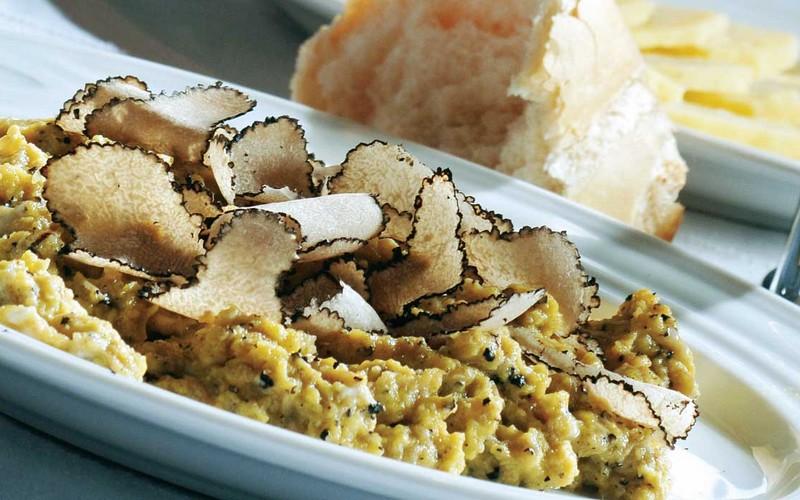
In November, the weather has become wet and cool. This makes traveling in November somewhat unpleasant if you were planning on being outside. However, it’s the perfect chance to dive head first in the Croatian cultural scene.
Saint Martin is a holiday celebrated in many European countries on November 11. It has religious roots but nowadays it’s more of an excuse for people to drink warm wine and eat chestnuts and sweet potatoes. The dish of the day if goose, which is slaughtered and roasted all in the same day. The towns of Tar, Vrsar, and Buzet are the places to go if you want to live this day to the fullest.
November 1 st is All Saints Day in Croatia, yet another religious holiday. But this one is lived with much more attachment to religion. On this day, people go to their loved ones’ graves to place flowers and candles as a symbol of their love. If you’re interested in finding out more and seeing a Croatian cemetery, try visiting one when the commotion dies down. But don’t forget: always be respectful — this holiday means a lot to Christian Croatians.
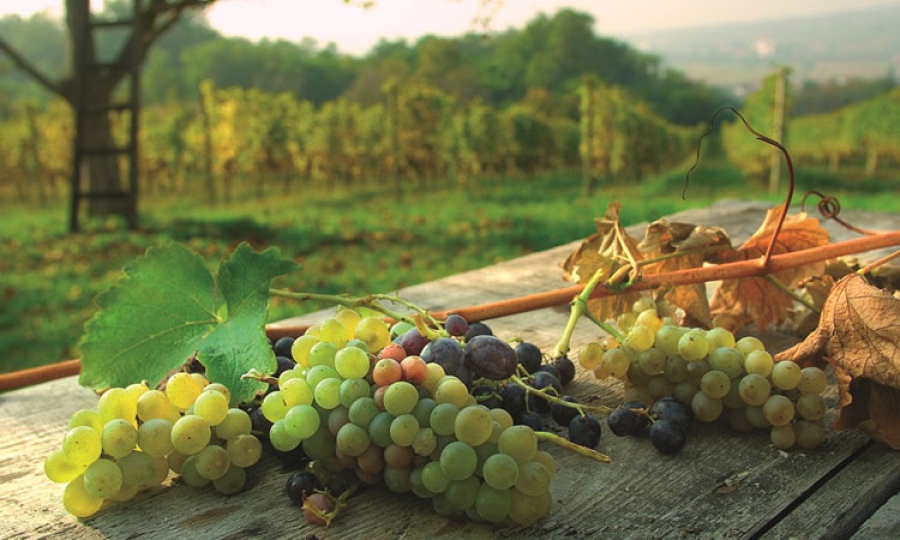
Frequently Asked Questions about The Best Time to Visit Croatia
When is the best time to visit dubrovnik, croatia.
You’ll get the best picture of Dubrovnik during the shoulder months of May and September. The weather isn’t bad at all and you’ll actually get to move around in the city without bumping into other tourists.
What languages are spoken in Croatia?
The only official language in Croatia is Croatian. While not everyone speaks English, especially not the older generations and people in small towns, you can still get by relatively easily using English and by learning a few Croat words.
What is the currency used in Croatia?
The Croatian Kuna is the official currency of Croatia. But because the country is part of the European Union and is used to a heavy influx of tourists, some places in the major cities accept Euros and American Dollars as well.
Recent Posts
- The Ultimate International Travel Checklist
- Passport Book vs Card Comparison
- Top 15 Fun Things to Do in Las Vegas for Couples
- Top 21 California Coast Road Trip Stops
- Best Beaches in Panama
- Adventure and Backpacking
- Central America
- Family Trips
- North America
- South America
- Croatia Tours
- Croatia Travel Guide
- When to Visit Croatia
Croatia in July: Travel Tips For Summer
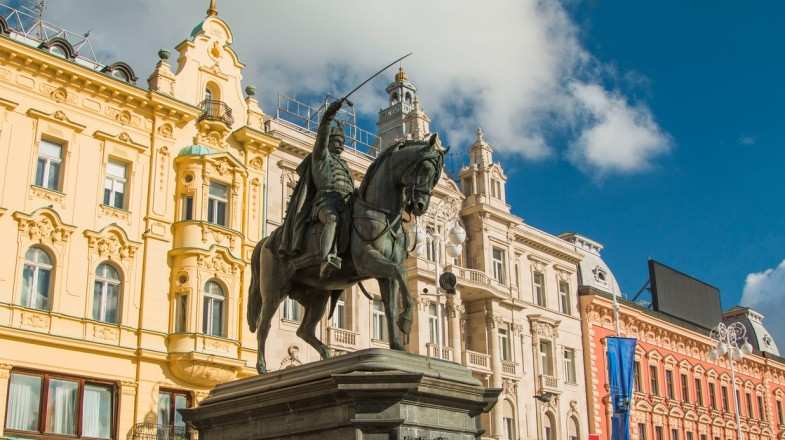
- ~ mins read
July is Croatia’s most popular tourist month—and also its hottest. The sunny weather and warm waters of the Adriatic Sea draw thousands of visitors to the country’s beaches and other popular destinations. Enjoy the art, architecture and cuisine of capital Zagreb, discover Roman ruins at Pula and Split, visit lovely Adriatic islands like Hvar and Lošinj, and go on an exhilarating hike on the Premuzic Trail. Read on to find out what you can expect from your Croatian holiday .
- Julie Stokes
- From England
Croatia Weather in July

If you look at the weather by month, July usually tops the chart when it comes to temperatures in Croatia. But it is not too hot to enjoy this spectacular country. In the Dalmatian coast, the evenings are cooler in popular destinations like Split and Zadar, though there are chances of intermittent rain showers.
In Split, the average temperature ranges between 21°C and 29°C in July. Zadar sees an average high of 27°C and average low of 21°C. In the capital city of Zagreb, the mercury fluctuates between 14°C and 26°C. Meanwhile, daylight hours in Croatia in July are longer than other months at more than 15 hours.
For a seasonal overview, check our guide on the best time for visiting Croatia .
Weather in Croatia in July - Rainfall and Temperatures
Why visit croatia in july.
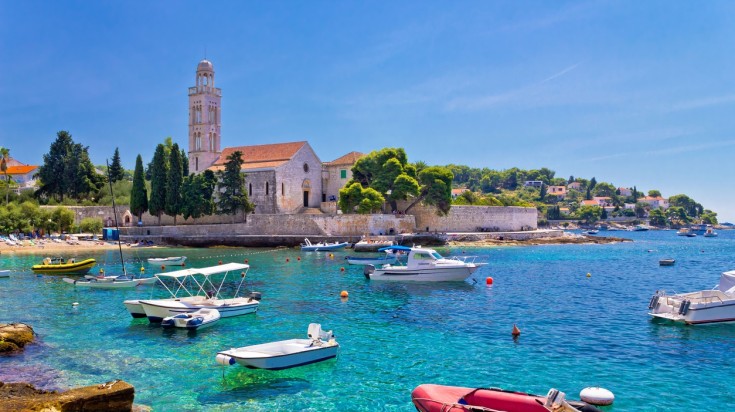
If you’re thinking of vacationing in Croatia in July , you’ll have lot of company. Here’s why July is such a popular month to experience Croatia.
- Festive events: Croatia has an extraordinarily rich calendar of events and festivals in July. The chart-toppers include Ultra Europe in Split, one of Europe’s biggest electronic music festivals; Courtyards, a 10-day feast of concerts and performances in Zagreb; Labin Art Republika, which features street performances and art events; Dubrovnik Summer Festival, which has everything from theater and opera to concerts and dance; and Pula Film Festival, with its line-up of Croatian and international films.
- Beach fun: All sun-worshippers and party animals head to the beaches in Croatia . This is the time when waters are perfect to take a dip and parties continue till the wee hours. Top beach destinations include Zlatni Rat, Nin and Lovrečina Bay.
- Island hopping: There are hundreds of islands off Croatia’s nearly 2,000-kilometer-long coast and you will be spoiled for choice. Hvar, Vis and Rab are some of the dreamiest islands you can visit in Croatia in July, but there are many other smaller, quieter gems too.
- Water sports: Croatia’s long coastline, islands, lakes, rivers and lagoons make it a dream destination for water sports. From sailing and kayaking to snorkeling and scuba diving, July is a great month for these activities.
Where to go and what to do

Croatia’s lovely beaches and islands are the biggest tourist attraction in summer. But it is not all sun, sand and water sports. There are many places you can check out and things you can do if you visit Croatia in July. One of the best things to do is explore Croatia’s stunning national parks like Plitvice Lakes National Park and Krka National Park.
Plitvice Lakes National Park is Croatia’s largest park and has 16 lakes inter-connected by a series of waterfalls. The deep woods are home to animals like bears, wolves and boars. The park has several hiking trails and waterfall-viewing points. Named after the Krka River which flows through it, Krka National Park is known for its magnificent waterfalls and the small riverine island of Visovac with its Franciscan monastery.
July is also the perfect month to discover Croatia’s charming towns and cities. In the coastal town of Split, walk around Pjaca Square, with its old town vibes, lovely cafes and renaissance architecture; climb up the unforgettable Klis Fortress; and visit the beautifully preserved Diocletian’s Palace.
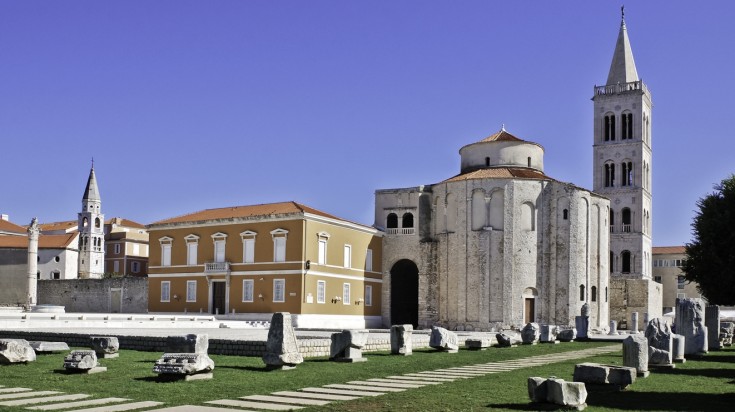
The old town of Zadar with its cobbled streets, narrow lanes, Roman ruins and medieval churches is best explored on foot. Top sights include the Church of St. Donat, built on what was an ancient Roman forum; two art installations called the Sea Organ and the Sun Salutation; and the beautiful walls and gates of the old city.
July is an excellent month to discover Zagreb with all its quirks and delights. Go underground and take a walk through the atmospheric 350-meter-long Gric tunnel, once a World War 2 air-raid shelter. Visit the famous Museum of Broken Relationships, which tells the stories of love lost from across the world. Try some of the local dishes which make Croatian cuisine so famous: Roasted Turkey with mlinci (dried flatbread); Istrian fuzi (a type of pasta); Strukli (dough filled with cottage cheese and sour cream), and Cuspajz (meat and vegetable stew).
Croatia in July is hot, crowded—and irresistible. Whether you want to enjoy coastal towns, explore beautiful islands, discover historic sites or soak in urban vibes, there is an exceptional variety of things and places to choose from. Contact our local travel experts to plan a customized trip to Croatia .
Other articles: Croatia in June Croatia in August
Related Articles
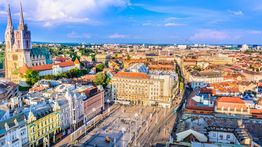
Best Time To Visit Croatia
Croatia has always been a picture–perfect des... read more

Croatia in January: Weather, Tips and More
January is the coldest month of the year to v... read more

Croatia in February: Carnivals and Travel Tips
February is the last winter month in Croatia.... read more
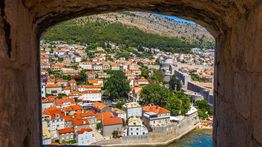
Croatia in March: Weather and Travel Tips
Thinking about visiting Croatia without spend... read more
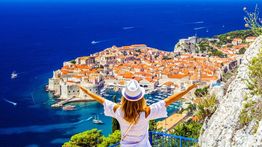
Croatia in April: Fewer Crowd and Better Rates
Croatia in April offers plenty of sunny days ... read more

Croatia in May: Travel Tips For Spring
It is the start of the tourist season in Croa... read more
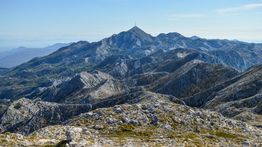
Croatia in June: Weather, Tips & Water Sports
The high tourist season starts in Croatia in ... read more
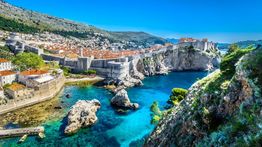
Croatia in August: Travel Tips for End of Summer
Looking for the best place to vacation in Aug... read more
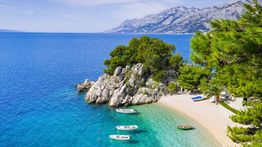
Croatia in September: Weather and Travel Tips
September in Croatia is when summer is in its... read more
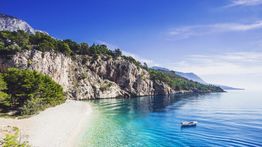
Croatia in October: Travel Tips for Perfect Weather
Wander the streets of the Old Town of Dubrovn... read more
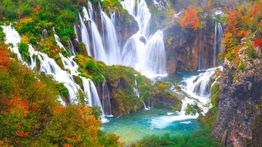
Croatia in November: Travel Tips for Start of Winter
November is when autumn gives way to winter i... read more
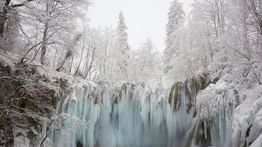
Croatia in December: Tips for A Christmas Holiday
Croatia in December spells the arrival of win... read more
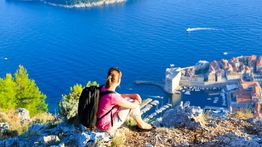
Summer in Croatia: Perfect Weather & Enchanting Experiences
Nestled along the azure waters of the Adriati... read more
Related Categories
- How Long To Stay In Croatia
- What To Do In Croatia
- When To Visit Croatia
- Where To Go In Croatia
- Previous Post

Popular Destinations
- Europe Tours
- Everest Base Camp Trek
- Italy Tours
- Spain Tours
- Argentina Tours
- Canada Tours
- Sri Lanka Tours
- Chile Tours
- Antarctica Tours

- € EUR
When is the Best Time to Visit Croatia?

Published on: April 29th, 2024
Last modified: April 30th, 2024
The best time to visit Croatia is from May to June and September to October. These months are the best time to visit Croatia to avoid the crowds and intense heat of the peak season in July and August, but still experience warm, sunny and dry conditions. These shoulder season months are perfect for enjoying beaches, island hopping, sailing, hiking and sightseeing.
Sitting at the crossroads between central and southern Europe , Croatia’s landscapes, culture and history are enthralling and distinctive. The spectacular coastline boasts mediaeval cities, Roman ruins and calm coves, which are perfect for swimming in the Adriatic. There’s also a diverse collection of islands to explore. Inland there’s hilltop towns, rolling olive groves, boutique wineries, stunning lakes, cascading waterfalls and the capital Zagreb , with its gothic architecture.
We’re often asked why timing your visit to Croatia is crucial. The main reason is because Croatia’s weather conditions change pretty dramatically throughout the year, dictated by the country's pronounced seasons. This means your experience in January, a cold winter month with average highs of just 9°C (48.2°F) will be very different to July, a hot summer month where temperatures often exceed 30°C (86°F).
Month by Month Climate Guide
To help you understand Croatia’s climate we’ve compiled a useful month by month weather guide below.
Different locations can experience varying climates at the same time of year and we will explain this below. These differences are often due to geographical factors. For example, southern coastal regions will feel warmer than northern inland regions.
January in Croatia
January is one of the coldest months in Croatia and one that sees some of the heaviest rainfall. On the Dalmation coast, the major cities such as Dubrovnik average around 7°C (44.6°F) during the day and will see some rain nearly everyday. Zagreb will feel very chilly with temperatures dropping to 3°C (37.4°F) and Plitvice Lakes even colder at just 1°C (33.8°F).

February in Croatia
February is another winter month with slightly warmer temperatures than January, although it’s certainly still chilly at around 9°C (48.2°F) on the coast. Towards the end of the month the temperatures can start to climb marginally with a hint of spring on the horizon. You could expect around 11 or 12 days of rain in Split during the month of February, its also the month to visit to witness the annual sailing regatta.

March in Croatia
March will still have the chill of winter, although coastal areas and islands such as Hvar are starting to feel a little milder, exceeding 12°C (53.6°F) by the end of the month. There’s slightly more of a divide in the regional climates in March with inland areas such as Plitvice Lakes and Zagreb feeling quite chilly at around 8°C (46.4°F).

April in Croatia
Although April is the start of spring, it’s still not quite warm enough for beach activities. These cool, yet sunny, conditions can be wonderful for activities and sightseeing, especially if you consider how hot the summer months (June to August) can get. Korčula , Hvar and Split are warming up at around 17°C (62.6°F) and see reduced rainfall, just 61mm in the month.

May in Croatia
May in Croatia is the start of much warmer temperatures and is one of the best months to visit Croatia. Most of the main islands and cities will now feel warm at around 22°C (71.6°F) and rainfall amounts are dropping too. Overall, on the coast expect warm, sunny days without too many crowds – a beautiful time of year.

June in Croatia
June is a balmy month in Croatia and there’s a noticeable summer feel in the air. Split, Dubrovnik and Hvar average 25°C (77°F) with the island of Korčula feels even warmer at 26°C (78.8°F). Inland, Plitvice Lakes are also starting to feel warm up with temperatures reaching 21°C (69.8°F). June is another lovely time to travel to Croatia without lots of big crowds in the coastal hubs.

July in Croatia
July is Croatia’s hottest and driest month. It can also be one of the busiest in terms of travel. Locals and visitors flock to the coast to enjoy the refreshing crystal clear waters. It’s this stunning, twinkling coastline that draws so many visitors to the country– and for good reason. Temperatures in excess of 30°C (86°F) can be expected on the coast and Zagreb will be nudging close to those temperatures too.

August in Croatia
August is another hot summer month, very similar to July in terms of temperatures, although it can be ever so slightly cooler at around 28°C (82.4°F). You can visit Plitvice Lakes to cool down in August, as the temperatures inland feel a little more comfortable at around 23°C (73.4°F). At this peak travel time it can feel very busy in the main cities such as Split and Dubrovnik so now is a great time to visit lesser-known spots such as Rovinj .

September in Croatia
September is a beautiful month to travel to Croatia. The heat is less intense, yet still very warm and the conditions are, overall, dry. On the coast the sea breezes start to pick up in September which just adds to the more refreshing feel. The school holiday crowds have dispersed making travel more comfortable.

October in Croatia
There’s a noticeable change to the climate in October and it’s a wonderful time to visit for city and cultural explorations. Where September was still holding onto the heat, October can start to feel more autumnal in terms of temperatures. Zagreb will average 16°C (60.8°F) and Plitvice Lakes drops to 14°C (57.2°F) with stunning red and orange autumn colours in the national park.

November in Croatia
Temperatures drop again in November and the rainfall starts to significantly increase. In some areas such as Dubrovnik and Zagreb this is the wettest month of the year. There’s a wintery feeling in the air but Split, Hvar and Zadar stay mild at around 16°C (60.8°F). Overall, the north, south and inland divide becomes more noticeable in November in terms of temperatures with the south feelling mild and the northern and inland areas feeling colder.

December in Croatia
As the Holidays begin the temperatures drop once again across the whole country. The capital, Zagreb, is cold at 4°C (39.2°F) and the highest temperatures on the coast don’t tend to exceed 11°C (51.8°F). As the month progresses it gets colder and the mountains will start to see snow.

Best Things to Do by Season
Choosing the best time to visit Croatia will depend on the types of activities you’d like to do and the interests you have. Certain times of the year work best for particular activities such as sailing, swimming, hiking or sightseeing. And some months work well if you like to feel a buzzing atmosphere in busy cities, or maybe you’re hoping to escape the crowds.. Or, perhaps you’re travelling with little ones and you need to be cautious of intense heat.
Below we’ll highlight some of our favourite activities in Croatia and explain the best time to visit to enjoy them.

Best time to travel to Croatia’s beaches
The best time to travel to Croatia’s beaches is during the peak summer months of July and August. Summer in Croatia means the sunshine is glorious and the water temperatures can reach a very comfortable 25°C (77°F). It’s important to remember that July and August can get very busy, and hot. To avoid the crowds and peak temperatures June and September can confidently be considered as alternative months to enjoy beach activities.
Croatia’s coastline is dominated by idyllic rocky swimming coves and pebbly beaches, and it’s this geology that makes the waters here so stunning; crystal clear and sparkling. There’s a long list of stunning sandy beaches as well as stone ones. We love the long stretches of sand on the Croatian islands of Hvar and Korčula. The best time to visit Hvar is between June and September, to explore expanses of white sandy beaches and wander the historical highlights in the warm, dry weather.

The best time to visit Croatia’s National Parks
There’s hundreds of protected natural areas in Croatia, displaying the country’s outstanding beauty and natural diversity. By setting out on hikes, bikes, boat trips and scenic tours you can find the cascading waterfalls of Krka National Park, dramatic canyons in Paklenica National Park and sail the 14 stunning islands that make up Brijuni National Park.
The best time to visit Croatia’s national parks is March to June and September and October. During Croatia’s spring, March and April, temperatures are perfect for hikes as it’s not too hot. By early summer, May and June, you can hike in shorts and a t- shirt, enjoying the warmer temperatures. The spectacular burning orange and bright yellows of the autumn (late September and October) leaves make this time of year a truly beautiful time to explore the national parks while temperatures remain warm.
The best time to visit Plitvice National Park, situated further inland than Croatia’s other 5 national parks, is between May and September, when temperatures are at their warmest. It’s cooler here than the coastal areas and even during the peak summer months of July and August, while the Dalmation coast swelters at 30°C (86°F), Plitvice National Park stays closer to 20°C (68°F).

Best time to sail in Croatia
Croatia's waters are peppered with hundreds of islands. Some are remote, rugged and pristine, while others are full of culture with historical towns and pretty ports. These islands, along with the stunning mainland coast, twinkling waters and calm conditions, make Croatia a wonderful place to go sailing and island hopping on private, luxury yachts.
The best time to go sailing in Croatia is the summer season of July and August for optimum, sunny conditions and warm water temperatures – perfect for jumping off the boat and swimming. The waters, islands and coastal hubs will be busy at this time so June can be a lovely alternative month to sail and avoid busy crowds. In September the winds start to pick up for sailing conditions that are a little more exciting.

Best time for exploring Croatia's cities and culture
Most of Croatia’s cultural highlights and cities are year round destinations. Having said that, for cities on the Dalmation coast such as Dubrovnik it’s best to avoid the peak summer months of July and August. The best time to visit Split is May to June and September and October, avoiding peak summer. By skipping Croatia’s hot summer months you can avoid the intense heat and also avoid the cruise ship crowds that can make the pretty little city feel rather congested.
Exploring Croatia’s history and culture is an enriching way to get to know the country and its people. There’s no shortage of historic highlights to visit with Roman ruins in Pula and Split, mediaeval architecture in Dubrovnik, and the foodie scene in Zagreb is not to be missed. The best time to visit Zagreb is between June and September, always bearing in mind that July and August will be warmest and busiest. And, the best time to visit Split is May to June and September and October, avoiding the hot and busy summer season of July and August.
Festivals and Cultural Events in Croatia
Croatia’s summer, which runs from June to September, will see most of the country burst into life with many different festivals. Both Split and Dubrovnik celebrate a summer festival with many outdoor venues showcasing the country’s best classical performers with an emphasis on the arts, opera and theatre. In the impossibly pretty town of Varaždin, just north of Zagreb, Špancirfest is a 10 day street festival with workshops and lots of activities for children, along with numerous, delicious street food stalls.
The International Festival of Puppetry Theatres, or PIF, is Croatia’s oldest puppet festival and it takes place in Zagreb at the start of September. The festivities centre around the old puppet theatre in the beautiful old town of Zagreb and it attracts visitors and professional puppeteers from around the globe.
Croatia in Winter
While the winter months in Croatia can be bone-chillingly cold the further inland and north you go, they also make for breath-taking scenery. Stick to the Adriatic coast if you prefer your winters with a more Mediterranean (warmer) feel. In Split and Dubrovnik day time temperatures should stay close to 14°C (57.2°F) but rain showers are possible.
There’s plenty to do in Croatia in the winter too. There’s a sailing Regatta in Split in December and a museum festival that takes place across the country in January, where a selection of Museums stay open late into the night.

Trip Inspiration

Whatever you want from your trip to Croatia, our team of expert travel designers are here to help.

18 things you need to know before visiting Croatia

Mar 17, 2024 • 7 min read
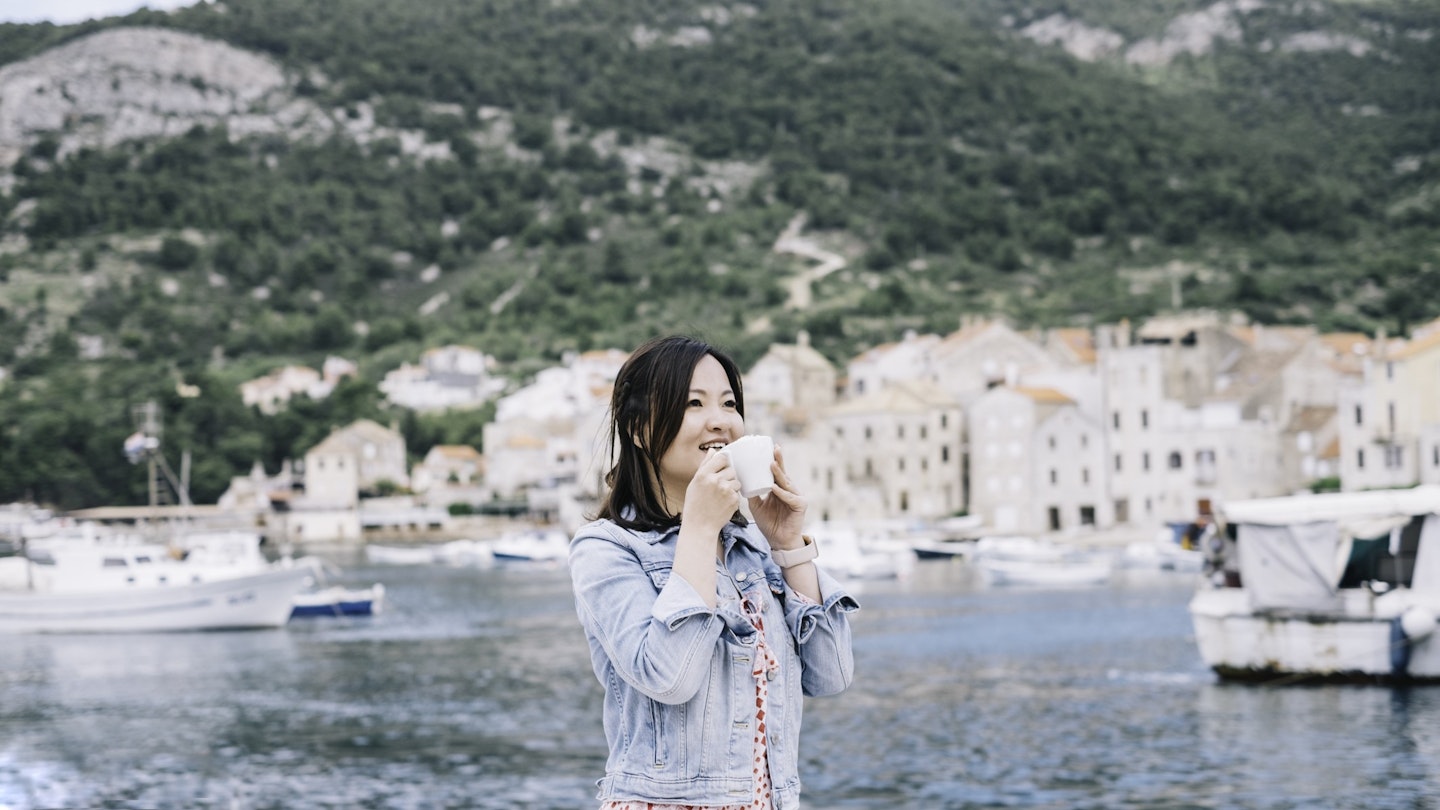
Plan the perfect Croatia trip with these top tips © TerryPrince / Getty Images
With its glittering coastline, 1244 islands, endlessly fascinating cities and extraordinarily dramatic landscapes, Croatia has been steadily making its way up people’s must-go lists.
Naturally, tourists are drawn to those beautiful Adriatic beaches that easily hold their own against their Mediterranean rivals. But inland Croatia is just as captivating, from the hilltop villages of Istria to the elegantly buzzing capital, Zagreb .
Don't book your flights just yet though – first, make the most of our planning tips covering everything you need to know about health, safety and etiquette before you go.
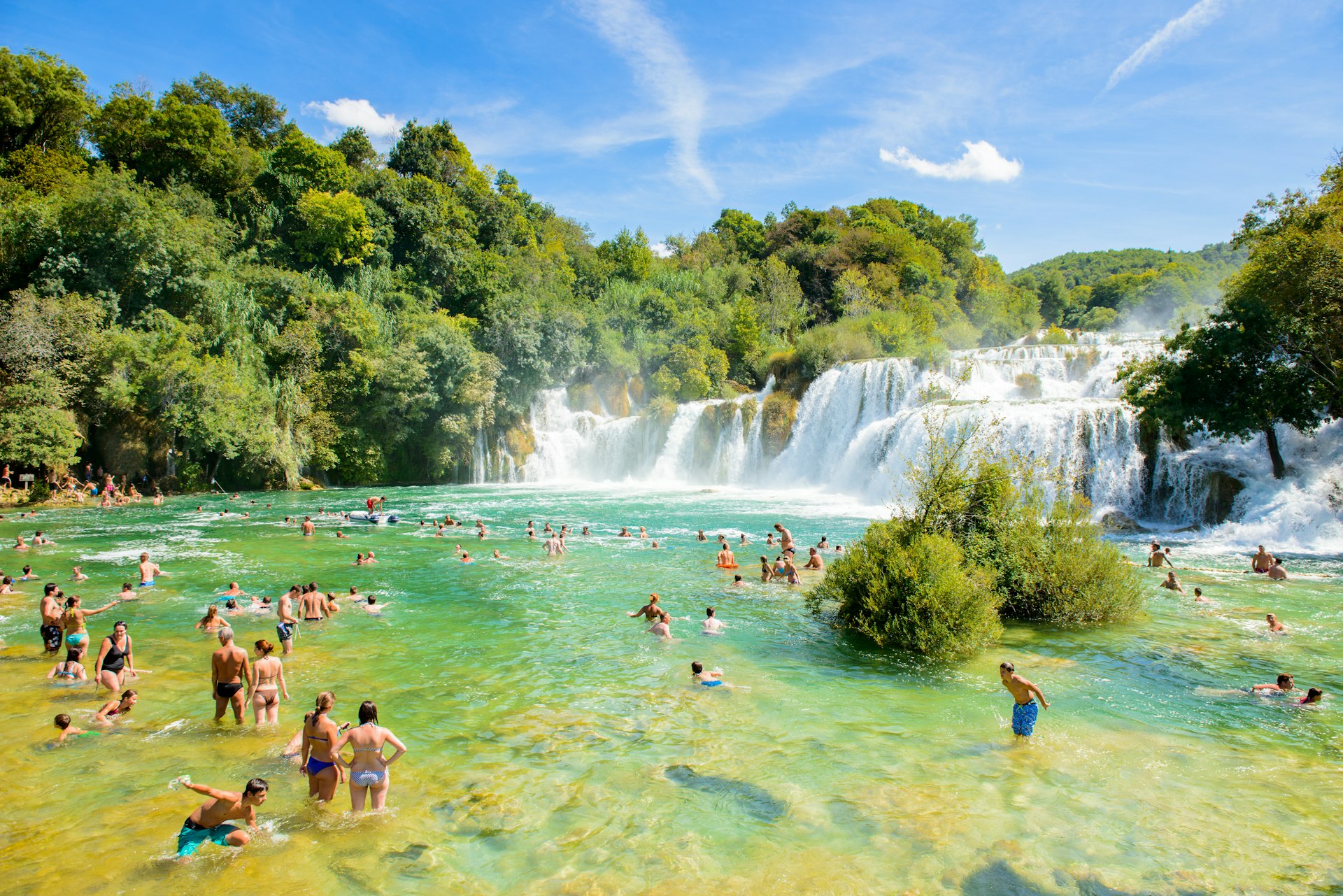
1. Don’t overstretch yourself when planning an itinerary
It might be tempting to squeeze in as many destinations as possible into one trip, but you won’t be doing yourself any favors unless you’re staying for at least two weeks. If you’re planning to visit more than one Adriatic island, think realistically about how much time you can spend in each place and how you will be getting around .
Check the schedule of the national ferry operator, Jadrolinija , if you intend to do some island-hopping. Croatia has an extensive bus network, but factor in some long journey times if you’re traveling along the Adriatic coast.
2. Croatia's currency is the euro
Although Croatia joined the EU in 2013, the euro was only introduced as the national currency on the January 1, 2023. The Croatian kuna is no longer in use, and if you happen to have any of the old currency, you'll need to go to the Croatian National Bank to exchange them.
3. Expect to tip at least 10% in restaurants
Croatia’s tipping culture is more laid-back than in other countries. Having said that, it’s customary to leave at least 10% in restaurants and for beauty and spa treatments. In bars and cafes, just round up the bill. Tour guides appreciate a few euros at the end of a tour, and taxi drivers don’t expect a tip, but, again, if you want to round up a fare to the next euro, it’s appreciated. If you’re filling up your car and notice a few students cleaning car windscreens, consider giving them a couple of euros as they’re working for tips only.

4. Croatia is generally considered a safe place to travel
Croatia is a safe country with low levels of violent crime. The most prevalent issue for tourists is pickpocketing, but even that’s on a much lower scale than in other European countries. Solo women travelers should be safe on their own, although it’s wise to ask your accommodation provider if there are any areas in the vicinity that are best avoided. When using taxis, all travelers should make certain they’re using a licensed car either from an official taxi rank or ordered from your hotel. Uber operates in most major towns and cities, including Zagreb, Dubrovnik and Split .
5. Some caution is recommended for LGBTIQ+ travelers
In this relatively conservative country, homosexuality is tolerated, but LGBTIQ+ travelers should be discreet. Public displays of affection could raise a few eyebrows, and some travelers have experienced hostile reactions. Zagreb’s gay scene is growing, however, and both Zagreb and Split hold Gay Pride festivals every June.
6. Bring some swimming shoes
Most of Croatia’s beaches are pebbly or rocky and can be hard to enjoy in bare feet. Just pick up a pair of those neoprene or plastic swimming shoes you see in all the resorts, and you’ll also be protecting your feet from sea urchins that lurk under rocks and pebbles.
7. Nudity at the beach is pretty standard
Naturist beaches are popular in Croatia, and sometimes you won’t know you’re on one until people start stripping off. Most are marked with FKK – the German phrase “Frei-Körper-Kultur,” meaning free body culture – which isn't surprising as Germans make up some of the biggest numbers of tourists in Croatia. Away from the FKK beaches, topless bathing is quite common.
8. Dodge the crowds in Dubrovnik by timing your visit carefully
There could be times when up to 8000 cruise ship passengers might descend on Dubrovnik in one day. That’s the cue to stay away from the Old Town within the city walls until they leave in the late afternoon. Keep an eye on the Dubrovnik Port Authority’s website for cruise arrivals and the online crowd monitoring system that predicts the numbers of visitors.
9. Wi-fi is readily available
Croatia is part of EU roaming, which is handy if you have a contract that allows you to use your data abroad. It’s easy to find wi-fi in cafes and bars – just ask the server for the password ( šifra ).
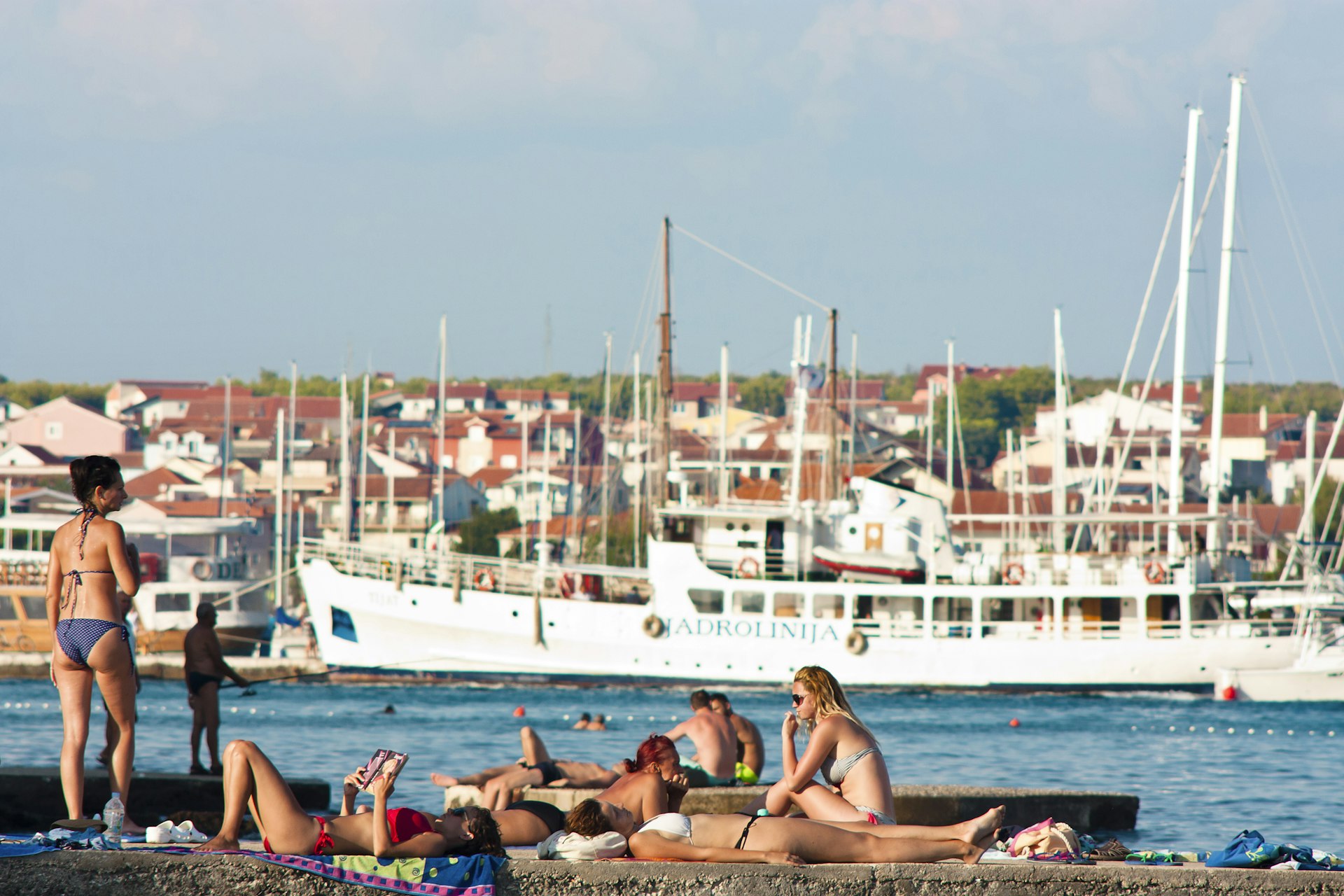
10. Swimwear is for the beach, not the town
If you’re visiting churches and other sacred sites, keep your shoulders covered and avoid bare thighs. If you’re wearing a hat, take it off when you’re in a church. Even though dress codes are relaxed on the coast, Split, Dubrovnik and Hvar have passed laws against walking around the city in swimwear or bare-chested. Croatians like to dress smartly and take great pride in their appearance, so do as they do and avoid looking scruffy.
11. Don’t get drunk in public
Croatia has developed a reputation as a place to party, which has led to some areas being inundated with badly behaved drunken tourists. After years of enduring this, the mayor of Hvar Town had enough. In 2017, the destination started to issue fines of up to €700 for public drunkenness and things like taking a drunken nap in a public place, such as on a park bench. Split introduced fines of up to €300 in 2023, placing signs in the city center reminding people that public drinking is not allowed, and that no one should be urinating on the walls of Diocletian's Palace .
12. Get to know the Croatian character
Croatians can be quite reserved people, sometimes appearing brusque. It’s nothing personal, which you'll realize when you get to know them better, and the initial reserve melts to reveal a warm and friendly side.
13. Be tactful when talking about Croatia’s war of independence
The 1990s war that splintered the former Yugoslavia is a topic that needs careful handling. If people show a willingness to talk about it, then by all means ask sensible questions. But don’t be intrusive, and bear in mind that Croatians won’t take too kindly to being called either Yugoslav or Balkan. Similarly, in this predominantly Catholic country, be mindful of making loud statements against religion.
14. You can drink the tap water
Tap water in Croatia is perfectly safe and very drinkable, and you can refill your reusable water bottles at public drinking fountains.

15. Keep your lights on if driving during winter months
If you’re driving in Croatia from November to April, it’s compulsory to have your lights on during daylight hours as well as at night.
16. Croatia has occasional earthquakes
Croatia has a history of earthquakes going back centuries, but two recent ones in 2020 caused significant damage. The quake that shook Zagreb damaged thousands of buildings, many of which are in the old town, including the cathedral. Soon after, the city of Petrinja, about an hour’s drive south of Zagreb, was severely damaged in a quake, and aftershocks rippled throughout the region. If an earthquake happens while you're there, follow local guidance.
17. There are still some landmines
There are still parts of the country in the hinterlands of Northern Dalmatia and Lika where landmines remain from the war of independence, but these will be signposted with a skull and crossbones symbol. Don’t go anywhere near them.
18. Take out travel insurance
Dial 112 for general emergencies, 192 for police, and 194 for an ambulance. If you fall ill in Croatia and you're an EU citizen with a European Health Insurance Card (EHIC) or a UK citizen with a Global Health Insurance Card, you’re entitled to a vastly reduced price for health care . But even with this cover, you should still take out travel insurance.
This article was first published May 17, 2022 and updated Mar 17, 2024.
Explore related stories

Local Voices
Jun 13, 2024 • 8 min read
How can you ever choose between two incredible destinations such as Italy and Croatia? Let our experts convince you which one is perfect for you.

Jun 12, 2024 • 12 min read

May 28, 2024 • 8 min read
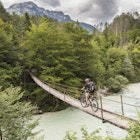
Apr 27, 2024 • 5 min read

Apr 19, 2024 • 10 min read
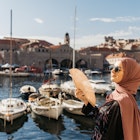
Mar 20, 2024 • 11 min read

Mar 15, 2024 • 10 min read
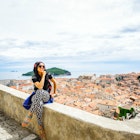
Mar 14, 2024 • 4 min read
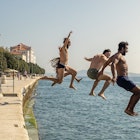
Mar 2, 2024 • 8 min read
Best time to visit Croatia
Now that you finally decided to visit Croatia, you must ask yourself when is the best time to visit Croatia? In this post, we will share information and our thoughts on the best time to go to Croatia based on weather, costs, crowds, and more.

Before I tell you the best time to visit Croatia, I am gonna tell you the worst time to visit. It’s easier to pinpoint bad times because they are fewer and because they apply to everybody traveling to Croatia.
The worst time to visit Croatia is wintertime , from November through February, and the peak travel time from the last week of July to mid-August. These two periods are the worst time to visit but for all the different reasons.
Winter because it’s cold and rainy, the majority of activities, restaurants, bars, and commerces are closed, and there is almost nobody to see around. On the other hand, in peak time, the days are too hot, there are too many people around, and while all businesses are open, the prices are sky-high.
All other times are good times for your Croatian trip. And when to visit Croatia depends a lot on your personal preferences and situation. If you travel with school-age children, you will perhaps only be able to come during the school holidays.
Table of Contents
When is the best time to visit Croatia?
Croatia seasons.
You’ll notice three distinctive seasons in Croatia. A low season in Croatia is from November through April. A shoulder-season includes a period from May to mid-June, and from mid-September through October, while a high season runs from mid-June to mid-September.
A majority of tourists visit Croatia during the high season. The peak travel time lasts three weeks including the last week of July and the two first weeks of August. This peak time is, along with the low season, the worst time to visit Croatia.
Low season – November through April

Visiting Croatia over the winter, from November to April? No worries, below we explain what you can expect regarding the weather, activities, prices, and more.
But, before we go in detail, let me tell you something (shhh!). I would never recommend you to visit Croatia from November to March.
In the low or winter season, Croatia goes very quiet. Many hotels, restaurants, and activities are closed for business. Beaches are completely empty and unattended. Coastal towns, bustled with people and life during the summer, go dead in winter. The daylight is also extremely short. In winter it already gets dark around 4.30 pm.
We live in a small coastal town , and believe us when we say, when we go for a walk after dinner (6 pm) we can count on the fingers of one hand the people we will eventually pass by.
Before moving here I have many misconceptions about Croatia, and the climate was just one of them. I imagined the climate in Croatia like in Costa Blanca or Cote d’Azur. Unfortunately, while similar in some ways, it’s not the same. Zagreb gets really cold, foggy, and humid. It can also snow. Istria gets lots of gray rainy days. Weather-wise, Dalmatia it’s the best area of Croatia to visit in the low season. However, Dalmatia can also get very cold, especially when the northeast wind bura blows. It brings bright sunny but cold days.
If this is the only time you have available, then you better make it the best time to travel to Croatia for you. And our tips below will help you to do so! Visiting Croatia in winter has its charm and advantages.
Tips for visiting Croatia in the low season?
Zagreb, Split, Rijeka, Pula, and Dubrovnik are good places in Croatia to base yourself during the wintertime. Although to be honest, only Zagreb is really buzzing in winter. The other four destinations are ok because they have enough attractions to explore; they are centrally located to make day trips; they have a good choice of hotels open in winter and enough restaurants where you can have a good lunch or diner.
Have a car! A car gives you so much flexibility to go where you want and when you want. Besides, the cost of car rental is so low in winter. This way you can do many day trips and visit many beautiful places in Croatia.
You will be able to capture some awesome photos since your photo shooting won’t be disrupted by other people walking by.
Benefit from the amazing discounts that hotels offer during the low season. You can stay in a 5star hotel for as little as 100€ a night for two persons with breakfast included. The same room will cost you at least 350€ in the high season. And you can even pay less if:
- you travel during the working week (Mon-Fri)
- you book your stay in advance, and
- and if you stay longer in one hotel (at this time of the year, a stay of 3 to 4-nights is considered a long stay)
If you prefer to stay in apartments, just contact the owners and negotiate the price down. The demand is very low in winter and you should normally be able to get yourself a great deal.
Take some downtime with spa and wellness promotions that hotels also run during the winter. That room rate mentioned above sometimes also includes a 30-minute neck and shoulder massage. Try to beat that!
Events in low season
There are a couple of events taking place in the low season that you might want to take note of.
Olive Oil Fair in Vodnjan , takes place in early November. It is a celebration and a showcase of the young olive oils of that year’s harvest. Harvest in Istria is really early, in late September or early October, so in November the young oil is ready to be consumed. You can sample oils from various local producers as well as other local and homemade products like fig cakes, prosciutto, honey, cheese, wines, grappa, and alike.
Advent in Zagreb is an annual event taking place in Zagreb from the end of November until the 7th of January. The entire town turns into a Christmas fairytale with tons of fun, concerts, workshops, exciting street food, mulled wine, craft beers, and Christmas markets.
Rijeka Carnival is the best and most popular carnival in Croatia. It takes place in February.
In February, you can also partake in St. Blaise Festivities taking place in Dubrovnik.
Final thoughts on visiting Croatia in winter
Winter is definitely not the best time of the year to visit Croatia. But, it is ok if you would like to experience Advent in Zagreb (it’s only at Christmas time!) 0r if you have no other choice, but to visit in winter. Hey, you might even get lucky, and if it snows, you can go skiing on Sljeme Mount near Zagreb, or Platak near Rijeka.
If you have no choice but to visit Croatia in winter, then December is the best month to visit Croatia. At least all towns have Christmas markets and something going on.
Also, before we forget, Plitvice Lakes are beautiful in winter. Yes, they are not completely accessible due to the high levels of water, but you will have peace and quiet. You won’t need to battle your way in this amazing park through groups of other people and their selfie sticks.
Winter can be the best time to travel to Croatia for foodies. Restaurants are at their best at this time of the year. Fish and seafood are in abundance. In early August, at the heart of high season in Croatia, many fish species in Adriatic can’t be fished. Shhh, we have never told you this!
Shoulder season – May to mid-June, mid-September through October
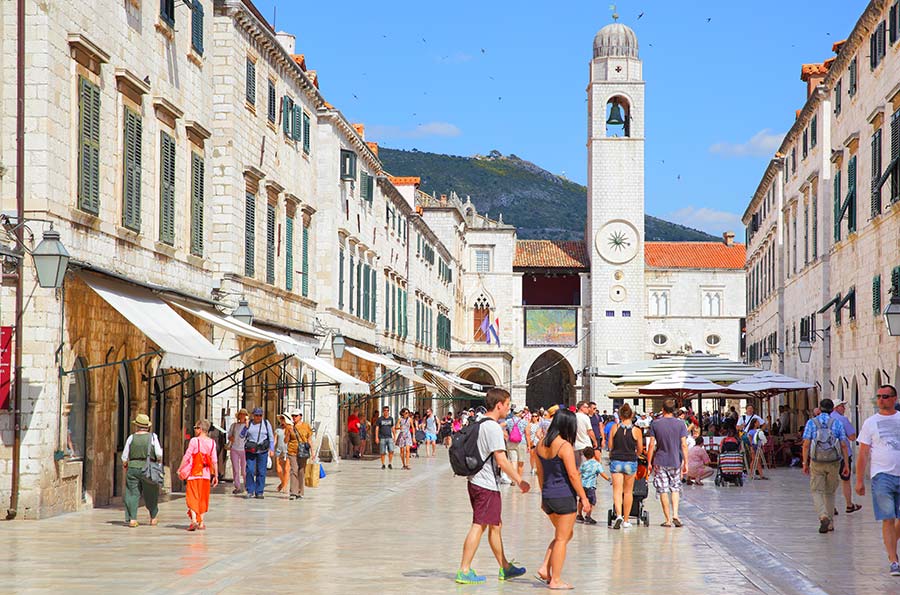
Shoulder season, from May to mid-June, and from mid-September through October, is the best time of year to go to Croatia. Especially if you do so in late September or early June.
All activities, restaurants, and hotels are already open and receiving guests. The weather is generally ok although it can be unpredictable at times especially through May and late October. You can expect the temperatures in low to mid 20C, with nights a bit chiller.
Beaches are attended, clean and neat, already receiving some swimmers, although not too many. You will have all space you need for yourself on the beach. The sea temperature still isn’t optimal for swimming. However, early June and late September can be ok. At least, it is for us. We always swim late into September.
Since it isn’t too hot nor too rainy, it’s a perfect time in Croatia for sightseeing.
The rates are more expensive than in winter, but they are still super-discounted if compared with summer. So you can still secure great holiday deals on accommodation in Croatia .
Shoulder season is the best time to visit Croatia for foodies. There are so many awesome food and wine events taking place throughout the country at this time of year.
Tips for visiting Croatia in the shoulder season
Whether you prefer small coastal villages for your base, changing destinations every day, or staying in big towns, all the itineraries will work fine. All businesses are open and running. You will already see a fair share of tourists all over the country.
Since the weather in May and late October can be unreliable and temperatures can suddenly drop, pack a wind jacket, long sleeves t-shirt, and long pants.
It’s great to have a car during your visit in the shoulder season. The weather is perfect for day trips. Driving is easy and the traffic on Croatian roads is still low at this time of the year.
Also, you can take advantage of coach tours if you are not comfortable driving.
We also recommend that you add at least one island to your shoulder season itinerary. At this time of the year, almost all ferry lines are operational, and the prices are still not as high as in the high season.
Germans are the number one visitors in Croatia. This is why many hotels adjust their rates to the German school holidays. Anyways, Germans have main school holidays between the Whitsunday and Corpus Christi weekend. They are sometimes in May and sometimes in June, depending on the time of Easter. If these holidays are in May, then hotels will run special deals for stays in June. If these holidays are in June, then you can expect to secure a good discount in May. If you are flexible, it’s good to shop around.
The same is true for the 1st of May. Hotels always get full on the weekend or a week around the 1st of May. So if you are trying to save, avoid traveling on the 1st of May.
Hotel rates also drop significantly in mid-September . You can find a nice seafront apartment for as little as 40 € a day in mid-September and October.
Events in the shoulder season
Another great reason to visit Croatia in the shoulder season is an abundance of all kinds of food events and festivals. Below we list just some of them to give you an idea of what to expect.
Zagreb Beer Fest takes place at the end of May in the center of town, in the park, at the Trg Franje Tudmana Square. Lots of live concerts, good music throughout, a great choice of Croatian beer , free admission, and a nice vibe make Zagreb Beer Fest one of the most sought-after beer events in the country.
The last Sunday in May in Istria is reserved for Open Cellars Day . Participating wineries open their cellars for free wine tasting.
If you are visiting Croatia in the fall you will like to know that white truffles , the most precious and most expensive fragrant fungi are in season from late September to January. If you like this rare delicacy, head to Istria during your time in Croatia.
Good Food Festival in Dubrovnik takes place at the end of October. You can taste traditional Croatian food , participate in a culinary tour, or learn to prepare some of Dubrovnik’s delicacies. The highlight of the festival is continuous food stands that spread the entire length of Stradun, Dubrovnik’s main pedestrian street in the old town.
Final thoughts on visiting Croatia in late spring and early fall
The shoulder season is the best time to go to Croatia. If you are flexible with your travel dates, then try to visit Croatia in the second half of September, or early June.
You can visit all landmarks, even the most popular destinations, without running into too many people. Sure, in Dubrovnik or Split, even in the shoulder season, you will still see lots of cruise ship passengers. However, there will be fewer other visitors, making the overall number of tourists much more acceptable.
Also, the weather plays a big part in making the shoulder season the best time of year to visit Croatia. When it is very hot like it gets in July and August, then it is as uncomfortable to do sightseeing as it is when it’s raining or snowing. But in the shoulder season, temperatures are just perfect for sightseeing and exploring Croatia.
If you decide to go to the beach you won’t need to fight for your space at the beach. Or, God forbid, wake up at 5 am to secure your beach spot with a towel. No, this you will do in summer (just kidding! NOT).
High season: mid-June to mid-September

A majority of tourists visit Croatia during the high season. The high season lasts from mid-June to mid-September. And the peak travel time is from the last week of July until mid-August. The high season is one of the best times to visit Croatia, as long as you avoid these three peak weeks.
At this time, Croatia is in full swing. All activities, restaurants, hotels, and day tours are running.
It is the best time to go to Croatia for the beaches. The weather is hot and sunny. You can expect temperatures in high 20C to mid 30C. The sea is warm and perfect for swimming. The sea temperatures are around 24C.
The high season is also a great time for Croatia if you look for partying, clubbing, and music festivals. There are many festivals taking place all along the Adriatic coast and Zagreb at this time of year.
So, in short, the high season is the best time to travel to Croatia if you are interested in beaches, partying, and hot weather.
But, the high season also has its downsides.
Prices are sky high! Expect to pay at least 90€ per day for two-person accommodation. And this is on a budget end. If you stay in a 4star hotel, you’ll pay around 220 € for a double room with breakfast, and that same room in a 5star hotel will set you back at least 350 € a night.
There are people everywhere and queuing is a common sight. Even more so in top destinations like Dubrovnik , Split , Hvar Town, Rovinj , Porec , etc… And on a rainy day, when everybody goes sightseeing instead of lounging at the beach, the traffic congestions are unbearable.
Access to the main attractions gets completely blocked. And to find parking is a real adventure.
We live in a small village 3 km away from Porec. But can you believe that in July and August we don’t even go to the town? Because there are so many people and cars everywhere that we don’t even want to bother going there. It is that bad!
The most popular beaches in Croatia, you know those that you saw on all promotional material for Croatia, are jam-packed. People wake up at 5 am and then go to the beach to put their towels. These people are the worst! (If you are one of them, please stop doing it!). In some beach towns, the municipality even started removing and confiscating those towels.
Tips for visiting Croatia in the high season
If you are planning to visit Croatia in the high season, we recommend that you try to avoid the peak three weeks of the high season: the last week of July and the two first weeks of August.
If you come in late June to mid-July or late August to mid-September , you might get the best of both seasons, shoulder, and high season. There are still lots of tourists around, but less than in the peak period. The weather is still hot, but a little bit less burning hot than in peak times. And the sea is warm and perfect for swimming.
In Croatia, July and August are extremely hot . Make sunscreen, a hat, and a bottle of water your permanent daypack items.
If you plan to swim in Croatia, pack water shoes. You’ll walk easier on Croatian pebbly and rocky beaches.
You know those popular beaches you’ve seen all over Instagram. Yeah, forget them in high season. Instead, ask locals for their favorite beach (not the most beautiful beach, everybody, and their mother is already there!). This way you might end at less crowded beaches and enjoy your time there much more.
Or, rent a boat and make your way to some of the small islands and islets within easy reach from your destination. In Croatia, islets are a common sight.
Beat the crowds and the heat by waking up early . Try to do all your sightseeing as early in the morning as possible. This usually means until 9 am for must-do sights, and before 10.00 am for other sights.
Events in the high season
The high season is full of events and festivals. We have a separate post on the Best festivals in Croatia if you want to read that. Here we shortlist just some of them to give you an idea.
INmusic Festival is Croatia’s largest open-air festival. It takes place in Zagreb, at Lake Jarun, in late June already for 15 years. Previous lineups included Massive Attack, Florence + The Machine, Jamiroquai, Franz Ferdinand, and many more. Since 2107, NME lists InMusic as one of the world’s best festivals.
Fresh Island Festival takes place yearly for a week in the first half of July, on Pag, Croatia’s popular party island. The exact location of this hip-hop festival is Novalja Beach, and Rock’s Beach Club, Papaya, Aquarius, and Kalypso clubs. The previous lineups included Snoop Dogg, Iggy Azalea, Wiz Khalifa, French Montana, Chris Brown, and many more.
Outlook Origins takes place at the end of July, beginning of August. Relocated for 2021 from Fort Monte Christo and Pula Arena to Garden Tisno and St Michael’s Fortress in Sibenik, the Outlook festival brings the best dubstep, reggae, jungle, and drum & bass lineup. The festival’s renowned opening festival included names like Bonobo, Jurassic 5, The Gentleman’s Dub Club, Grandmaster Flash, etc…
Ultra Europe takes place in Split at the beginning of July. It is the biggest and the most visited summer music festival in Croatia. Stadium Park Mladezi plays the main stage for three days, but there are many pre-and after-parties on popular Croatian islands. The previous lineups included Armin van Buuren, DJ Snake, Tiësto, Carl Cox, Dubfire, Afrojack, and many more.
There are many more festivals in Croatia taking place during the high season, like Hideout , Love International , SunceBeat , Dimensions , etc…
We hope this post help you get a better idea about the best times to visit Croatia! If you have any questions, leave them in the comments section below.
Frankaboutcroatia.com is a participant in the Amazon Services LLC Associates Program, an affiliate advertising program designed to provide a means for sites to earn advertising fees by advertising and linking to Amazon.com and affiliated sites. This post might also contain affiliate links to other sites, like accommodation or activities. And if you purchase anything using these links, we earn a little commission with no extra costs for you. Thank you for supporting our blog! Read full disclaimer here.
Home / Croatia Travel Tips / Best time to visit Croatia
1 thought on “Best time to visit Croatia”
I would definetly recommend going in September to get the real experience. This summer was particular so it felt like autumn already in late August. But there is something special and calming about September sun that is hard do explain.
Leave a Comment

When to Visit Croatia: Your 12-Month Guide to Paradise
Total Croatia News
Updated on: May 31, 2023
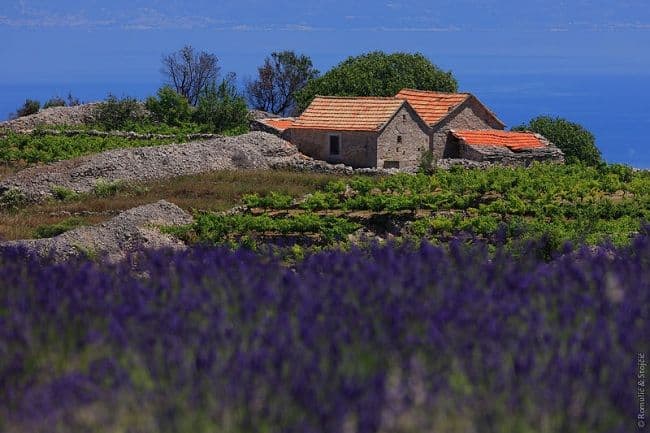
When to visit Croatia? Croatia is Full of Life, 12 months a year. Find out which month is for you, depending on your personality.
Visit Croatia in April: Easter Traditions and the Start of the Season
Let the swimming season begin may in croatia, june in croatia: summer without the crowds, visit croatia in july: peak season beach heaven, festivals, beaches, and parties: croatia in august, for gorgeous weather and emptier beaches, visit croatia in september, an indian summer in europe: croatia in october, olive and wine heaven: visit croatia in november, advent in zagreb and elsewhere: december in croatia, a tourism giant in its quietest month: croatia in january, the best time to visit the pearl of the adriatic: dubrovnik in february, emerging from winter hibernation: march in croatia.
Although the calendar year starts in January, for me at least, the Croatian tourism year begins in April.
For this is the month when the country is finally alive again after the long winter. And it is also invariably the month which hosts one of the greatest celebrations in Croatia – Easter.
Being a staunchly Roman Catholic country, Easter is an extremely important time of year for locals. It is a time of joy when extended families come back home for the long weekend, reconnecting with their families and communities.
It is also a time of immense tradition, and nowhere more so than on the island of Hvar. There are religious processions all over the country, but the ‘Za Krizen’ (Behind the Cross) procession on Maundy Thursday in 6 villages and towns on Hvar is like no other.
Now performed every year for more than 500 years and inscribed as UNESCO intangible heritage since 2009, Za Krizen is 6 simultaneous processions through the night over 22km, following a barefoot cross bearer walking to the other villages before arriving back where he started at 07:00 on Good Friday. Check out the official UNESCO video below for more.
Easter apart, April is the month when many of the major airlines servicing the country get going with their seasonal schedules. This makes it a great time to take advantage of some excellent shoulder-season flight prices, and cities such as Split, Dubrovnik, Zadar and Pula make for ideal and affordable city breaks.
May in Croatia is simply one of the greatest times to be alive. It begins with the traditional May Bank Holiday, and all the coastal hotels are packed. It is the first taster of what is to come with the imminent tourist season.
Look a little deeper, and you may find some rather enjoyable festivals to entice you. One big discovery for me in 2018 – and without doubt one of the highlights of the year – was Korculanske Pjatance, the Korcula Spring Food and Wine Festival .
Many of the top restaurants on the island come together to promote the authentic and indigenous food and wine through a series of themed dinners, workshops and presentations. The setting is idyllic and, if the weather is anything like this year, the perfect time to open the swimming season.
The beaches in May are almost deserted, but the water is warm enough to swim and the temperatures usually decent enough for a day at the beach. Enjoy the peace and quiet before the hordes arrive.
While May is the month when tourists start to arrive in serious numbers, June is the time when everything is fully open. School has not yet finished, and so the surge of family holidays is yet to take hold.
Temperatures are very pleasant, in their mid-20C, and for many, it is the best month to visit. Everything is open, there is a full entertainment programme, the beaches are not too crowded, and the temperatures are ideal.
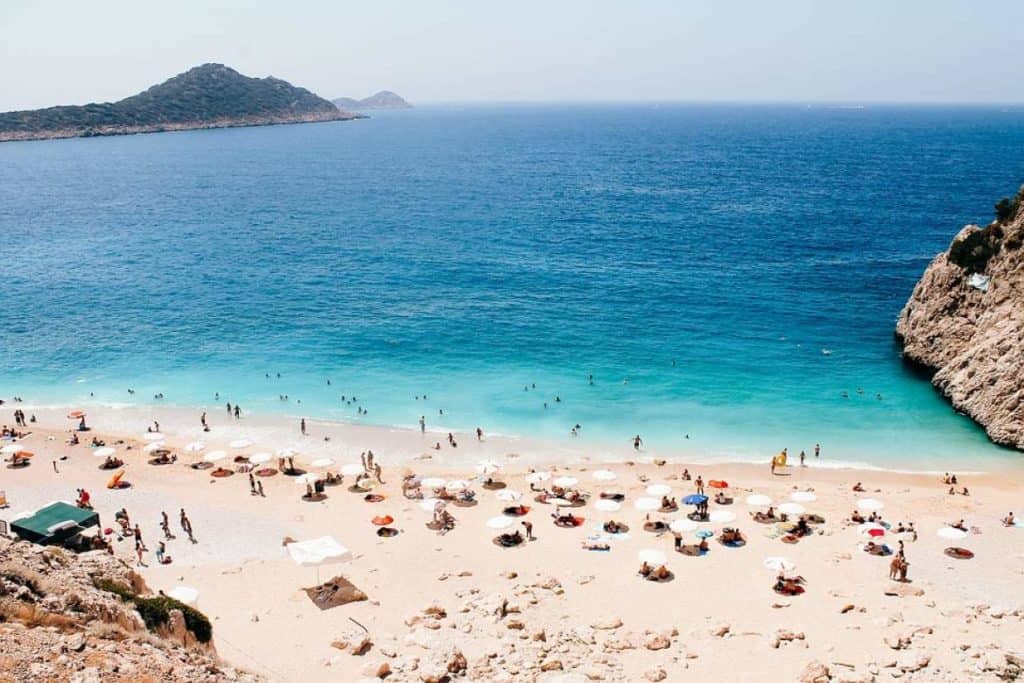
And then school finishes! And suddenly Croatia is full. The motorways, the beaches, the restaurants, the hotels and the private apartments. Every local is seemingly doing five jobs at the same time, for this is the time when the year’s money is made.
If you are looking to experience Croatia at its most vibrant, then July 15 – August 15 is the time for you. There is a festival seemingly every day, even in the smallest of tourist settlements. The weather is hot, and the azure blue skies of the Adriatic are a constant for the sun-worshippers on the beaches of the Adriatic and islands.
If you are looking to avoid the crowds and still enjoy the very best of Croatian beaches, there are places to go. But it might make more sense to visit Croatia in June or September if at all possible.
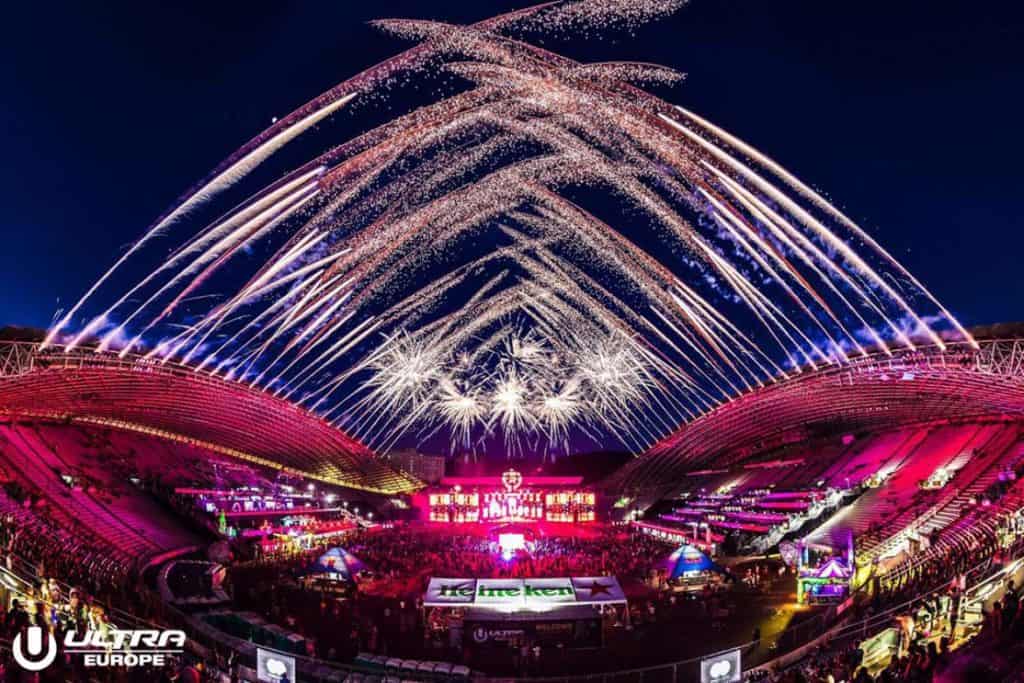
For August, eat, sleep and repeat July. Music lovers will adore the Croatian coast in these peak summer months, as more and more festivals are popping up. The Guardian recently named Croatia as the new festival capital of Europe, and it is not hard to see why. It remains to be seen how things will develop regarding festivals in 2021, due to the pandemic.
All day at the beach, all night at the party – a winning combination for the increasing number of young tourists who are discovering the magic of Croatia. But there is also plenty of cultural activity for the older generation, or for those looking for something other than partying. And not just on the coast. One of the most interesting cultural festivals in Croatia takes place in August, far from the Adriatic. Spancirfest in Varazdin is the largest street festival in Europe, with more than 400 events in the gorgeous Baroque old town in 10 days. Looking for a flavour of what to expect? This was my first visit a few years ago .
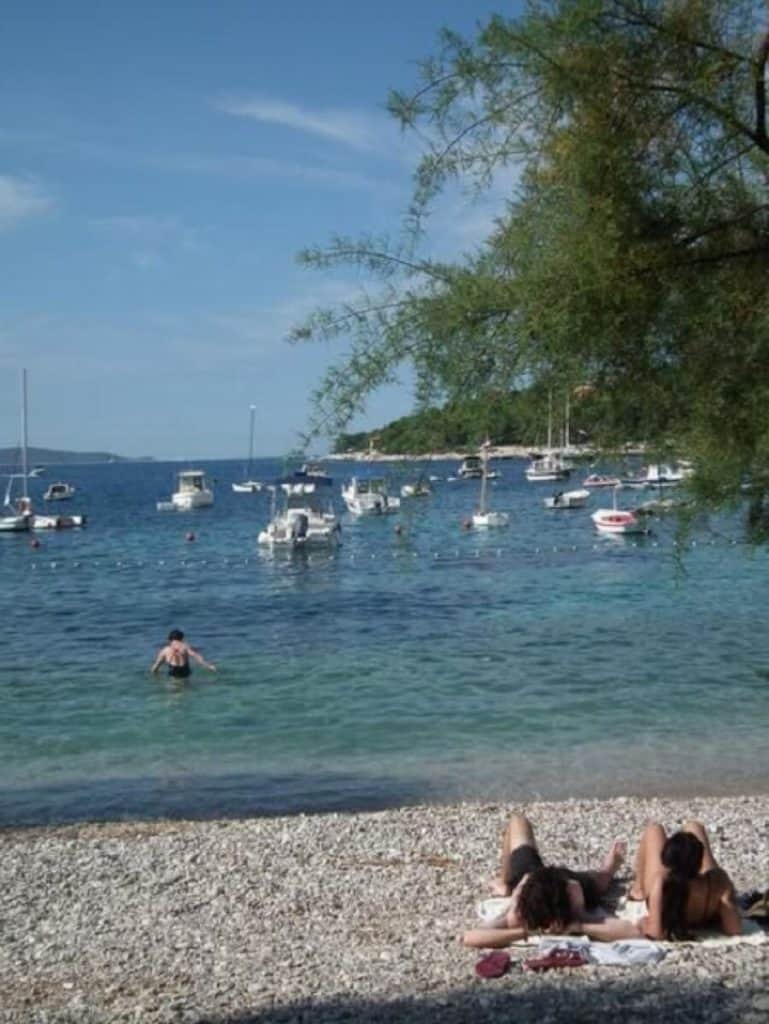
And as quickly as the masses came, the quicker they disappear. Peak season madness ends abruptly at the end of August, as kids return to school, their parents to their jobs.
The temperatures come down to something altogether more pleasurable, and there is a lot more space along the coast and inland.
Although the beach and swimming is still a premier activity in September, there is a subtle change in the tourist makeup. Scooter renters make way for cyclists, as the adventure tourists arriving in greater numbers. It is a perfect combination of temperate climate and fewer tourists.
It is also the month of the grape harvest. Croatia has a fantastic wine story ( check out the Total Croatia introduction ), with more than 130 indigenous grape varieties, including the original Zinfandel. The summer’s waiters become the autumn grape pickers? Why not go and lend a hand and discover another aspect of this lovely country?
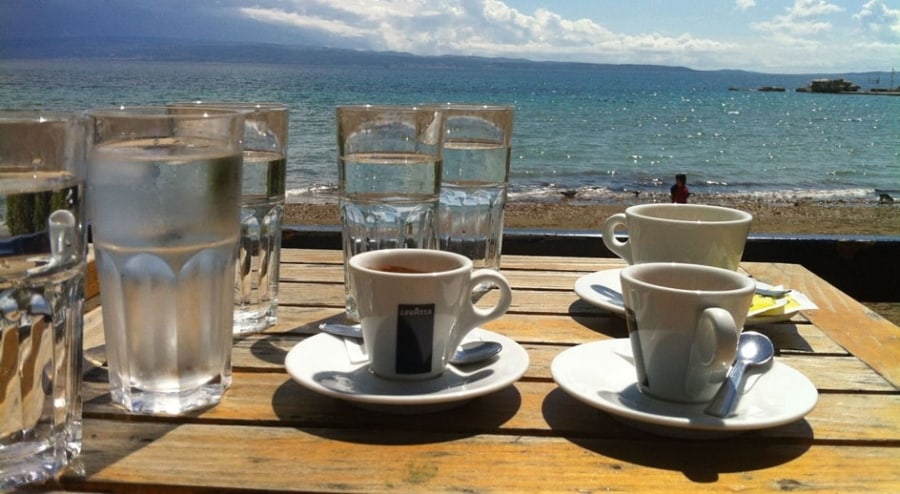
As northern Europe already turns its thoughts to the long winter ahead, Croatia coast is usually enjoying an Indian summer. There has been a noticeable increase in late season flights from Scandinavia in recent years. Croatia is a much closer sun alternative to Thailand and the Far East.
It is also the month when locals can finally relax after yet another busy season. Personally, I find October a great time to visit, as locals have one commodity which is missing in the season.
Time. Time to share a glass of rakija with you and to explain a little more about the heritage and history. More time to show you how a dish is made. A little time to show you true Croatian hospitality without any stress.
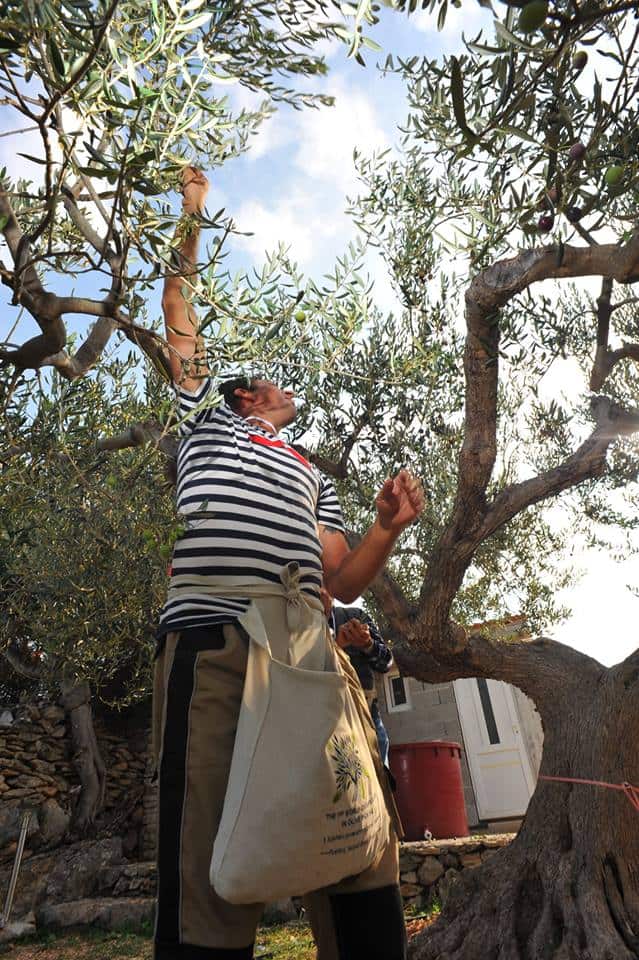
November is the month of the olive. I am perhaps blinded by my connection to the family field, but this is now one of my favourite activities in Croatia. Successful business executives in Zagreb abandon their busy lives for the call of the field.
I will confess that picking olives is a joy that came to me late in life. But for a way to meet Croatians in their natural habitat, there is little to beat it. Families come together nad pick the way their ancestors die. And the result? Liquid gold, for Croatian olive oil is among the best in the world.
There are two dates in November to be aware of in the Croatian calendar. Both are very sombre and both are observed religiously.
All Souls Day on November 1 is the day when ancestors and the family deceased are remembered. People return to their home towns to remember their departed loved ones, and Croatia’s cemeteries are awash with flowers and candles. It is a spectacular sight, especially in places such as Miragoj in Zagreb.
A more recent commemoration date is November 18, the date that the Hero City of Vukovar fell in 1991. After a brutal siege, Vukovar’s defenders were overrun. Candles are lit all over the country. Most towns have a Vukovar Street, and these become temporary shrines of remembrance.
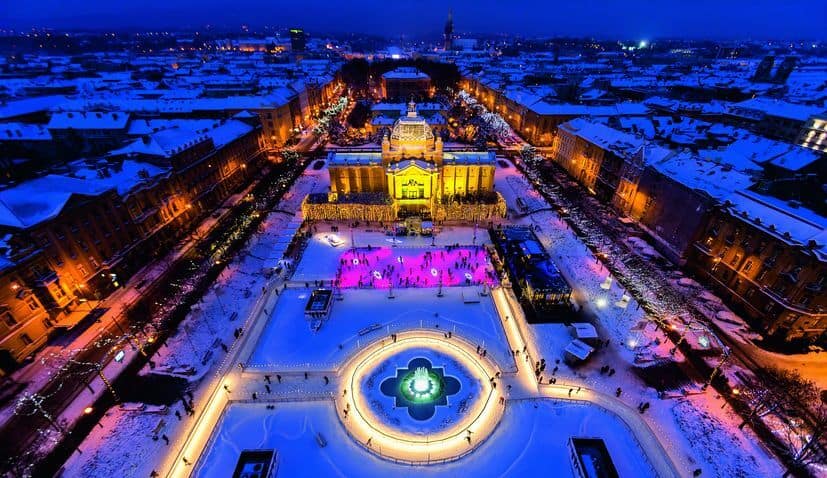
December used to be a quiet time to visit Croatia. No longer!
The astonishing success of Advent in Zagreb has transformed tourism in what was once a very quiet month. Named Europe’s Best Christmas Market three years in a row, Zagreb now has a December tourism product to rival any city in Europe.
And not only that, but Zagreb’s success has trickled down to the rest of the country. Here is an overview of Advent in Croatia 2018 from the Croatian National Tourist Board.
For more information on the main event, Advent in Zagreb .
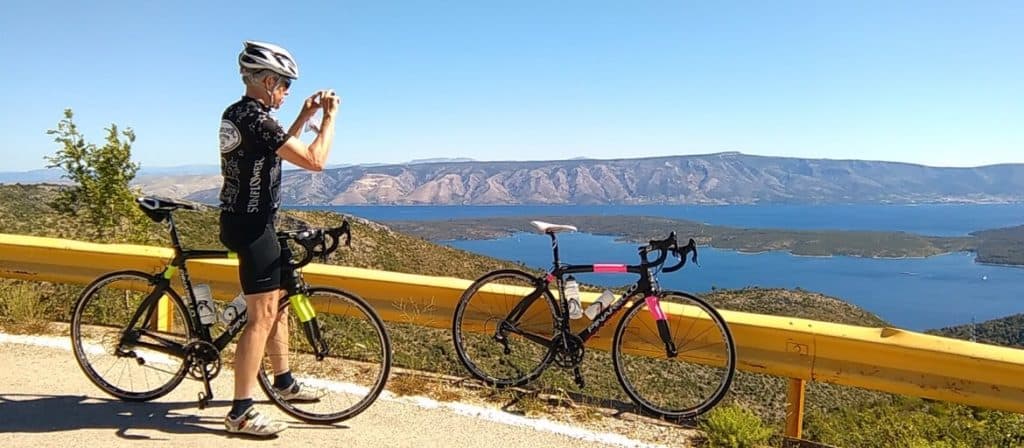
As elsewhere in Europe, January starts with a bang in Croatia. New Year celebrations are spectacular, and everyone gets into the mood. There are major events and concerts in all the major cities.
The seasonal holiday continues to include the public holiday on January 6. After this, it is time to return to work and see what the new year brings. As such, January after the New Year celebrations is not the liveliest time to visit Croatia. But if that suits you, many cultural attractions are available year round. You will have them more or less to yourself at the beginning of the year.
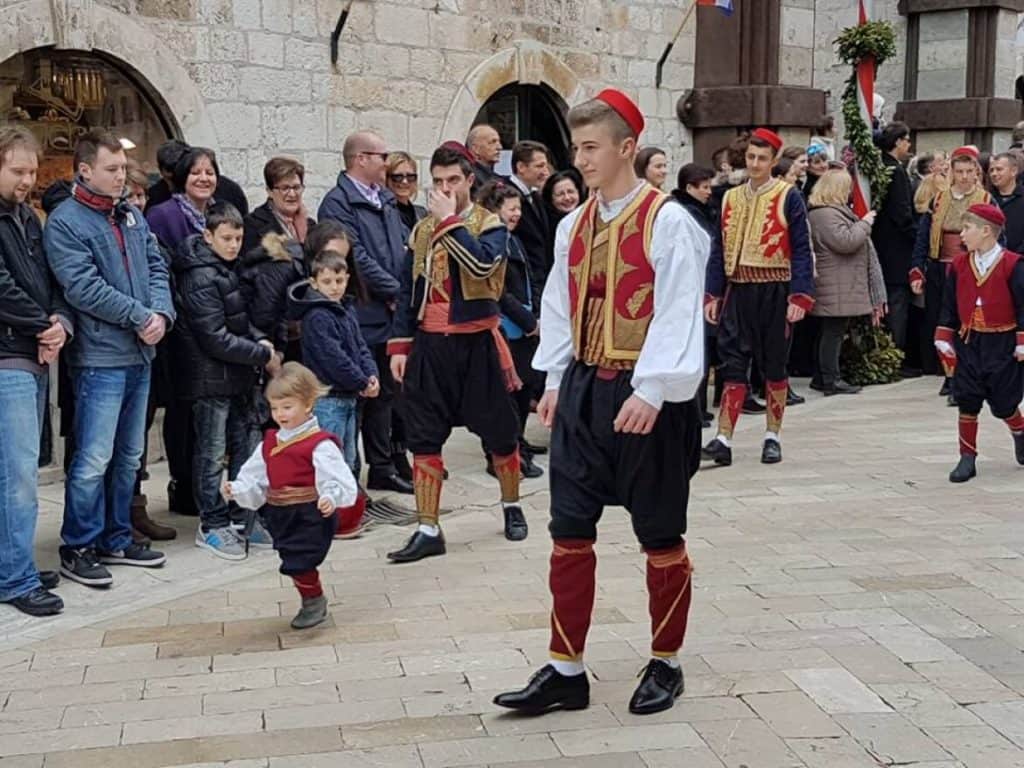
Living on Hvar for 13 years, I had the feeling that winter went on forever in Croatia, and that nothing ever happened.
And then I went to Dubrovnik in the first week of February a few years ago. I was stunned.
Dubrovnik truly is one of the great cities of the world, but its popularity makes it increasingly hard to enjoy. Come in the winter and little is open, but come in the summer, and it is too crowded.
My advice? Come in the first week of February to celebrate the Feast of St. Blaise. The beloved patron saint of Dubrovnik is revered by its citizens, who put on quite a show of affection. Processions, traditions, concerts, fabulous food, and unbridled joy. The Feast of St. Blaise is the time of year when locals reclaim their city from the tourists, and I heartily recommend a visit at this time. How is the experience? Well, something like this .
March is an interesting time to visit Croatia, for the country is waking up from its annual winter sleep. This is particularly true on the coast, where many resorts close down for the summer.
If Easter falls earlier, March will be a little livelier. Don’t be put off by coming in March, however. You are much more likely to have an authentic experience with locals, who are fully recovered from the previous tourist season.
It is also a great month for adventure tourism, city breaks and general exploring. The temperatures are agreeable in the coastal areas, the crowds are non-existent, and the first seasonal flights are in operation.
Visit Croatia 12 months a year. There is plenty to see and do, whatever the month, and Croatia is one of the most diverse destinations in Europe. All that remains is for you to decide which Croatia is the one for you.
Subscribe to our newsletter
Related posts:.

Leave a Comment Cancel reply
Save my name, email, and website in this browser for the next time I comment.
most Popular
Most recent.

News , Sport
Pulapromet: free public transport when croatia plays.
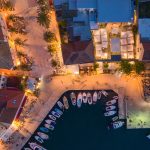
Sailing , Travel
45 degrees sailing’s stunning sailing in croatia video.

EURO 2024: Spain Shocks Croatia 3-0 to Open Group B

Blog , Lifestyle
Exploring five of the highest croatian peaks.
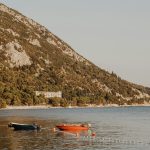
Business , News
Dalmatie group presents 20 million euro gradac hotel renovation.

Major Croatian Investment Hurdle Being Scrapped
© 2024 Total Croatia NEWS
Subscribe to our Newsletter
the fields marked with * are required

Best Time to Visit Croatia: For Weather, Island Hopping, Sightseeing & More
By: Author Taylor Lorenz
Posted on Last updated: 03/27/2023
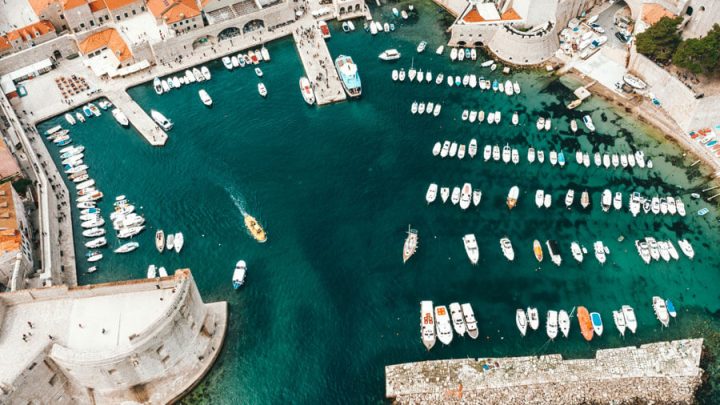
Croatia has been a hotspot on the map of popular European tourist destinations for many years now, and it’s a truly wonderful place to visit for its stunning blue waters, island hopping, and old towns that were a backdrop for films, TV, and tourist pictures alike.
The time of year that you take your Croatia vacation will depend on all kinds of different things, and it can be tricky to choose a month or a season sometimes, especially when you’re going somewhere that has areas that lovely all year round.
To help you out, we’ve written this guide outlining the best time of year to go to Croatia based on factors that can affect your trip.
Table of Contents
Best Time of Year to Visit Croatia
Whenever you choose to go to Croatia depends on your personal preferences, but there are some things that you may wish to consider. Weather, expenses, and crowds can all have an impact on your trip.
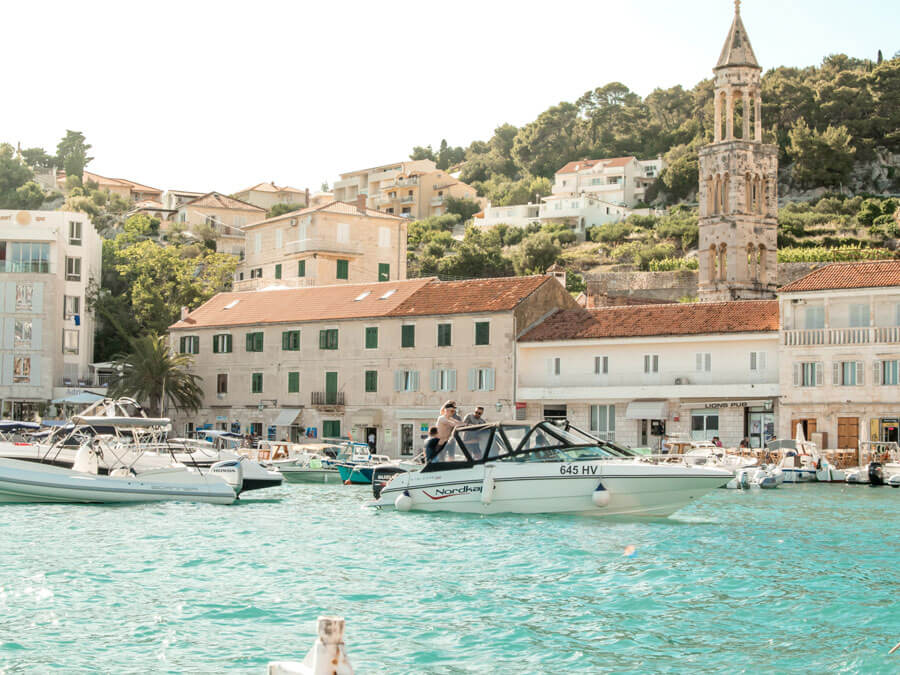
For Weather
Croatia is a country in the Balkans and its weather is mild.
Like most places in the northern hemisphere, Croatia is generally warm and dry in the summer and cool in the winter, but the climate differs from place to place throughout the country.
The closer you are to the Adriatic Sea, the warmer you’ll be. For example, some of Croatia’s most popular cities such as Dubrovnik, Split, and Zadar , are on the coast, so you can expect a typical Mediterranean climate there. While in the capital, Zagreb, which in inland you can expect snow in the winter but hot summers.
The coldest months of the year are January and February, which have temperatures with highs of 10°С and lows of 2°С. On average, December is the rainiest month, with 80mm of rain and 13 rainy days.
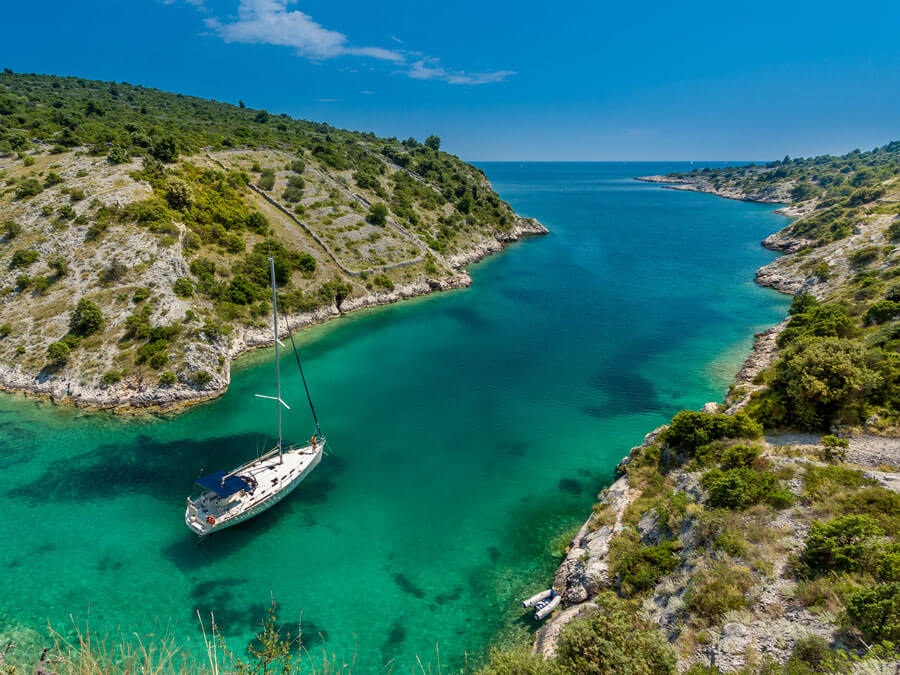
For Budget Conscious Travellers
Those who have a tight budget will benefit from going to Croatia outside of the high season. The high season is June, July, and August, when North American and European schools break for the summer.
If you travel during the shoulder seasons (the months before and after the high season) in May and September, you’ll be able to benefit from cheaper flights and accommodation, as well as having the possibility that prices will be lower at attractions and eateries.
Prices can really shoot up in December over the Christmas period, as this is when people travel to see their family or take Christmas vacations, so avoiding these times can help you save some pennies.
So, the best time to travel to Croatia on a budget is either during the months of May or September, or anywhere outside of June, July, August, and December.
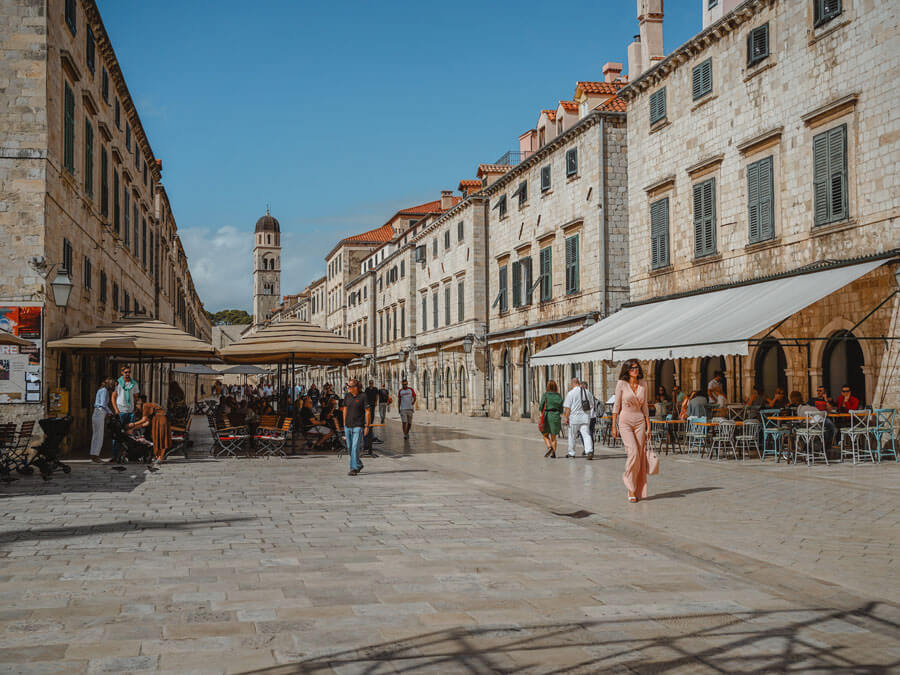
To Avoid Crowds
The best months enjoy all that Croatia has to offer while still avoiding crowds are likely to be May and September. These are the shoulder seasons and they offer you the best of both worlds. You’ll still get to enjoy the weather and events that are available, but there will be fewer people around and prices are often cheaper!
Croatia has some great festivals, many of which are held in the months of July and August, so be aware that there can be even larger crowds than typical summer tourists.
The school holidays, which are usually from mid-July to early September, over the Christmas and Easter periods, in October, and in February, can be incredibly busy times to travel to Croatia, too.
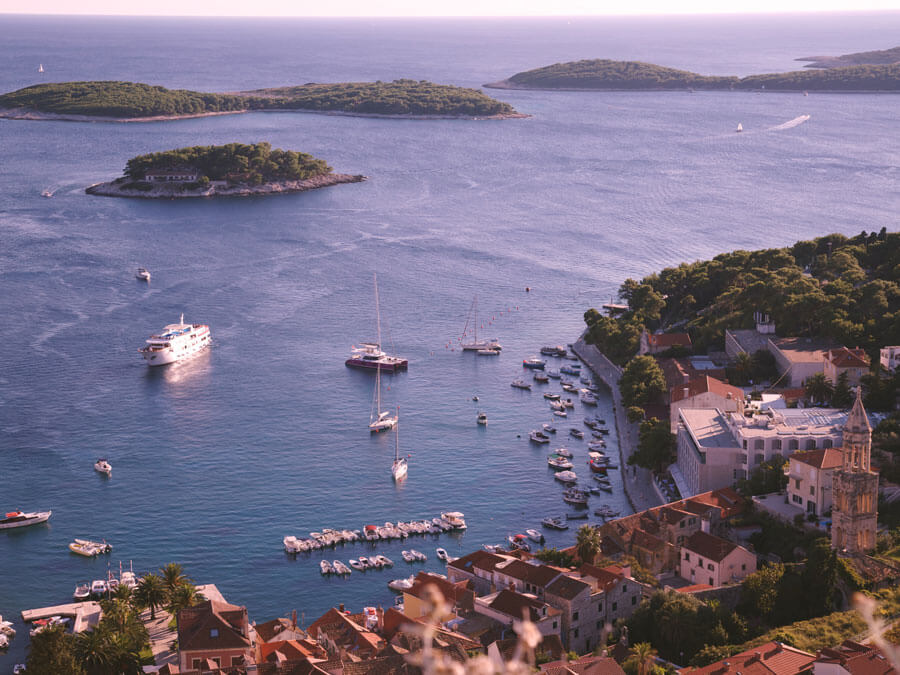
For Island Hopping
Croatia is popular for its island-hopping holidays, which is hardly surprising considering the islands and the surrounding waters are so beautiful.
While it may be a touch on the busy side, the best time to travel to Croatia to go island hopping is the summertime, such as July and August. This is because the weather is warmer, the sea is warmer, and the ferries are more active.
The ferries that can take you from island to island will often have reduced schedules out of peak times, so it can be much easier to island-hop during the summer.
If you really want to avoid the crowds, try going in June or September instead. However, some accommodations, restaurants, clubs, and bars close in the autumn (typically mid-end of September), so we don’t recommend island hopping during the autumn or winter months.
READ MORE: 11 Best Islands in Croatia for a Scenic Visit
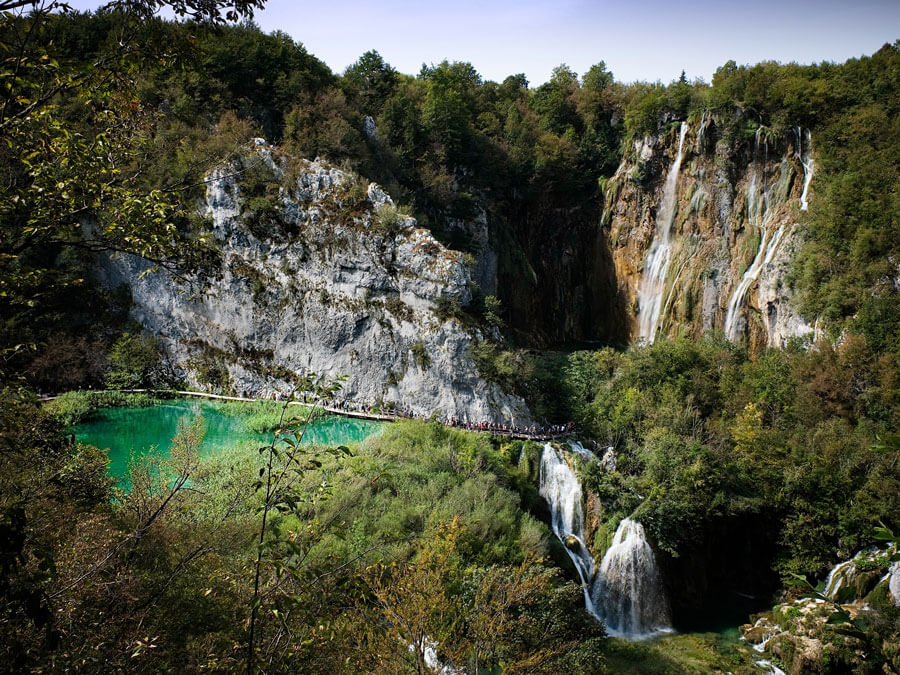
For Sightseeing
There are a great many much-loved beaches in Croatia, such as the most famous beach in all of Croatia, Zlatni Rat Beach in Bol, and Banje in Dubrovnik.
The beaches can get super busy during the peak beach seasons (May-September), but that’s not necessarily a bad thing! If you want to avoid the hustle and bustle, you’ll still get warm weather and sea temperatures at the beaches in April and October too.
The Adriatic Sea is generally warm, apart from during the winter, so swimming when you go to the beach should be on the cards, especially if you go during the warmer summer months.
Croatia is known for its stunning national parks, and spring is a great time to visit them because of the foliage and wildlife that comes to life during that season. If you like hiking, visiting the national parks in spring or early autumn can be perfect because the weather is nice, but it won’t be too hot.
There are a number of popular destinations for tourists in Croatia, including Split and Dubrovnik. Split is Croatia’s second-largest city and is on the Dalmation coast. The best time to visit Split for activities and events is the peak season, but you can actually enjoy what this city has to offer all year round. One of Split’s most popular events is the Split summer festival, which is held in July, and has been running since 1954!
Dubrovnik is perhaps the most famous destination in Croatia, popular with tourists, it’s listed as a UNESCO world heritage site. It has around 2,900 hours of sunshine every year, making Dubrovnik a wonderful place to go if you like to catch rays. With that in mind, we think that the best time to visit Dubrovnik is in the spring and summer months, from April to August, as you’ll see some of the best of nature, as well as experiencing awesome weather.
Croatia is also known for its music festivals, including Hideout Festival (June), Suncebeat Festival (July), and Defected Croatia (August). These music festivals are loved by both visitors and locals and bring music lovers to the country from far and wide.
There isn’t really a bad time to go to Zagreb, the main city to go to that’s inland, but there are some key events that tourists like to attend, such as Dance Week Festival, We Love Sound music festival, and Zagreb Pride, all of which are held in June.
Croatia Travel Insurance
Best Season to Visit Croatia
Croatia isn’t a place of extreme weather, but you can expect four distinct seasons, with hot summers and much cooler winters.
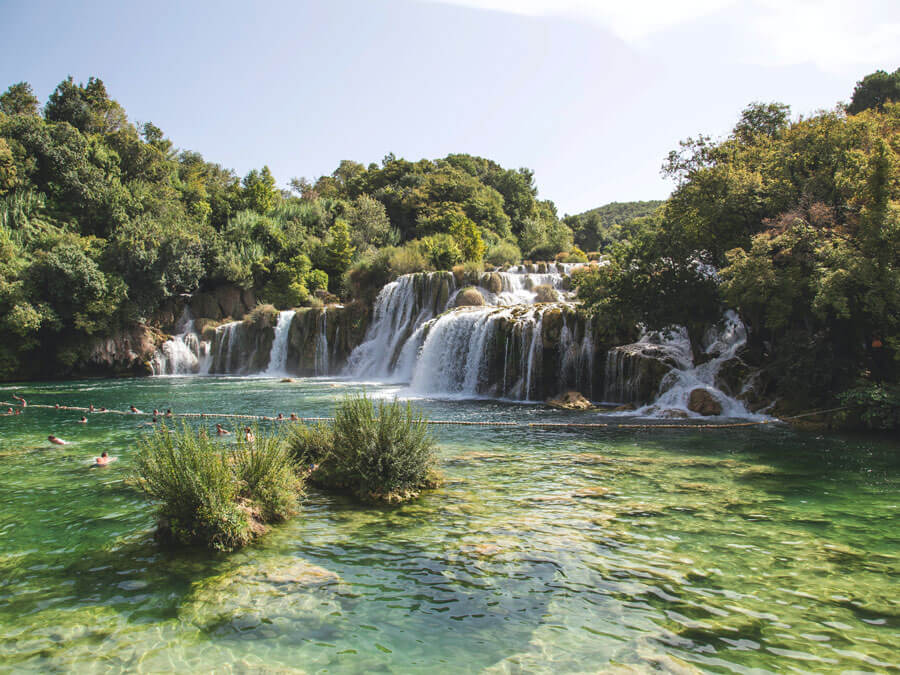
Summer (June-August)
The summer months are the best time to go to Croatia weather-wise, with July and August being the warmest.
The average temperature in June during the day is 26°С and the sea temperature is 23°С. In July, you can expect temperatures of around 29°С and sea temperatures at 25°С. August is the hottest month of the year in Croatia, with average temperatures of 30°С and sea temperatures at 26°С.
This is the high season and is definitely the best time for sun-seekers to take a vacation to Croatia.
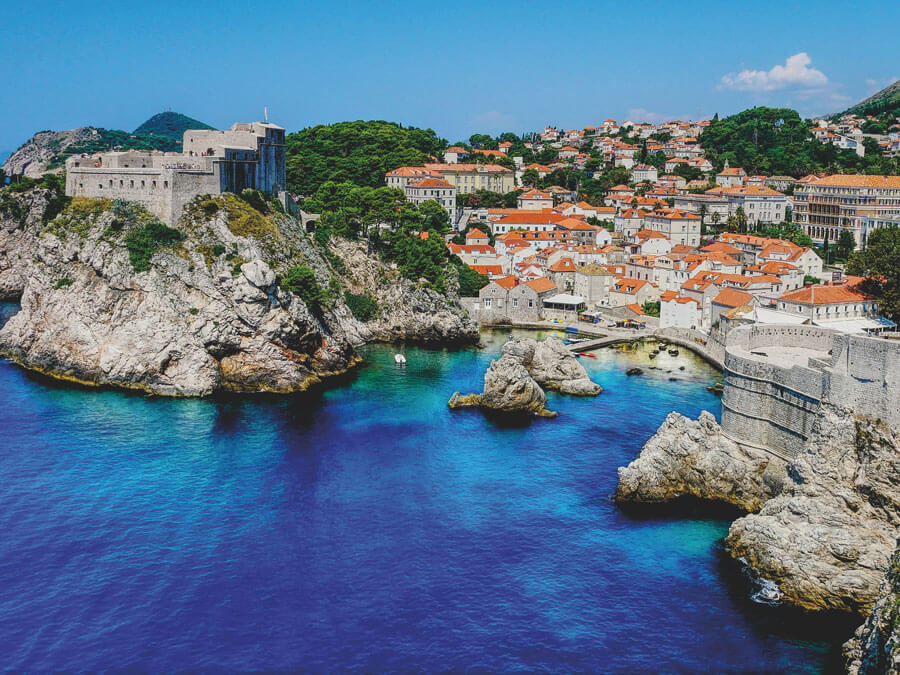
Autumn (September-November)
You’ll still get hot weather when you visit Croatia in the autumn. In fact, you can expect averages of 25°С in September and sea temperatures of 24°С. October has temperature averages of 21°С and 20°С for the sea.
In November, the temperature drops dramatically, with averages of 14°С and the sea at around 17°С. Early autumn can be an awesome time to visit because it’s still warm, but it’s not scorching hot like it can be in the summer.
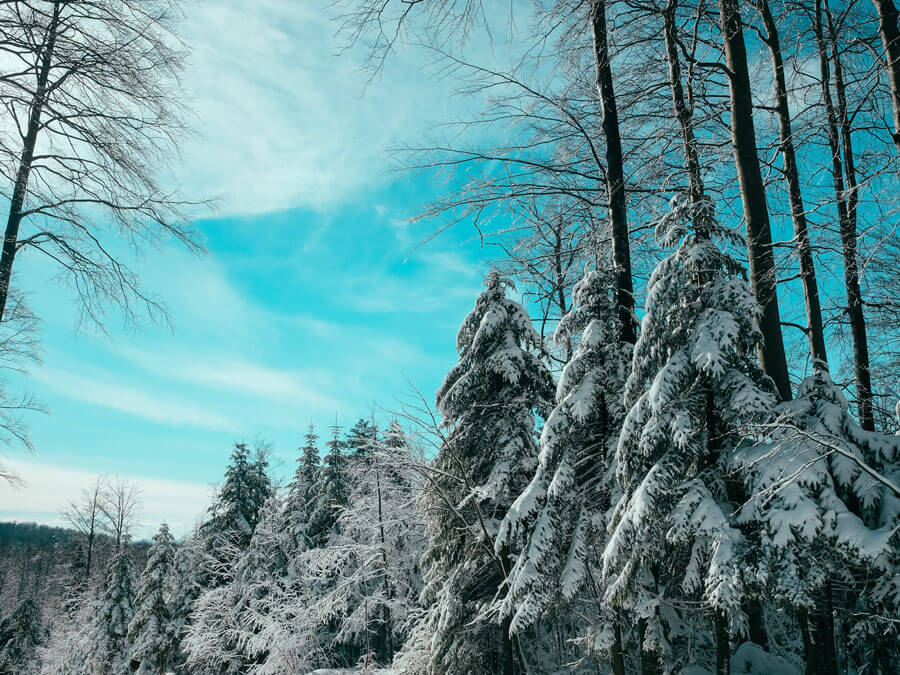
Winter (December-February)
Winter is cool throughout the country, with average temperature highs at 11°С in December, 10°С in January, and 9°С in February. February is the coldest time of year in Croatia. Winter is the only time of year in Croatia that the sea temperature is warmer than the temperature on land.
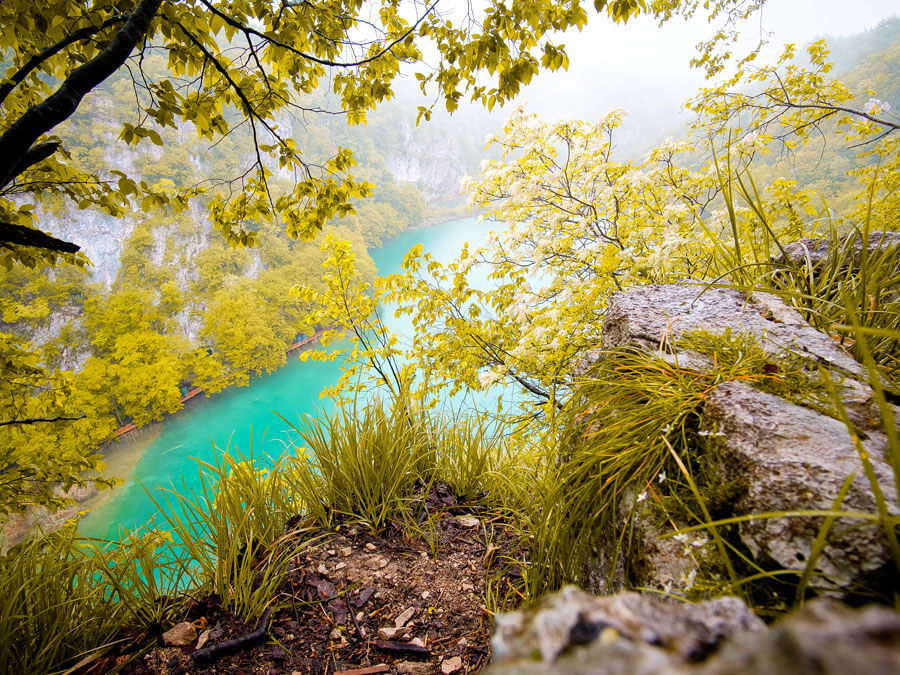
S pring (March-May)
Spring is when you can start to see temperatures rise again. In March, the average temperature during the day is around 13°С, in April it’s 17°С, and in May it’s 23°С.
May is when temperatures really start to get high again and the sea temperature will be around 19°С, so this can be a great time to visit.
When is the best time to go to Croatia?
After taking into consideration everything above, the best month to visit Croatia is June. Other brilliant months to go are May and September (when I personally went and loved). In May and September you can expect fewer crowds and lower prices, but still get warm weather.
If you don’t mind a bit of busyness, going to Croatia in July and August could be a great option for you, especially if you enjoy the hot weather or want to go island hopping. The summer is also a brilliant time to visit Croatia as it’s music festival season. There are some awesome music festivals in the country, but we recommend booking early to avoid disappointment.
Visiting cities such as Zagreb , Split , and Dubrovnik is great throughout the year and you should find that most attractions are open. However, in parts of the low season, bars, restaurants, and clubs close on the islands, even the most popular ones such as Hvar , Brac , and Korcula , so it’s far from an ideal time to go island hopping.
Since Croatia is on the Adriatic coast, it’s great for swimming because the waters are warm almost year-round. The waters are good for swimming, however, it can get windier and wetter during the winter, and the waters are colder, so we don’t recommend swimming in the winter unless you do it for a shock!
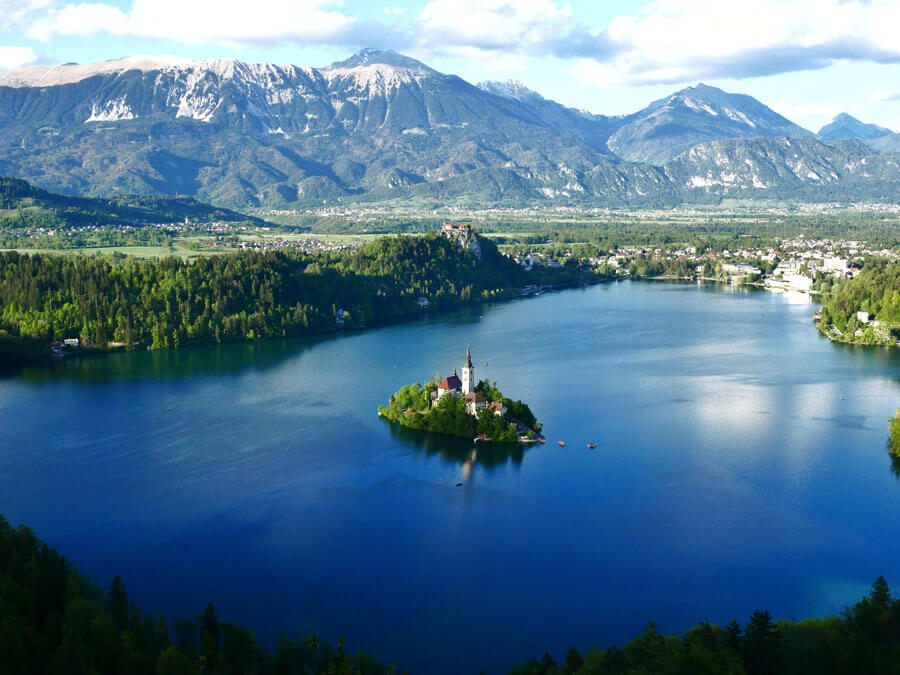
When is the best time to visit Croatia and Slovenia?
Croatia and Slovenia are neighbouring countries and are similar in climate, although Slovenia is a little cooler. The best time to visit Slovenia and Croatia are May and September, the shoulder seasons. Visiting during these months means that you get ideal weather without it being too hot or cold, fewer crowds are around, and prices are typically lower for flights and accommodation. September is your best bet if you want to see fall foliage, especially in hot spots such as Lake Bled in Slovenia , and Plitvice Lakes National Park in Croatia.
Enjoy your visit to Croatia, make sure to give yourself plenty of time, there’s so much to see and do!
Continue planning your trip to Croatia!
- Croatia Travel Tips & Guides
- Slovenia Travel Tips & Guides
Disclaimer: This post may contain affiliate links which I earn a small commission from and are at no additional cost to you. See my disclosure policy for details. Thank you for supporting my small business!
Disclaimer: Taylor’s Tracks is a participant in the Amazon Services LLC Associates Program, an affiliate advertising program designed to provide a means for us to earn fees by linking to Amazon.Com and affiliated sites.

IMAGES
VIDEO
COMMENTS
July is high season in Croatia, which means that most attractions are accessible to the public. Don't forget your trusty camera, spare batteries, and a travel charger. Encase them in waterproof bags, too. Croatia uses 220V, 50 Hz frequency, and type C & F plugs so get the right adapter and converter as well. 4.
June is the best time to visit Croatia if you're set on a summer holiday. The summer crowds haven't peaked, but the ferries are fully operating, and the weather is hot and dry. Still be sure to book everything in advance to avoid disappointment. July is the height of the event and festival season in Croatia.
Late spring and early fall are arguably the best times to visit Croatia. Sea temperatures are pleasant, and there's plenty of sunshine, but the country's pebble beaches and rocky coves are relatively quiet. With endless still seas, May and September are great times to sail in Croatia. Onshore, these are the best times to cycle, hike or ...
The best time to visit Croatia is during the shoulder seasons from late April to mid-June and September to October, with June offering perfect weather and fewer crowds. This period allows for pleasant swimming conditions and less congestion at popular spots, avoiding the peak season's overwhelming tourist influx in July and August.
The most popular time to visit Croatia for international visitors is summer (July-August). However, the shoulder seasons (May-June, September-October) offer milder weather, fewer crowds, and cheaper activities and accommodations. Croatia's summer months are full of sunshine and parties yet can get unbearably hot, while the shoulder seasons ...
Weather. July is Croatia's hottest month of the year, averaging 84°F (29°C) in Dubrovnik and 88°F (31°C) to 82°F (28°C) further up the Dalmatian coast in Split and Zadar, respectively. In the evenings, temperatures cool off to a welcoming 64°F-70°F (18°C-21°C), so you will want to pack light layers with your swimwear and sunscreen.
While June and September are still technically considered high season, there is a world of difference in crowd levels in places like Split and Dubrovnik. Shoulder season in Croatia is April to May and late September to October. During this time you have decent prices, few crowds, and zero cruise ships.
Here's your definitive guide to the best events and happenings throughout July in Croatia. Croatia really heats up in July - and we're not just talking about the weather. This midsummer month sees ...
The best time to visit Croatia is during the summer months, from June to September, when sunlight is plentiful and temperatures are warm, between 66°F and 86°F. These conditions are ideal for boating and swimming in the blue waters around the islands. The cooler conditions of April, May and October lend themselves to a wide range of other ...
Croatia is a gorgeous country on the coastline of the Adriatic Sea, also lining Austria and Hungary. There are so many things to do, unbelievable places to visit, amazing Croatian food to eat, stunning beaches to relax on, and gothic cathedrals. The official peak season starts in July. Buckle up for an amazing trip to […]
If you love the beach and sea, visit Croatia in the Summer. Croatia in July. July is the height of summer in Croatia, with hot temperatures and clear skies. Average highs range from 27°C to 31°C, with the sea temperature peaking at around 24°C, perfect for swimming and sunbathing. July offers an abundance of activities and events for ...
Another reason to visit Croatia in July is the several opportunities to enjoy the events and festivities. From dance festivals in Zrce to the cultural Dubrovnik Summer Festival, you will find entertainment for the whole family. Some of the most popular festivities in Croatia in July include: Courtyards, Zagreb
For a smorgasbord of activities, this is perhaps the best time to visit Croatia. Visiting Croatia in July and August. This is peak season on the Adriatic, drawing foreign travellers, as well as Croats to its sunny sands. And if you like to combine beach action with a buzzing café culture this is the best time to go to Croatia. However, with ...
Tourism is on the rise as more people think that now is the best time to visit Croatia. But the country has a long history of enchanting travelers with its natural gems. The Romans built summer villas on the coast of Croatia and came here for the perfect get-away from their ruling the Empire. ... During July, a lot of tourists drive to Croatia ...
In Split, the average temperature ranges between 21°C and 29°C in July. Zadar sees an average high of 27°C and average low of 21°C. In the capital city of Zagreb, the mercury fluctuates between 14°C and 26°C. Meanwhile, daylight hours in Croatia in July are longer than other months at more than 15 hours. For a seasonal overview, check our ...
Croatia in July. As one of the peak summer months, Croatia in July will be very hot, with the average high temperature along the coast climbing to the mid-80s, though it can surpass that. This is one of the best months to visit Croatia if you're after long days at the beach, where you can bask in the sun and relax.
May and June. May and June are ideal months to visit Croatia if you prefer milder temperatures and fewer tourists. The average temperature during this time ranges from 18°C to 23°C (64°F to 73°F), making it comfortable for exploring the country's stunning landscapes and historical sites.
Yet since you have to start somewhere, here's our rundown of the very best places to visit in Croatia. 1. Plitvice Lakes National Park. A turquoise ribbon of lakes linked by gushing waterfalls in the forested heart of continental Croatia, UNESCO-listed Plitvice Lakes National Park is an awe-inspiring sight.
The best time to visit Croatia is from May to June and September to October. These months are the best time to visit Croatia to avoid the crowds and intense heat of the peak season in July and August, but still experience warm, sunny and dry conditions. These shoulder season months are perfect for enjoying beaches, island hopping, sailing ...
Most are marked with FKK - the German phrase "Frei-Körper-Kultur," meaning free body culture - which isn't surprising as Germans make up some of the biggest numbers of tourists in Croatia. Away from the FKK beaches, topless bathing is quite common. 8. Dodge the crowds in Dubrovnik by timing your visit carefully.
High Season (July - August): If you're dreaming of sunny days and beachfront relaxation, consider visiting between June and August. These are the peak summer months, with warm temperatures, clear skies, and minimal rainfall. ... making it one of the best places to visit in Croatia. If you're looking for a more tranquil getaway, hop on a ...
A majority of tourists visit Croatia during the high season. The high season lasts from mid-June to mid-September. And the peak travel time is from the last week of July until mid-August. The high season is one of the best times to visit Croatia, as long as you avoid these three peak weeks. At this time, Croatia is in full swing.
Croatia is Full of Life, 12 months a year. Find out which month is for you, depending on your personality. Visit Croatia in April: Easter Traditions and the Start of the Season. Let the Swimming Season Begin! May in Croatia. June in Croatia: Summer without the Crowds. Visit Croatia in July: Peak Season Beach Heaven. Festivals, Beaches, and ...
The summer months are the best time to go to Croatia weather-wise, with July and August being the warmest. The average temperature in June during the day is 26°С and the sea temperature is 23°С. In July, you can expect temperatures of around 29°С and sea temperatures at 25°С. August is the hottest month of the year in Croatia, with ...
📍 Google Maps | Phone: +385 53 751 015 | Website | Hours: 8 am - 1 pm daily | 👉 Plitvice Lakes National Park Tour. Another one of the most beautiful things to do in Croatia, Plitvice National Park is a UNESCO World Heritage Site consisting of 16 beautiful turquoise lakes, over 90 waterfalls, and plenty of hiking trails and panoramic views. For a relaxed visit managed by local experts ...